

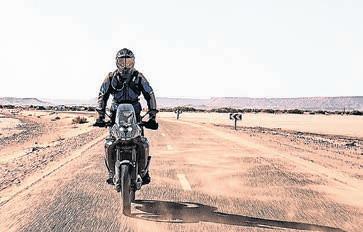


















































































































































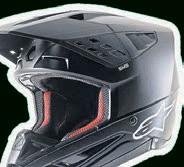
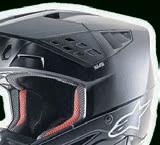

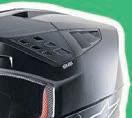













































































































































































































































ROYAL ENFIELD’S HUNTER 350 ADVENTURE EVOLUTION WORLD LAUNCH WINTER WARMERS WE RIDE the Yamaha Ténéré 700 World Raid UNDER THE SKIN of Gerbing Heated Kit TEST OF TIME BANGKOK OR BUST WITH Why the Suzuki Katana MATTERS THE LOWDOWN ON ALL THE BEST BIKES FOR 2023 Issue No 2022 URBAN RID NG FOR COOL CATS Roya Enfie d Hun e 35 CAN ADVENTURES BE ELECTR C? X RT R G REAL COS F DAKA IS HE THE TURES D TI D for the masses TS 350 LECT o DSR X says Issue 48 MSL nuary 2023 THREE FLAVOURS OF DUCATI Monster Multistrada, SuperSpor SuperSport Moto Guzz TOURING’S FUTURE A RN TO d an prese he Super Ch ef m t d TR ED & T Hea ed v st What th Januar 3 GREAT REASONS • DELIVERED STRAIGHT TO YOUR DOOR • FREE POSTAGE AND PACKAGING • BUY DIRECT FROM THE PUBLISHER D O N ' T M I S S O U T O N T H E N E X T I S S U E O F MS mb DING CATSnte 350 CAN ADVENTURES BE ELECTRIC? Zero DSR/X say yes! D X SER IS HE E TURES ◆ e goo 8 PRE-ORDER TODAY: www. classicmagazines. co.uk/issue/ preorder Antr m Coast Road Suzu G BAN RIDI FOR COOL Royal Enfie d Hunt R SCAN ME... Bringing YOU the BEST of biking for FREE ★WIN! ★ WIN! ★WIN! ★ W I !N ★ !NW ★ W I N! WINTER GLOVES WORTH £119.99
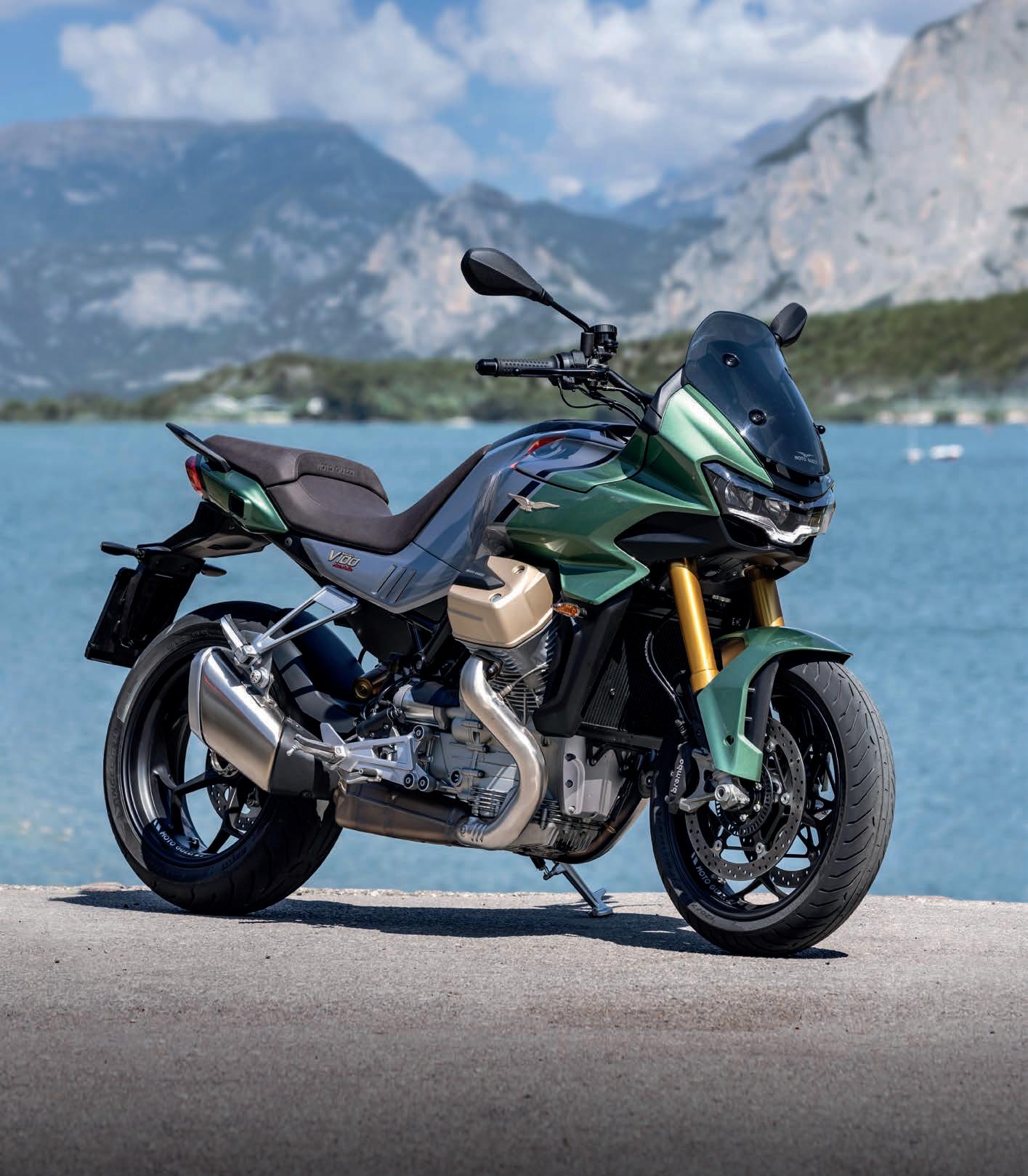
love this time of year. I know the weather’s been far from ideal for riding, but there’s enough good stuff going on to help me get my fill of biking right through the winter months without dreaming of the warmer weather to come.
Royal Enfield Super Meteor 650
The Indian factory’s twinpowered cruiser is finally here. This is what you need to know.
Royal Enfield’s finally revealed the bike that’s going to join its popular 650cc twins – but this time, it’s a cruiser.

The arrival of the new bike at the EICMA show in Milan a few weeks ago shouldn’t come as a massive surprise. We’ve been telling you it’s on the way for months, and even brought you leaked spy shots of the new machine. But now we’ve finally got all of the information about the retro-styled cruiser that’s been added to the Indian factory’s ever-growing range.
I'm writing this having just got back from a cracking day out at this year’s Motorcycle Live show. I know plenty of you grumble about the cost of parking and the price of food (and that’s fair enough...), but where else can you check out the biggest and best of next year's metal in the flesh, have a gander at the new gear coming to market, and have a natter with lots of cool people about bikes?The big news is that it’s powered by the same, tried-and-tested air-/oilcooled 648cc parallel twin as Royal Enfield’s much-loved Interceptor and Continental GT. But it’s been lightly tweaked, offering 46.4bhp available to play with (which is around half a horsepower less than the other 650 twins) – although it does produce the same claimed torque (although it’s now 500rpm higher in the range). The sprocket sizes have been changed and the gearbox position has been shifted slightly, too.
The Super Meteor also uses the same single 320mm disc and twopiston brake calliper set up as the other 650s, although the rear now has a slightly larger 300mm disc. They’ll have to work pretty hard though, because the bike weighs in at a healthy 241kg – although thankfully there is two-channel ABS on hand to help keep things in check.
There’s a new tubular steel frame, slightly swept-back bars and 740mm low seat height, which should help
the bike have plenty of appeal among shorter riders. Elsewhere, there’s 43mm upside-down forks with 120mm of travel at the front, twin shocks with 101mm travel at the rear, and a 19-inch front wheel and 16-inch rear wheel combination to complete its traditional cruiser look.
There’s actually going to be two slightly different versions of the Super Meteor to choose from. There’s the standard machine (as described above), and a tricked-out
NEWS 3
Perfect day out, I reckon. My eye was caught by the Super Meteor 650 from Royal Enfield; the Yamahapowered Caballero 700 from Fantic; and the little Dax from Honda – and I loved the look of the Gold Star scrambler concept on the BSA stand, too (even if it’s likely a long way from production). And that's just a few of them… What about you? Did you get to the show? What were you most impressed with?
The approach to Christmas also means we’re getting closer to one of the best bike races on the planet. The Dakar Rally. Kicking off in Saudi Arabia on December 31, it's the perfect antithesis to the wet, wintery days in Britain and offers the chance to see some seriously skilled riders pushing themselves and their bikes to the limit. Can’t wait.
Honda’s Rebel CMX1100T
The Japanese factory has revealed a new touring-ready model of its CMX1100 Rebel.


It might look as though the new CMX1100T is largely unchanged from the ‘standard’ bike, with the same chassis and Africa Twin-derived 1084cc parallel twin engine which kicks out a respectable but not earth-shattering 85.3bhp. Braking is looked after by a radial-mounted monoblock four-piston brake calliper and 330mm floating single disc up front and a twin single piston calliper and 256mm single disc at the rear, while suspension comes in the form of preload adjustable 43mm cartridge-
style forks at the front and a preload adjustable twin piggyback shock at the rear. But the big news is the addition of its new Harley-Davidson style half fairing (and accompanying flyscreen), and its set of hard panniers which offer 35 litres of storage capacity. Those extras do add a bit of weight to the bike, with the Tourer tipping the scales at 238kg in its standard guise, and then jumping to 248kg for the DCT version.
There’s still no official pricing for the CMX1100T, but it shouldn’t be much more expensive than the non-touring model which cost between £10,500 and £11000.
Tourer model with a roomier dual seat; a windscreen; touring-style handlebars; a passenger backrest; and some panniers, too. It also has more comfortable touring-style handlebars, and LED indicators.
There’s been no official news on price or availability as we went to press, but you have to expect a fairly wallet-friendly figure when it is revealed in the coming months. Chances are it’s going to do very well.
A whole load of updates for the funky tourer
control settings have also been tweaked. There’s also a new fly-by-wire throttle; cruise control; a new lighter, aluminium rear shock linkage; a new Garmin navigation-compatible 7-inch TFT display; redesigned handlebar switches; a USB-A outlet (with a 12V outlet under the seat); in addition to a newly-designed seat and a new adjustable screen. It’s a serious set of upgrades for the unconventional tourer, but we’ll have to wait a little bit longer to find out how much it'll cost and when it’ll be available.
Media Centre, Morton Way, Horncastle, Lincolnshire LN9 6JR Tel: 01507 529529 Editor Ross Mowbray Editorial design Fran Lovely, Mike Baumber, Charlotte Turnbull and Tracey Markham Publishing Director Dan Savage Publisher Tim Hartley Email editorial@morebikes.co.uk Production Editor Mike Cowton Group Advertising Manager Sue Keily Advertising Simon Meyer 01507 529310 Advertising deadline for February issue January 5, 2023 Sales and Distribution Manager Carl Smith Marketing Manager Charlotte Park Commercial Director Nigel Hole Customer services number 01507 529529
MoreBikes,
MB recommends bikesafe.co.uk Independently proven pick up: 67,717 copies


Yamaha’s Niken GT been happening this month...
rmowbray@mortons.co.uk A nod from the Editor
What’s
Festive fun...
I
lines are open Monday-Friday 8.30am-5pm Call
or visit classicmagazines.co.uk/MB10 or email subscriptions@mortons.co.uk
is published monthly by Mortons Media Group Ltd and printed by Mortons Print.
to MB and just pay the postage!
Also, I just want to apoligise to subscribers who've had a delay in getting the latest issues of the paper through their door. We're doing our best to make sure they’re out with you as quick as possible, but with ongoing postal strikes, there’s a chance you might have suffered a bit of a delay. Here’s hoping things get resolved as quickly as possible. Have a good ’un.
Editor
Telephone
01507 529529
MoreBikes
Subscribe
Yamaha’s Niken GT is being treated to some serious updates for 2023, including a new 890cc engine.
The engine is a variation of the tried-and-tested design used in the massively popular Tracer 9 and MT-09, and it’ll have 5% more capacity than the outgoing motor. There’s more clever stuff going on, including some redesigned intakes and a new exhaust. And to cope with the power gains, there’s a new slipper clutch and up-anddown quickshifter, while the bike’s rider modes and traction
The affordable cruiser gets the bagger treatment
NEW BIKES NEW BIKES
It’s been missing for a decade. But one of Honda’s most endearing bikes, the Transalp, is back for 2023, with a new 755cc parallel twin engine and chassis based around the same platform as the new CB750 Hornet. The original XL600 Transalp was launched in 1986, when adventure tourers were called ‘dual sports’ bikes – or just big trailies. The XL600 wasn’t at all sporty onor off-road, but it made a great practical everyday bike that could tour and commute like a good ’un. Rather like most adventure tourers today, in other words… Honda was ahead of its time, and the Transalp wasn’t a massive hit in sportsbike-obsessed Britain back then. But it sold well in Europe, and was overhauled twice, first to a 650 in 2000, then a 700 version in 2008, before going off sale around 2012. Fast-forward a decade, and with the CB500X offering a small ADV machine option and the (formerly 750) Africa Twin bumped up to an 1100, there’s a neat gap in the market for a new uppermiddleweight ‘Dual Sports’ Honda. And here it is. It’s a handsome looking beastie, with a much more purposeful stance than the rather soft early Transalps. The Unicam SOHC engine makes the same power as the new Hornet 750 – around 90bhp – though Honda reckons it’s got slightly different mapping on the ride-by-wire fuel injection, to give a more suitable throttle response for adventure touring work. The steel diamond-type frame looks very like the Hornet design, too, though the geometry and swingarm are tweaked for the new use with slower steering and longer wheelbase. Honda claims it’s optimised all the tube thicknesses and removed extraneous bracketry so it’s super-light – actually 10 per cent lighter than the frame on the CB500X, at 18.3kg. All-up weight is decent, if not stunningly svelte, at 208kg wet.

Running gear is adequate on paper: the Showa SFF-CA (Separate Function Forks – Cartridge) and rear monoshock have preload adjustment only, and the brakes use twin-piston sliding callipers up front with 310mm wave discs. Nothing exotic then – but being a Honda, you’d expect it all to work amazingly well despite the modest spec. The electronic riding aids are a bit more comprehensive: you get five riding modes; engine brake control; wheelie control; switchable ABS and traction control; but no mention of IMU-assisted cornering ABS or traction. It’s all controlled via a sweet 5-inch full colour LCD dash with Honda’s smartphone voice control set up, and there’s a USB-C charging socket under the seat, too.
Welcome back to the Transalp then – it’s a fairly tempting proposition, and we’d expect Honda to sell truckloads of ’em. That will depend on the price, which was TBC as we went to press. If the new Hornet is any guide though, it will be priced to sell when it arrives next spring.
4 NEWS
The iconic adventurer is back with a bang - and it’s powered by the same motor as the new Hornet.
NEW BIKES


Did you really think Suzuki was quitting the motorbike business?



















Well, it didn’t seem so outlandish earlier this year to be honest, dumping its MotoGP team; quitting world endurance; little in the way of future-proofed machinery; rehashing old engines seemingly ad infinitum. But Suzuki fans who kept the faith will be rewarded here, with not one, but two, brand-new middleweight bikes, using a completely fresh engine design.




First up is this – the V-Strom 800 DE. An allnew adventure bike to slot in-between the 650 and 1000 V-Stroms, it has the same powerplant as the new GSX-8S naked roadster (see pages 1617). That means a parallel twin DOHV 776cc design, with a patented new dualbalancer shaft set up, 270° firing order, ride-bywire throttle and a decent 81bhp peak power output.
It’s a little down on the likes of a Triumph Tiger 800, but well up for taking on the likes of a Ténéré 700 or Versys 650, on the power front at least.



As it deserves, the new motor gets a new chassis, but there’s little in the way of surprises. It’s fairly standard V-Strom



fare: steel tube frame; aluminium swingarm; family-style bodywork with big beak and a 20-litre fuel tank; and upright adventure-touring riding position. The Showa suspension set up looks good: 220mm travel and fully adjustable both ends, with 43mm USD forks and a piggyback rear shock, while the brakes have dirtstyle twin-piston sliding callipers and 310mm dual discs up front. Wirespoked alloy rims have a premium gold or black anodised finish, and carry semi-dirt tyres in 90/90 21-front and 150/70 17rear sizes, with tube-type rubber.
The electronics package is solid, if a little steady.

























There’s no fancy IMU assistance for the rider aids, but you have switchable ABS and traction control, with Suzuki’s ‘G’, or Gravel offroad, mode, which softens the power delivery. You can also turn off the rear wheel ABS channel for dirt use. It’s all controlled via a neat 5-inch full colour TFT LCD dash, and there’s a standard up/down autoblipping quickshifter, too.




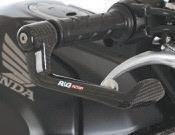




No price as we went to press, but the new V-Strom 800 will be on sale in the spring.
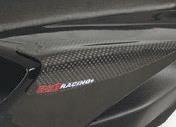
NEWS 5
The factory’s decided it’s time to update its much-loved adventure bike
Fantic Caballero 700 Scrambler
Yamaha-powered retro has plenty of appeal
The Caballero has been a big hitter for Fantic in recent years, so it should come as no surprise that it’s decided now’s the time to reveal a new, more powerful version for 2023. And with a Yamaha engine, Brembo brakes and Marzocchi springs, it looks like it’s going to be a winner.
The big news is that Fantic is making the most of its partnership with Yamaha, as the new Caballero 700 will be powered by the same 689cc, liquidcooled Euro5 engine as the Japanese
firm’s MT-07, Ténéré 700 and R7. That means the bike will have around 75bhp and 50lb-ft of torque to play with – which is a proper step up from the 40bhp and 31lb-ft of torque of the Caballero 500 Scrambler. That’s a good start, right?


There’s plenty more to get excited about though, with some VRMMarzocchi 45mm upside-down forks and a rear monoshock (with preload adjustment), and Brembo four-piston callipers grabbing a 330mm disc up front and a two-piston calliper and 245mm
Honda CL500
disc at the rear. It’s also going to come kitted out with cornering ABS, which will monitor the bike’s lean and fine-tune the brakes to suit. There’re more electronics in the form of traction control, three rider modes (road, off-road and custom) and TFT dash with Bluetooth connectivity.
The big Caballero will come with 19inch front and 17-inch rear aluminium spoked wheels, while the engine will be cradled in a single backbone-style frame which is attached to an aluminium swingarm. Above that will be a 14-litre
NEW BIKES
CFMoto 300 CL-X

The Chinese firm has announced that it’s adding an A2 licencefriendly version of its funky CL-X roadster to its ever-growing range.
It’s basically a restyled version of the factory’s 300NK naked, featuring the same trellis frame, cast wheels, radiator, swingarm and 292cc engine (which makes around 28bhp and 18lb-ft of torque). It’ll also come kitted out with a 37mm USD front fork; preload-adjustable rear shock; single 292mm front brake disc; 220mm rear disc; Continental two-channel ABS; and the same dash as its bigger 700cc brother.
With a friendly 795mm seat height and a claimed 155kg weight, the newest CFMoto should be perfectly placed for those working their way up the licence categories. There’s been no official word yet on pricing or availability, but with distribution being taken over by KTM in the UK, the future’s looking bright for CFMoto.
Honda’s a bit late to the ‘60s-styled retro scrambler’ party. But there’s definitely something sweet about this new CL500. It’s an homage to the firm’s CL72 and CL77 of the early 60s, which took the basic 250 and 305 CB/Dream engines and put them in a mildly tweaked off-road chassis. The 2023 CL500 does the same thing using the CMX500 Rebel cruiser as a base: the CL uses lightly tweaked versions of the parallel twin engine and steel tube frame, and adds a dash of scrambler style. There’s a 19-inch front wheel, rubber fork gaiters, and a high-level exhaust silencer. Power is an A2-friendly 46bhp, weight is around 192kg, and it will be in the shops next spring, price TBC.
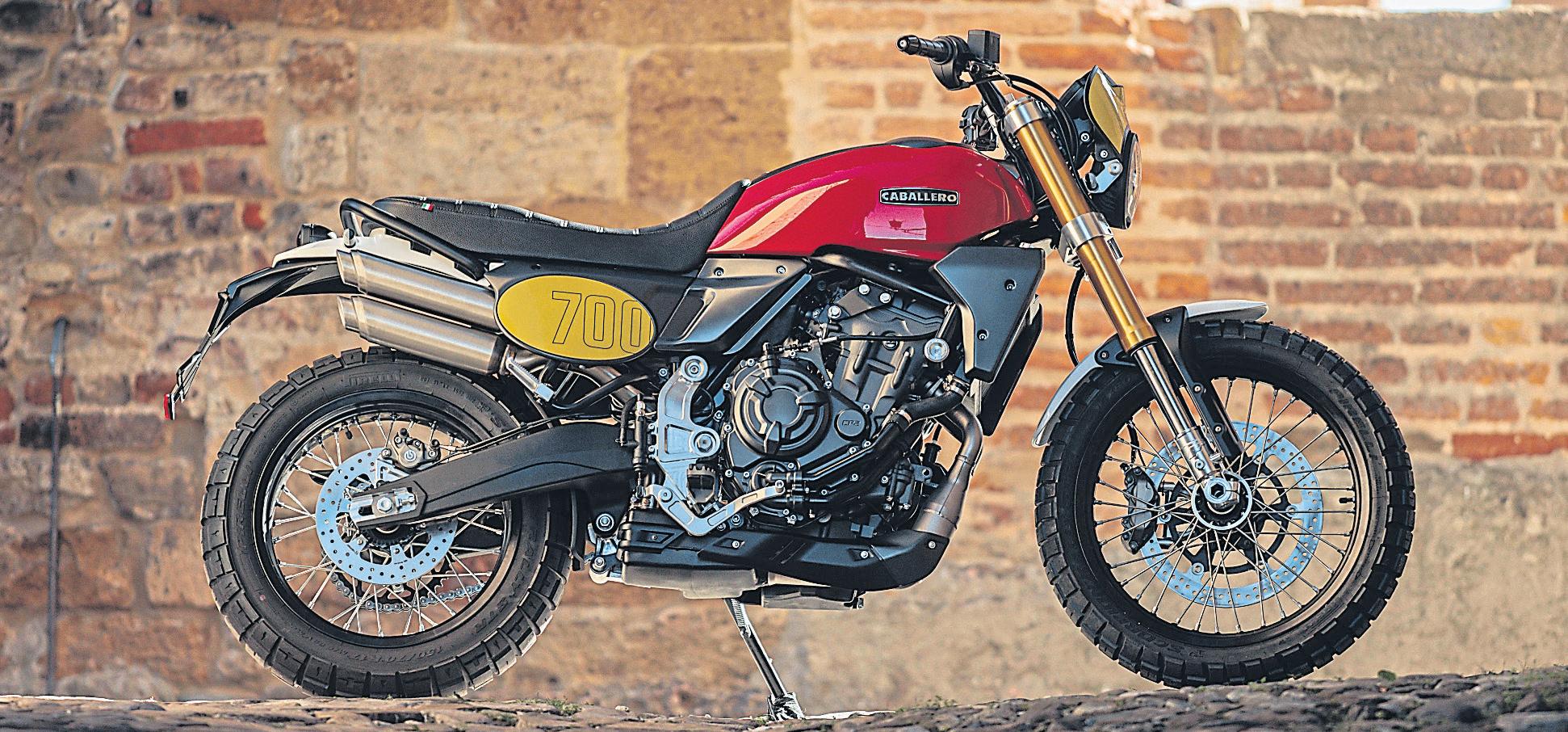
fuel tank. The seat will stand at 830mm tall, and the bike will weigh in at a respectable 180kg – which should help to make it manageable for most no matter whether they’re commuting in style or cutting-up some green lanes.
Expected to land in the UK next spring with a sub-£9000 pricetag, it’s by no means a cheap bit of kit, but with some quality components, a tried and tested engine and formidable looks, it could do very well indeed. We’ll be trying to ride one at the first opportunity.
Scramblers
Ducati’s entry-level brand has taken over some of the duties formerly carried out by the smaller capacity Monster range, serving as the gateway drug to Bologna’s stronger material. And for 2023, the firm’s given the little retro-roadsters a bit of a midlife tickle. The 73bhp, 803cc Desmodue engine has been treated to some flashy ride-by-wire fuel injection, which makes stuff like an up/down quickshifter and more sophisticated rider aids easier to implement. It’s also more compact and lighter by 2.5kg, mostly thanks to a new clutch and revised side covers. The frame is modified, with a new centrally mounted rear shock and updated swingarm, and there’s slightly sharper steering geometry. Add in a new 4.3-inch full colour LCD dash, LED lights and a USB socket, and you have a decent revamp.
6 NEWS
Latest addition to Honda’s ever-growing range of middleweight twins
Smaller version of the funky Chinese roadster adds to the list
Ducati
Updates for the firm’s retro range
NEW BIKES
Four pots for Ducati’s mental super-cruiser

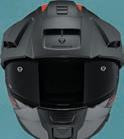
The Diavel is one of those bikes which, if you haven’t ridden it, is very hard to explain just how good it is. Back in 2010, Ducati took the best of its superbike powertrain and chassis kit and transplanted it into a cruiser-shaped device. Seemingly developed by the same engineers and test riders who made its Panigales, the result was, amazingly, a cruiser which went like a lowseated supersports bike.
The Diavel used Ducati’s superbike V-twin motor up until 2022, but with the firm moving its performance machinery to the V-four platform, the Diavel had to change for 2023. And what a change. The new Diavel V4 uses a version of the 1,158cc Granturismo motor as seen on the Multistrada, which makes 168bhp, and has massive 37,000-mile valve service intervals with 9k oil changes. You don’t get desmodromic valves, but you do get a slick cylinder deactivation system that turns off the back cylinders when idling and cruising under low throttle loads. That cuts fuel consumption, emissions, and heat


generated between your legs – cunning stuff.

























Probably the best part of the styling is the silencer design: it has four little exit pipes which look a bit like a Gatling gun, which is properly hilarious. Even more hilarious is the optional ‘Spitfire’ race pipe which has four inline outlets and adds 12bhp while cutting 11kg from the 223kg all-up weight.
The chassis and equipment are a mix of the sensible and the wild. In the former class is a 20-litre tank, 5-inch full-colour dashboard with navigation and Bluetooth integration, and full LED lighting. In the latter category are 50mm USD front forks; a 240/45 section rear Pirelli tyre; and launch and wheelie control, with IMU-assisted cornering ABS and traction control. Up/down quickshifter and Brembo Stylema brakes with 330mm discs almost go without saying.
Also in the ‘wild’ class is the price. £23,500 in this economy is a stiff set of numbers, and while you certainly get an awful lot of bike for that cash, it’s still a sobering sum.
NEWS 7
Suzuki’s new roadster: the GSX-8S


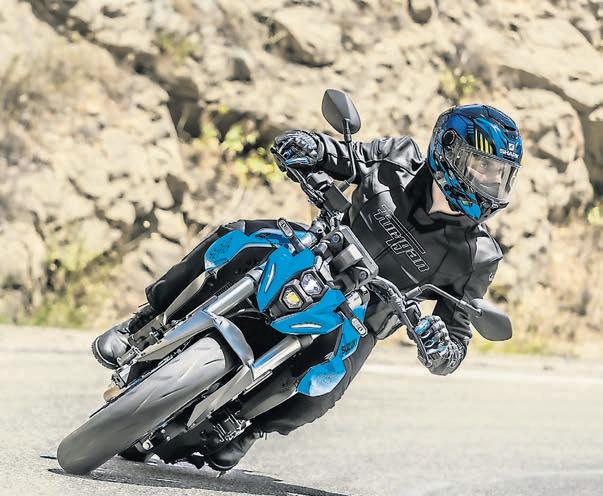
The headline news is its new parallel twin engine


































































































Launched alongside the new V-Strom 800 DE at Milan, Suzuki’s new GSX-8S streetfighter uses the same 81bhp, 776cc parallel twin engine in a straightforward roadster chassis, with a new steel frame, aluminium swingarm, capable running gear and a midrange electronics package. Designed to replace the GSX-S750 and its ancient GSX-R750-based engine foundations, the new twin gives Suzuki a smaller, more modern, economical and efficient (though less powerful) powertrain option going forward.
As with the V-Strom 800, the GSX-8S engine has the new patented Suzuki Cross Balancer system that uses two balancer shafts for better vibration reduction. The 270° firing order gives the ‘pulsing’ power delivery of a 90° V-twin, but with the lower production costs of a parallel layout. Only having one cylinder head and block to machine, and one assembly step rather than two saves time and money – it’s no shock that so many firms now use inline twins for their middleweight machinery: Kawasaki, Honda, Yamaha, KTM and now Suzuki.
The rest of the GSX-8S is fairly sensibly designed, too. The chassis is built around a steel tube frame rather than fancy cast aluminium, while the suspension offers preload-only adjustment on the rear shock, and unadjustable forks. All-up weight is a little bit hefty, at 202kg ready to ride, which is down to the steel frame no doubt (though Honda’s similarly-equipped Hornet 750 is a chunky 12kg lighter).
You get four-piston radial mount front brake callipers mind, with 310mm discs, and a sporty 180-section rear tyre fitting. The electronic rider aids have no IMU assistance, but there is a standard-fit up/down quickshifter, colour LCD dash and four-way traction control.
It all adds up to a fairly typical Suzuki recipe of late: sensible tech levels and solid performance at a great price. There’s no word on the cost as we go to press, though – we imagine Suzuki has had to do some hard thinking when it saw the bargain £6,999 tag on the Honda CB750 Hornet launched a few weeks earlier.
NEW BIKES
The final MotoGP round at Valencia might seem like a weird place to launch a new middleweight roadster. But of course, it’s the perfect place for Triumph to launch its new Street Triple range, since it’s that bike’s 765cc triple engine that powers the Moto2 race class, as the control powertrain.
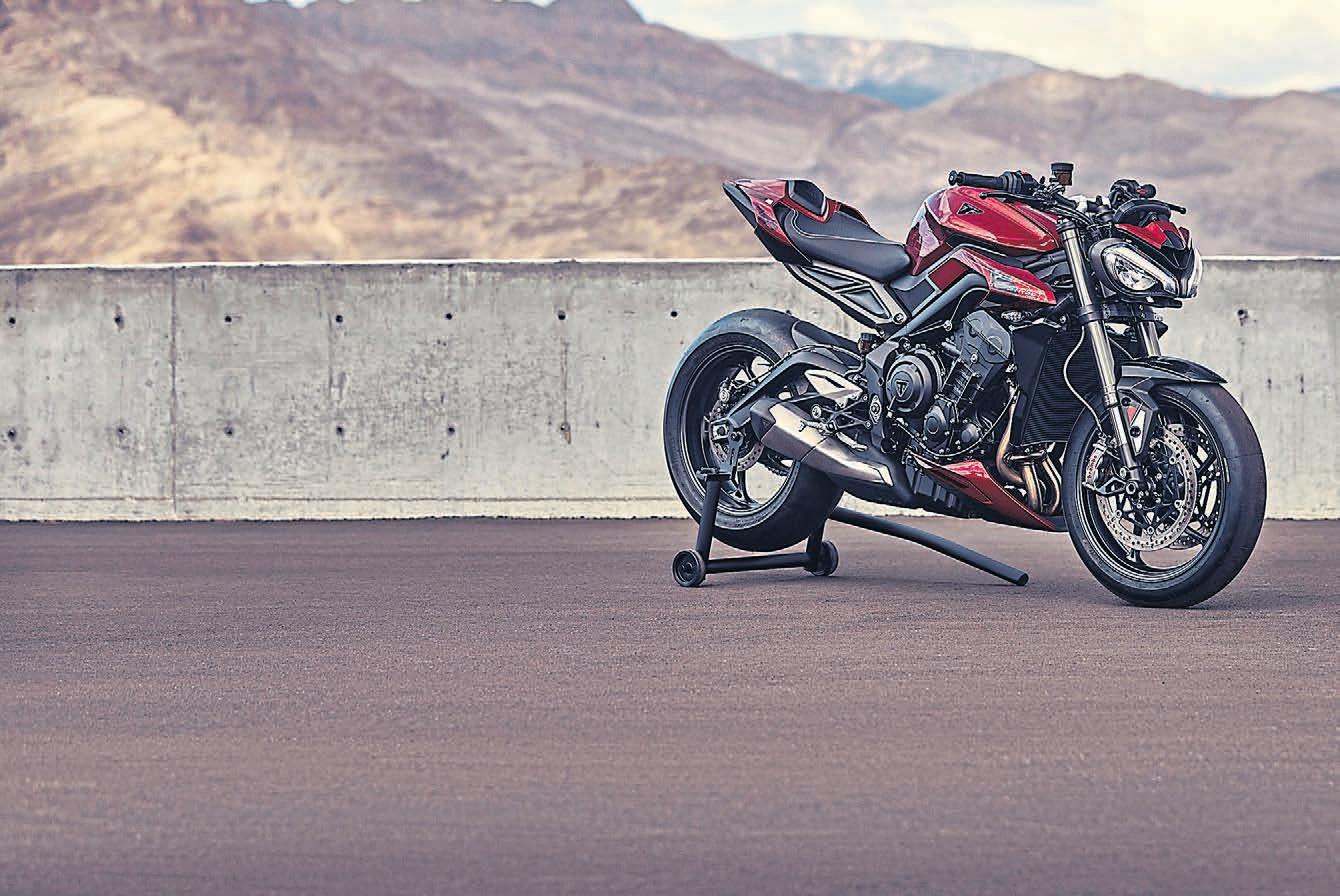
And it’s that engine which is at the heart of much of the 2023 update to the Hinckley firm’s excellent naked machine. There’s an all-new top end, that includes refreshed intake port geometry, shorter intake trumpets, tweaked cams and valves, plus a new combustion chamber design. Compression is higher, up to 13.25:1 from 12.65:1, and there are tougher pistons and conrods to cope with all that extra pressure. The bottom end doesn’t escape attention either with a fettled crank, balancer shaft, clutch and gearbox. For all the fiddling, the engineers got an extra 7bhp, with the base R model now making 118bhp and the top-drawer RS variant putting out a full 130bhp. You get uprated electronic aids to help contain all this, too: a new IMU-assisted ABS and traction set up, with five riding modes, wheelie control and a lap timer, all controlled via a colour LCD dash.
Compared with the engine and electronics mods, the chassis changes are less sweeping, with Triumph sticking to the same basic frame and swingarm design. The back end has been lifted to quicken the steering and there are new Brembo Stylema front brake callipers on the RS, together with an Öhlins STX40 rear shock and Showa BPF front forks (the R model has Showa kit all round).
The biggest story though, is a new Moto2 edition of the Street Triple, complete with official licensed logos. It’s got a higherspec chassis, though the motor has the same spec as the RS, with Öhlins NIX30 front forks to match the rear monoshock.
The Moto2 bike also has clip-on bars, a sportier riding position, and a slew of carbon bodywork: front mudguard, side panels, headlight surround, belly pan and exhaust. Prices are not at all unreasonable: £9,595 for the R, £11,295 for the RS, and £13,795 for the Moto2 limited edition.

8 NEWS
Big changes for the street-focused pocket rocket from Hinckley
BIKING ON A BUDGET
RACETRACK READY
We know, we know! The title of this series is ‘Biking on a Budget’. How do we call a little over £1300 ‘budget’?
Consider this: All the kit here is intended for road and track use. This kit is designed to be used at higher speeds than any other.
And if it goes wrong, the level of protection you’re going to need is commensurately higher.
We’re looking at a lot of leather and a lot of high-tech materials. And that costs.
You can easily spend over £1000 on a set of leathers, and that’s not featuring an airbag!
Yes, you could find cheaper kit, but we’re confident everything featured here will take care of your skin if it goes wrong, even at serious speeds.
Richa Baracuda Suit
From £519.99 / www.nevis.uk.com
A set of one-piece leathers can cost an absolute fortune – so at just over 500 quid, these one’s from Richa offer some serious value for money. They’re constructed from 1.3mm thick abrasion-resistant cow leather, and feature perforated leather on the chest, arms and lower legs; a mesh lining; quality D3O shoulder, elbow, knee and hip protection; hard sliders in the important areas; and knee sliders, too. There’s also neoprene around the collar, wrists and ankles, accordion stretch panels on shoulder blades, elbows and lower back, and even a speed hump.

Shark Race R Pro
£499.99 / www.nevis.uk.com
Shark knows what it’s doing when it comes to helmets. This one was developed to meet the needs of a top-level racer, and it neatly blends lightness, stability, comfort and ventilation. The cool stuff is its double blade spoiler which helps to offer advanced aerodynamics. There's also a class 1 visor with variable density, a patented four anchor point visor safety lock and a magnetic chin strap.

TCX RT Race
£249.99 / www.nevis.uk.com
The RT Race are designed for the track, with all the features you’d expect to take care of your feet and ankles should the worst happen. Constructed from wear-resistant microfiber and featuring an internal lining of breathable AIR TECH mesh fabric, the boots get the all-important reinforcements in key areas, plus an anti-twist Double Flex Control system – a polyurethane joint in the ankle area which controls movement and offers joint support and flexibility to prevent dangerous twisting and limit the risk of injury. A Fasten Fit Control system allows you to get the boots on and off in a flash.

These are a cracking pair of gloves for the money. They look good, but most importantly, the full goat leather palm, and external protection shells for metacarpals and palm offer plenty of protection. Comfort and usability hasn’t been compromised though, as they also feature pre-curved fingers and easy-to-use Velcro double cuff and wrist straps.

PRODUCTS 9
GET
GET KITTED OUT FOR £1369.96
Furygan Higgins Evo
£99.99 / www.furygan.com
You might not have heard of Ruroc before – but the British-based firm has been about for years, using all its experience of creating stylish and seriously capable helmets for snowboarders to create some quality lids for bikers. It’s been frequently fine-tuning them for the last few years, and now Ruroc reckons it’s come up with its best helmet to date: the Atlas 4.0.
There’s little doubt it looks good, with more than a shade of the now iconic Simpson Bandit about it – but style isn’t everything, and the Ruroc needs to hold its own on the safety front to be a serious contender in the hotlycontested helmet market.
Thankfully, it does. The big news is that the Atlas 4.0 meets the super-strict ECE 22.06 helmet standards. That means it’s a properly capable bit of kit, which is well up to the job should the worst happen and you end up trading blows with the Tarmac (or worse). It’s an impressive feat, particularly when you consider how few firms have managed to get their lids certified to the same standard, which involves some rigorous testing across 12 additional impact zones; features tougher thresholds; and includes an oblique impact test
(which measures rotational acceleration).

Ruroc’s managed to meet such a high standard with some clever technology –namely, it’s collaborated with technology brand RHEON, using a reactive polymer which ‘intelligently strengthens when subjected to force’. It’s similar stuff to the D30 armour that’s becoming increasingly popular in bike jackets and trousers, but Ruroc reckons it’s perfectly suited for motorcycle helmets – particularly when it’s paired with a three-part multi-density EPS structure.
There’s good news if you do end up crashing, though. Ruroc actually offers a ‘crash replacement’ service for an additional £30, which allows you to purchase a new helmet (or the necessary replacement parts) for 50% off the full price if you have an accident within two years of buying it.

Away from its safety credentials, the Atlas 4.0 has all the usual features you’d expect from a top-quality helmet. It comes equipped with a whole load of venting. There’s holes at the chin, another pair on the top, and two exhaust vents at the rear. There’s a Pinlock-compatible visor (although you’ll have to splash out an


additional £25 for the Pinlock 70 to fit it), though there is a dark visor thrown in for the price.


There’s also a fully removable liner, integrated pull-tabs to make it easier to remove the helmet in the event of an accident, and a funky magnetic fastening system. Called the ‘Fidlock’, you simply align the two sections and it’ll slot into position securely. Clever stuff
It’s also compatible with Ruroc’s own Shockwave Bluetooth Audio kit. It’ll set you back an additional £150 on top of the price of the helmet, but for your money you’ll get a microphone, some speakers, a main unit and battery. It’s been cleverly designed to make it easy to install – with space for the speakers and a slot at the rear to hold the main unit and battery.
It’s by no means a cheap lid – coming in at £375 for the plain colour versions, £425 for one with graphics and a whopping £475 for the Raw Carbon’ version – but when you consider the level of technology built in and the cost of equally capable competition, the Ruroc doesn’t seem too badly priced at all. And of course, it looks fantastic.
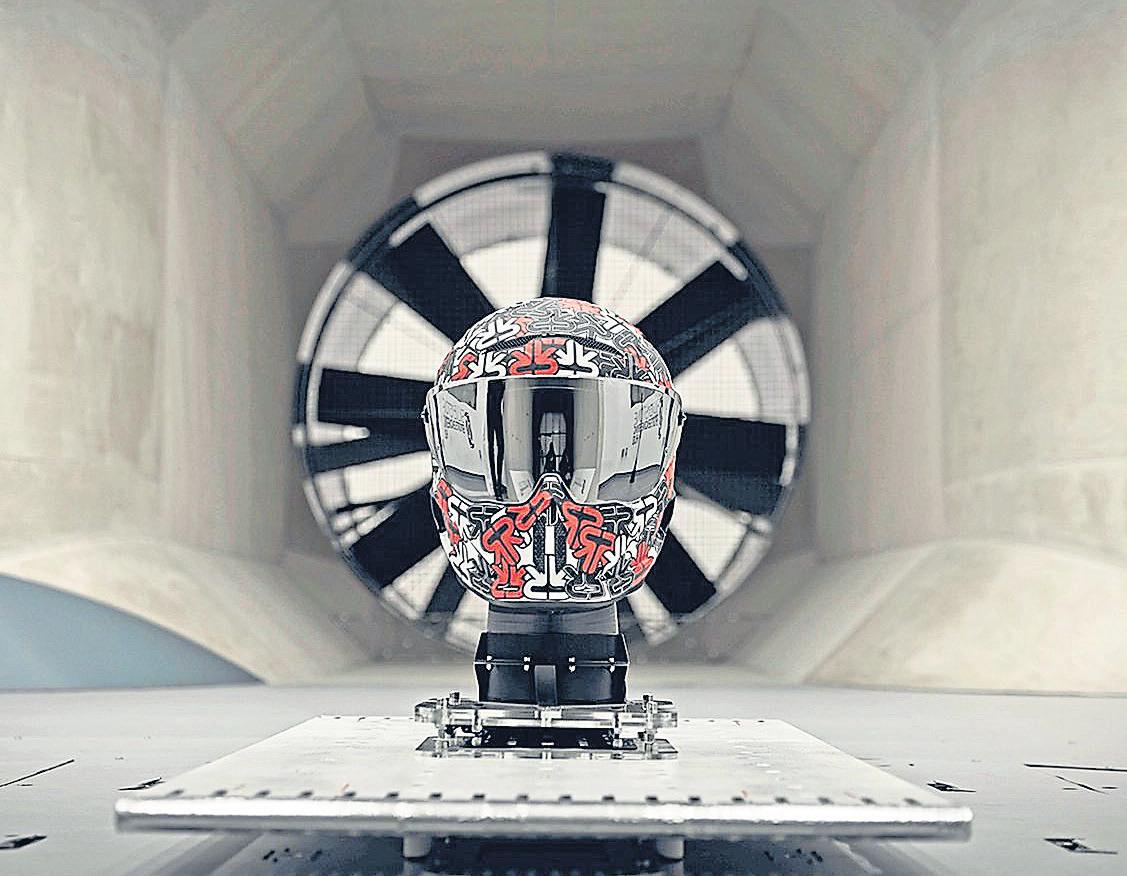
10 PRODUCTS
Ruroc Atlas 4.0 £375 / www.ruroc.com The inside line on the sophisticated streetfighter-styled lid from the growing British firm ✪ PRODUCTS ✪ PRODUCTS ✪
QUIZ MOREBIKES
We love a bit of trivia here at MoreBikes. No matter whether we’re at a pub quiz with a beer in one hand and a pencil in the other, or being questioned by our mates when we’re stood around at a bike night, there’s something about knowing the answer to an unexpected question that gives us a
nice fuzzy feeling inside. And if we don’t know, then there’s a good chance we might learn something. That’s cool, too. That’s why we’ve decided to introduce a regular quiz section sponsored by our good pals at Fowlers (who’ll be supplying the prizes).
We’ll be asking you questions about all manner of two-wheeled stuff,
Which rider won the 1997 500c Grand Prix World Championship?
Who was the first rider to complete a 100mph lap of the Isle of Man’s Mountain Course in 1957?
In 2019, Honda celebrated selling how many Super Cubs since 1958…?
In which year did the first generation Suzuki Katana go on sale?
Which motorcycle won the first-ever Paris-Dakar Rally in 1979?
pushing your memories to the limit and asking you to dig deep to try and remember all manner of strange stuff from right across the world of bikes. It’s a chance for you to show off your infinite two-wheeled wisdom and be in with a chance of winning some cool prizes, or if not, learn a few things that you might not know.
When did Honda’s Transalp first go on sale?
In which year was Royal Enfield founded?
In which country was the first motorcycle invented?
Which rider stood in for Steve McQueen in the 1963 film The Great Escape?
Cold hands are horrible. But you won’t have to suffer much longer with these all-weather gloves from Weise. The Montana is lightweight without compromising on warmth, offering a full grain leather and polyester construction, a Hipora waterproof, windproof and breathable membrane and a 150-gram Thinsulate Supreme inner liner. For protection there’s TPU knuckle and finger armour, padded fingers and dual-layered leather in critical zones. There’re also wrist and finger stretch panels for added flexibility; an adjustable wrist strap; Chamude palm overlay for improved grip; 3M Scotchlite piping for added night-time visibility; and an integrated visor wipe on the finger. What more could you need?
To be in with a chance of winning, all you’ve got to do is jot the answers down on the entry form, and send it in using the details provided. We’ll then pick the winner from an upturned helmet crammed with correct answers – and that person will be sent a brandnew pair of Weise Montana all-weather gloves – so no more cold hands! It’s that simple. So, what are you waiting for? Get cracking for the chance to win. Good luck!
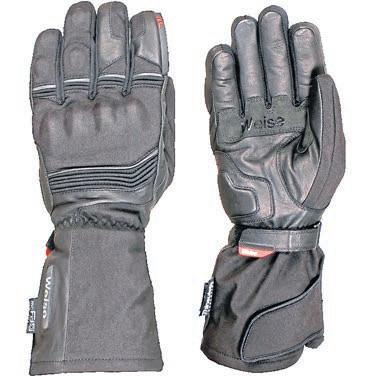
COMPETITION 11 Here’s the legal bit that you need to know Fill in your details on the form or enter online and return to: MoreBikes, Weise gloves, 2023 Competition, Mortons Media Group Ltd., Morton Way, Horncastle, Lincs LN9 6JR. Competition closes: January 13, 2023 ANSWERS: 1.......................................................................... 2. .................................................................................. 3. ............................................................................. 4. ........................................................................ 5. .................................................................................. 6. ............................................................................. 6. ........................................................................ 7. .................................................................................. 8. ............................................................................. 9. ........................................................................ 10. ................................................................................ Mr / Mrs / Miss / Ms (please circle) First name:...................................................................................... Surname:............................................................................................................................... Address:....................................................................................................................................................................................................................................... Town/City:........................................................................ County:.......................................................... Postcode:.................................................................... Email:............................................................................................................. Telephone:............................................................................................................ There are no cash alternatives available. The winner(s) of the Weise gloves will be the first name(s) drawn at random from the upturned MB helmet. YOU can also ENTER online! Just check out the MoreBikes social media channels for more information. Terms and conditions apply. To view the privacy policy of MMG Ltd (publisher of MB) please visit www.mortons.co.uk/privacy Did you get them right? French, 2021, TVS, 240, KTM 890 Adventure, 245kg, Biarritz, Suzuki GSXR750, Suzuki, Royal Enfield The
WIN!
first Harley-Davidson
famously used which kitchen item as a carburettor?
THE
HOW TO ENTER LAST MONTH
It’s time to get out your pens and pencils and put your grey matter to the test.
£119.Worth99
✂
2 5 8 3 9
1 10 4 7
6
Q&A
Our specialist motoring solicitor Andrew Prendergast guides readers through their legal trials and troubles
Q
I am utterly confused. Please help us! Over the summer I was riding along a country lane with my wife on the back. I have an array of different bikes (I am truly lucky) and that evening we decided to jump on the Gold Wing. It’s a big old lump, but it’s super comfy! The ultimate aim was to get to a pub by the river about 30 miles away from home and have some dinner. Whilst my wife rides herself, she was eyeing up a glass of wine with dinner and she would never drink and ride, hence why she was on the back as my pillion. The sun was shining, we had the stereo blasting and life was good. I can’t remember what happened next and neither can my wife. However, apparently a witness behind us says I was slightly on the wrong side of the road and then clipped an oncoming car and fell off. I wasn’t too badly hurt (I feel so guilty) but my wife broke her wrist, ankle and eye socket. She works as a supermarket manager on the shop floor. As she cannot walk, etc., she has been unable to go back and has lost money. My insurance company has kept telling us for months that we need to wait to see how she heals up and they will advise and help her. However, when I spoke to a different handler recently, I was told my wife should get her own solicitor as they now can’t talk to her or help her directly. I was raging. What should she do?
AYour wife should get independent legal advice now. She should not delay. Whilst it may be a bitter pill to swallow, it looks like the collision was your fault so she can sue you by reason of her being an innocent pillion. Whilst that may sound weird, i.e. a wife sues her own husband, legally it is not uncommon. You pay insurance and they will have to cover you and pay out for your wife’s injuries and losses that you caused. As for the injuries, I suspect she will need to get an orthopaedic and ophthalmic opinion with a view to evidencing her losses that have arisen from the collision. Whatever your wife does, she needs to get some independent legal advice. She should not rely directly on your insurer to advise and help her and they should have told you/her that at the start.
QLast year I was trying to get across town for ajob interview. Unfortunately, I was running late so decided to take my MT-07. The traffic was heavy, so I started overtaking using an area of white diagonal stripes. I was desperate to be on time as I hated my old job. Despite it being a 50mph limit, I wasn’t going that quick, i.e. around 45mph. Up ahead I could see a transit van start to indicate and swing out of the queue to do a U-turn. In my helmet I was saying ‘you cheeky git’ so I beeped my horn a few times and flashed my headlight. The van driver looked like
The MB legal column is compiled by managing partner Andrew ‘Chef’ Prendergast and his bike-riding barristers and solicitors at White Dalton Motorcycle Solicitors.



The firm deals with personal injury claims and its sister company, Motor Defence Solicitors, deals with all the motoring offences. White Dalton lawyers have a vast knowledge of bike law, and
they have full bike licences, too. They don’t act for insurance companies or the prosecution. White Dalton is Britain’s premier specialist motorcycle law practice, and if its professionals don’t know the answer to your question, there probably isn’t one. Don’t rely on the advice from your insurance-appointed solicitor, get proper independent advice.
he hesitated, so I thought he had seen me and went to crack on. However, he then just swung out. I managed to get on the brakes but couldn’t avoid hitting him and smashed into the side of the van. Anyway, last week the matter went to trial and whilst I won, the crusty old judge said I was 30% to blame for the accident because of my speed; because he said I had time to see and react to the van; and because he said I was overtaking on the stripes. I am not happy and have threatened to sue the judge. I need to stress the striped area was bordered by a broken white line, i.e. not a solid line so legally I could ride there. What do you think?
AYou cannot ‘sue’ the judge but you could try and appeal the decision if the judge has got it wrong legally. If you want to do that, the general rule is you must lodge your appeal within 21 days of the judgment. However, before you go off on a frolic, it’s important to remember that every case turns on its own facts, so the judge has made a decision after he has heard all of the evidence. What I would say is that Rule 130 of the Highway Code states: ‘If the area is bordered by a broken white line, you should not enter the
area unless it is necessary and you can see that it is safe to do so.’ Whilst I can follow what you did, it is certainly arguable it wasn’t ‘necessary’ for you to be overtaking using the striped area. In addition, whilst not riding in excess of the speed limit, a judge may well have been entitled to find you were riding ‘too fast in the circumstances’, i.e. overtaking stationary cars on the stripes; and that you failed to react in time to a hazard you had seen. Whilst it may be a bitter pill to swallow, 70/30 in your favour sounds like a fair result in my view and appealing could just cost you a lot of money. Speak to your solicitor first before heading down the appeal path.
For road traffic offences, call the Motor Defence solicitors on 0800 280 0912.

For non-offence cases, call White Dalton motorcycle solicitors on 0800 783 6191.
If you need advice on a biking-related legal question or query, email mail@whitedalton. co.uk. The best Q&A will be published in MB, in confidence, of course.

12 WHITE DALTON
S O L I C T O R S www.whitedalton.co.uk






For the best news, innovative features, top tech talk and practical tests, head to Fast Bikes

Celebrating the rich, colourful and varied history of motorcycles and motorcycling, then and now.
Your guide to buying, running and owning a classic bike. Broad minded with a practical twist.
Gardeners consistently vote KG as Britain’s best magazine for those who love to grow fruit and veg.

Real bikes. Real riders. Real rebuilds. Real Rides. RealClassic!
* Get SEVEN issues of RC for just £20


The bible of the British American car scene for 33 years.

If it’s American and got wheels, we’ve got it covered!
Classic, twinshock or Evo, CDB’s the place for you to dive into the dirty side of biking.
Recalling the steam era of Britain’s railways through photographs, recollections and historical features.


The larger-than-life personalities, the legendary bikes and the race track heroes who mattered then... and still matter now.
The best news, features and stunning images covering Britain’s preservation railway movement.


Real-world tests of the latest bikes and kit, places to go and features you don’t want to miss.
Enthusiastled content, authoritative news, in-depth

Running, riding and repairing Japanese, European and US classics from the 70s, 80s, 90s and into the noughties.
The original British custom bike magazine… and still the best. Choppers, bobbers and all kinds of customs!










features and outstanding imagery. News and features
and everything
All that’s best in the world of classic and
For
by
TERMS & CONDITIONS: Rates are based on UK orders only – for overseas please visit: www.classicmagazines.co.uk/ Subscriptions will start with the next available issue. Offer closes 31/01/2023. For six-monthly subscriptions direct debit payments will continue at the price you paid every six months thereafter unless you tell us otherwise. Full terms and conditions can be found at www.classicmagazines.co.uk/terms Try one of our other great titles... Plus try these great titles too: Old Bike Mart brings you the latest views, news, plus a whole host more from the classic world. Towpath Talk is
leading waterways title, with the latest news, features and reviews Get your gift subscription today! Get 6* issues of one of these mags for just £20 £20 for a year's worth of Old Bike Mart £16 for a whole year of Towpath Talk Visit www.classicmagazines.co.uk/xmas22DPS Or call 01507 529529 and quote 710 You can get the latest motorcycling news and views delivered to your door thanks to our great value MoreBikes subscription offer. A whole year’s worth of views, news, bike and product reviews, places to go and top riding tips, all for just £16 a year – that’s less than the cost of five posh coffees! And if you’re looking for a great Christmas gift idea (or want to drop a hint to those with no clue what to get you!), and you have a friend or relative who’s mad about motorcycles, loco about railways, potty about plants or thinks American cars are fin-tastic, have a look at the great offers for these titles in our range, and treat yourself, or a pal, to a big-value subscription. Christmas gift that revs your engine The If you enjoyed this issue, subscribe or renew for A FULLYEAR for JUST £16 Visit www.classicmagazines co.uk/ xmasmb or call 01507 529529 and quote XMASMB 14
expert
from across the UK catering for the modern traction and heritage modern traction enthusiast. The UK’s best rail title since 1897 – covering modern and steam
in between.
modern scooters.
enthusiasts,
enthusiasts.
Britain’s
We love to see what you lot are riding – and we know the rest of you like it, too. It’s just like pottering around a bike night and checking out what’s been brought out for a ride. Now we’ve decided to bring the bike night to you, asking readers to send us
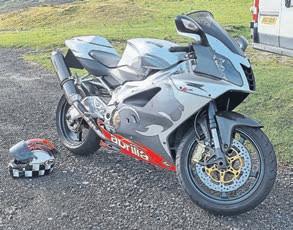



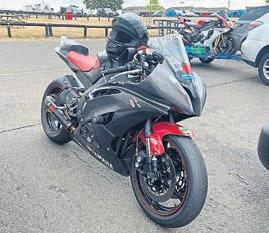



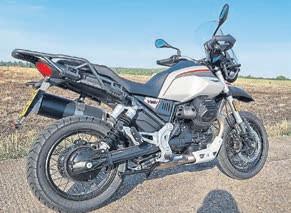






of their




























for the world to see. Here’re some of our top picks from the last month.
 We love the funky paintjob on Sparky’s 2010 Yamaha R6
Jay Coddington’s lean and mean Suzuki GSXR
Neil Wilson’s Moto Guzzi V85TT. One of our favourite bikes of the past few years… love that thumping twin
Bradley Parr’s immaculate MV Agusta Brutale 910
Kevin McCabe’s Kawasaki ZX6R. “Eighteen years old and still turning heads!”
Paul Colson’s Norton Commando Café Racer flies the flag for Britain
Dan Whelan’s Yamaha R6 looks ready for some trackday fun
Bellissimo. Mark Willis’ sensational Ducati 1098 soaks up the sun
Richard Cooper’s Suzuki DT175G from 1980 standing proud on Bournemouth Seafront. “After a 40-year gap I recently purchased this US import and it’s the best thing I have done in years.”
Geoff Stowe’s got quite a collection. Here’s his 1990 Suzuki GSXR 1100, 2004 Aprilia RSV Factory, 2012 MV Agusta 1090RR Brutale, and 2001 V11 Moto Guzzi. Which one would you choose?
Matt Woodall’s Aprilia V60R. “Seventeen years old, no electronics or abs, just a thumping V-Twin and awesome handling.”
photos
pride and joy
We love the funky paintjob on Sparky’s 2010 Yamaha R6
Jay Coddington’s lean and mean Suzuki GSXR
Neil Wilson’s Moto Guzzi V85TT. One of our favourite bikes of the past few years… love that thumping twin
Bradley Parr’s immaculate MV Agusta Brutale 910
Kevin McCabe’s Kawasaki ZX6R. “Eighteen years old and still turning heads!”
Paul Colson’s Norton Commando Café Racer flies the flag for Britain
Dan Whelan’s Yamaha R6 looks ready for some trackday fun
Bellissimo. Mark Willis’ sensational Ducati 1098 soaks up the sun
Richard Cooper’s Suzuki DT175G from 1980 standing proud on Bournemouth Seafront. “After a 40-year gap I recently purchased this US import and it’s the best thing I have done in years.”
Geoff Stowe’s got quite a collection. Here’s his 1990 Suzuki GSXR 1100, 2004 Aprilia RSV Factory, 2012 MV Agusta 1090RR Brutale, and 2001 V11 Moto Guzzi. Which one would you choose?
Matt Woodall’s Aprilia V60R. “Seventeen years old, no electronics or abs, just a thumping V-Twin and awesome handling.”
photos
pride and joy
READERS’ RIDE 15
In partnership with Forcefield Body Armour
FINDING THE SWEET SPOT
Royal Enfield has form when it comes to producing bikes that appeal to new markets. And the new Hunter 350 is no exception – it’s designed to bring new blood to motorcycling.
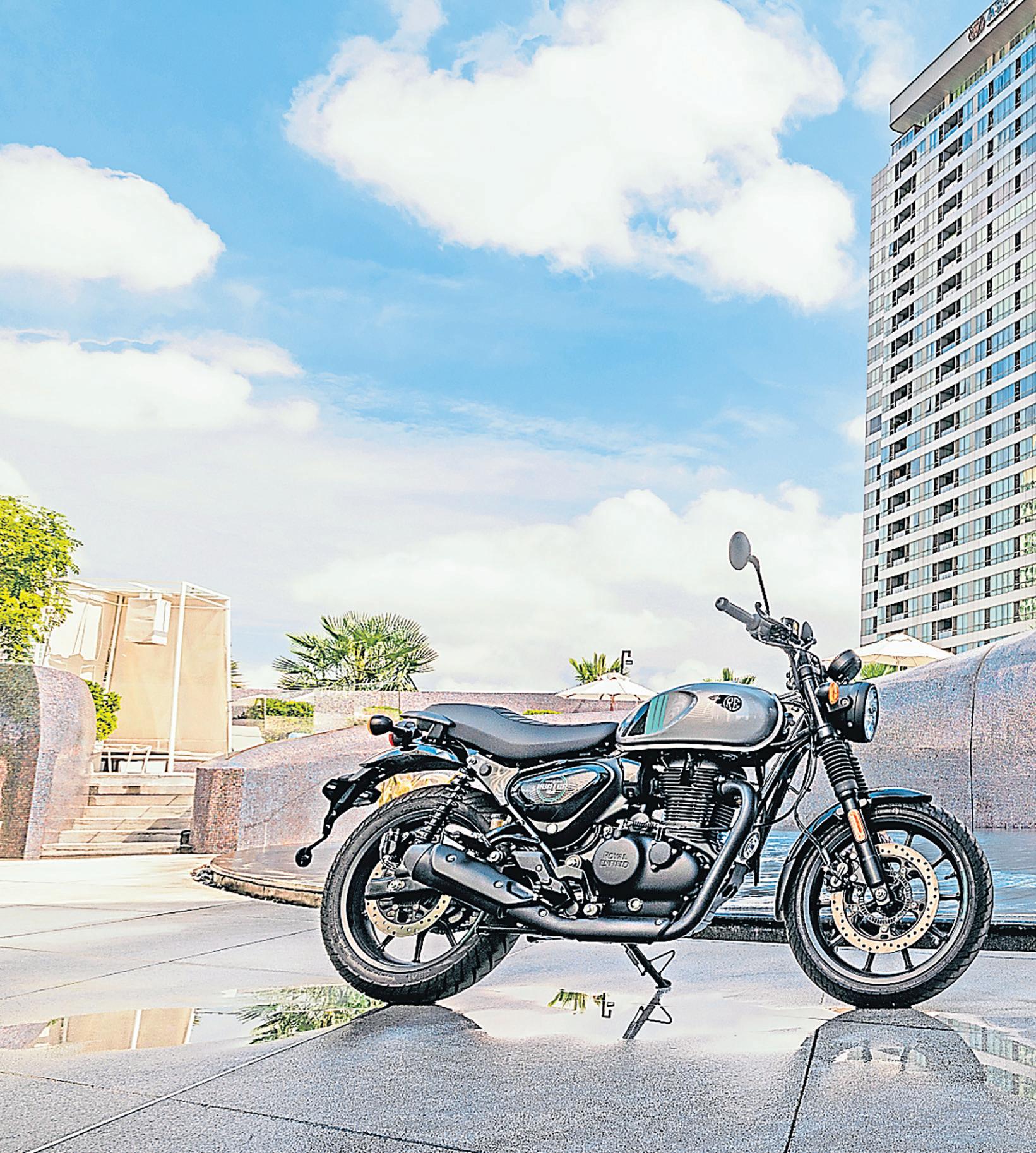
16 LAUNCH RIDE: ROYAL ENFIELD HUNTER 350
WORDS: Mikko Nieminen / PHOTOS: Royal Enfield & Universal Media Co
As I looked around me, the night in Bangkok was a beautiful cacophony of bright lights, strong colours, sweet smells, and all manner of sounds of the big city. Outside on the road, there were headlights dancing in the darkness, horns blaring, people coming and going – everyone seemed to be on the move.
I was there to test ride a motorcycle. Not when the night was over, and it got light again. Not when the traffic calmed down a bit. The ride was just about to start. Right there. Right then.
My first encounter with the new Royal Enfield Hunter 350 was to be on the dark and crowded streets of Bangkok at night.
I wasn’t sure if this whole thing was a good idea, but I figured that if that’s how Royal Enfield wanted to introduce its bike, there was probably a reason for it.
There was. Riding around the city that never sleeps was the perfect way of appreciating just how well the Hunter matches its newbie-friendly, urban and care-free billing. What is it?
The Hunter is a part of Royal Enfield’s 350cc range, following the wheel tracks of the cruiser-inspired Meteor and the more traditional Classic that were released not so long ago. The Hunter brings an urban flavour to
the line-up, with accessibility, ease of riding, and appeal to new riders a key focus. Not entirely unlike how Triumph brought a modern touch to their classic range with the Street Twin, just in a smaller, more accessible package.
All of the Royal Enfield 350 bikes are powered by the same J-series 350cc air-/oil-cooled single-cylinder engine, although the Hunter has a new tune with a fuelling and ignition update to give it a sharper edge for fighting city traffic.

Despite the shared engine, not much else is copied over from the other models to the Hunter.
While the Hunter was conceived
ROYAL ENFIELD HUNTER 350 17
LAUNCH RIDE:
and developed in Royal Enfield’s technology centres in Bruntingthorpe, England, and Chennai, India, the guiding principle was clear: to combine the 350cc engine with a more compact chassis for better agility and responsiveness.
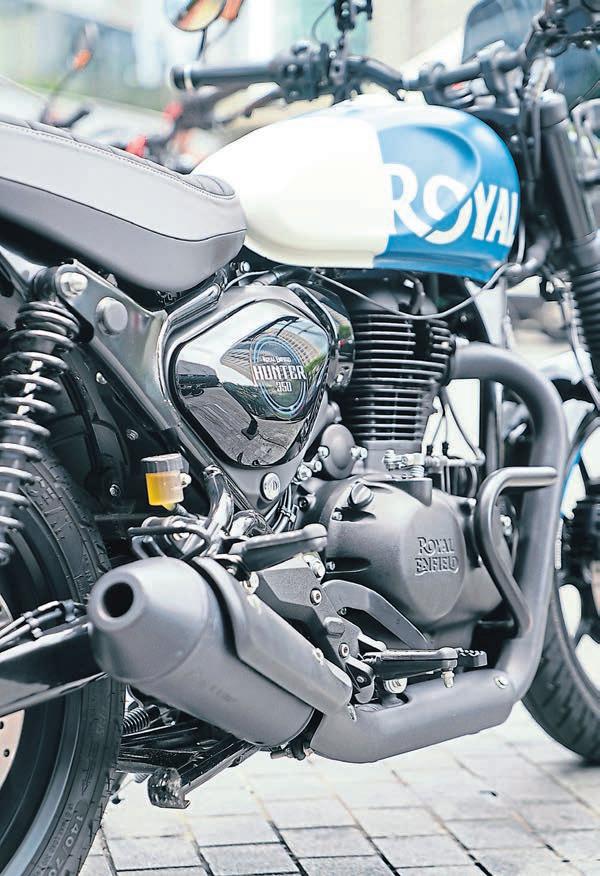
To achieve this, the Enfield designers and engineers joined forces with Harris Performance to develop the new chassis. The result is a package with completely new dimensions: the wheelbase is shorter (1370mm), trail and rake have been revised, and the seat is lower (800mm).
Suspension units and brakes are selected for urban riding, and the 17-inch wheels are a bit of a departure from Enfield tradition, but firmly aimed at achieving quick and nimble steering.

Royal Enfield spent years doing research and talking to its customers about what they wanted when it was planning this bike. The result: a bike for urban riding in big cities. And that’s why we were riding it in Bangkok.
Nuts and bolts
The Hunter 350 has a contemporary look for a bike from a marque as traditional as Royal Enfield. There are funky paint options (six different ones in total), and the design of the bike has a contemporary feel with the black exhaust pipe and short rear section, as well as modern-looking lights (halogen front and LED rear) and indicators.
It features 17-inch cast wheels with tubeless tyres (110/70 x 17in front, and 140/70 x 17in rear), single disc brakes back and front (300mm front,
and 270mm rear), dual channel ABS, and a centre stand.
Suspension consists of telescopic, non-adjustable 41mm forks with 130mm travel, and six-step pre-load adjustable twin shocks with 102mm of travel.
The digital/analogue instrument cluster is nicely designed, and displays all the key info in a clear way. Not that there’s a huge amount of info to cram in there as the electronics are very limited on the bike: no traction control or ride modes to worry about, no switchable ABS or keyless ignition. It’s a simple bike with simple electronics, and I never missed anything more. The display does have a gear position indicator though, which I always find useful.

The Tripper TBT navigation system will be available as an accessory (not standard fitment only because of the global chip shortage).
The switchgear and controls all feel like high-quality items, with buttons, switches and levers nicely placed and spaced.
Night ride
Hitting the streets of Bangkok at night on a bike you’ve never ridden was a little daunting, but the Hunter soon helped to put my mind at rest. It is such an easy and care-free bike to ride that I could get a feel for the traffic – work out when to filter, when to give way, and when to just hit it – without having to fight the bike at the same time. Rolling out of the hotel car park
18 LAUNCH RIDE: ROYAL ENFIELD HUNTER 350
TECH SPEC
Royal Enfield Hunter 350

Price: TBC, estimate £3500-4000 Engine: 349cc single-cylinder, SOHC, 2 valves, air-/oil-cooled Power: 20.8bhp @ 6100rpm Torque: 27Nm @ 4000rpm Transmission: 5-speed, chain final drive Frame: Twin downtube spine frame Suspension: (F) 41mm non-adjustable forks, 130mm travel, (R) Twin tube emulsion shocks, preload adjustable, travel 102mm Brakes: (F) 300mm disc, twin piston calliper, (R) 270mm disc, single piston calliper.Twochannel ABS
Wheels/tyres: 17in cast wheels, CEAT tyres (F) 110/70-17, (R) 140/70-17 Tank: 13 litres Kerb weight: 181kg Seat height: 800mm Service intervals: 300 miles, then 3000 miles or annually Warranty: 3 years Roadside recovery: 3 years Contact: www.royalenfield.com

and joining the crowded streets, it was instantly clear how well the engine’s character suits urban riding.
The air-/oil-cooled single only produces maximum power of 20.2bhp, but the 27Nm of torque feels generous and gives the bike a healthy push off the lights. The scores of scooters that always surround you at the start of the traffic-light-dragrace in Bangkok are easily left behind when the lights change (although with the locals being far better at finding their way through the dense traffic, you often meet them again at the next set of lights).
Being a 350, the Hunter is not going to be able to compete with the big boys when it comes to outright power and speed, but it feels like a significant step up from the urban majority of 125cc levels of performance. It feels like a proper big bike, without the bulk and scary performance of one. What is particularly pleasant about the way the Hunter delivers its power is that it gathers incredibly smoothly right from the start. There is not a hint of snatchiness from the throttle, and whether you want to take off fast or slow, it’s always easy and smooth. Further helping this is the long-stroke nature of the engine; it feels almost impossible to stall the bike, and
Two flavours
there’s easily enough poke to start in second gear.
The gearbox is excellent. You can shift gears with or without the clutch, and the action from the box is always slick and accurate. I didn’t get a single false neutral during the ride – and I’m usually pretty good at finding them.
If I was nit-picking, I could say that the clutch could be a little lighter for a bike that spends so much time in heavy traffic, where the cluch is in constant use, but we did just short of 130 miles in two days and I didn’t find it a problem.
One very endearing quality of the bike is the sound it makes. That single-cylinder thump has delightful character. At idle speeds it’s so quiet, and the engine so vibe-free, that the first time I came to a stop I thought I had stalled it. But give it some revs and the exhaust pops like they did in the good old days. Open the throttle even further and accelerate hard, and the induction roar drowns all the other sounds around you, and wraps you in a little aural bubble of happiness.
The riding position is standard roadster style: upright and compact. The bars are nice and high. I would have preferred them to be just a little wider, but I have to admit that on the congested city streets every additional inch of width makes it

The
The suburban theme boasts a right-side pannier; pillion backrest; touring mirrors; custom seat; and large engine guards, again, all in black; plus a silver sump guard.
Prices for both packages are yet to be confirmed.
 Royal Enfield has made accessorising the Hunter easy with two packages, or themes, that contain a selection of goodies each.
Urban theme consists of a bench seat; compact engine guards; LED indicators; sump guard; bar-end mirrors and tail tidy, all in black; as well as a tinted fly screen.
Royal Enfield has made accessorising the Hunter easy with two packages, or themes, that contain a selection of goodies each.
Urban theme consists of a bench seat; compact engine guards; LED indicators; sump guard; bar-end mirrors and tail tidy, all in black; as well as a tinted fly screen.
LAUNCH RIDE: ROYAL ENFIELD HUNTER 350 19
more difficult to glide past the queues of cars. The seat is quite soft, and very comfortable, but because it is so low (800mm) I felt that my legs were a little cramped. Not a massive issue for a bike that is designed for short city rides, but anyone 6ft or taller might want a little higher seat.
That seat height is, of course, an important feature of this bike that has been designed to be accessible and easy to ride for new and inexperienced riders of any size. To achieve that, the seat needs to be low enough and the chassis slim enough for most people to not only get their feet down to the ground, but also to be able to do that comfortably. In city riding where filtering, tight turns, and the stop-and-start nature of the ride mean you will have your feet down a lot, this is a key feature of the bike.
Another aspect of this built-in level of accessibility is being able to steer and move the bike easily. The steering lock is very generous; kerb weight low(ish) at 181kg; wheelspan short and trail and rake angle sharp; the exhaust is short to centralise the mass; and wheels are both 17-inch – put all of that together and u-turns and quick changes of direction at slow speeds are easy.
As the speeds rise, the limitations of the bike start to show. It’s designed for the urban environment, and urban speeds, so this is hardly surprising, but as you start pushing it faster, you start to notice that the suspension can’t quite keep up with a combination of higher speed and rougher road surfaces. Similarly, the brakes that are fine in town, may feel a little weedy if you are attacking B-roads with a vengeance. It’s also worth noting that the lean angle on
the right is a little less than on the left because the exhaust touches down if you really push the bike hard into a right-hander. It’s unlikely to be a problem in normal city riding, but when we had a little spin with the bikes on a go-kart track it was a case of not pushing the bike into right-hand corners too fast so that the exhaust didn’t ground and lift the tyres. That said, as long as you appreciate the way the bike works, you can really push it, and have areal giggle.
Hit or miss?

Royal Enfield has definitely produced a very good, and very exciting motorcycle here. It’s undoubtedly going to appeal to a different segment of riders than the traditional Enfields, and the effort put into making it an accessible and easy machine to master opens the doors to new riders.

However, there is still one consideration that will guide people’s purchasing decisions that we don’t have a definitive answer for yet – the price. So far, Royal Enfield has only



confirmed the price of the bike in India, and although that gives us a clue as to what it will be in the UK, there are still many variables that can change the price point here. In India the Hunter is a fair bit cheaper than the Meteor, which would suggest that the same will happen in the UK. If the price difference here is as big as it is in India, we could see the bike selling for as little as £3500, but with prices of everything from components to shipping changing constantly, it could be closer to £4000. The announcement on the price will be made at the Intermot show in Cologne at the beginning of October, so by the time you read this, the UK price should be known.
Whatever the final price, it’s sure to be competitive enough to tempt many riders to consider the Hunter.
Given how well Enfield’s other models such as the Himalayan and the Interceptor are selling, and that there’s not much competition in this segment, this could be another big hitter for the company.



Closest rival Mutt GT-SR 250

The GT-SR is the latest bike from Mutt Motorcycles; nearly all black, with silver and chrome touches. It rolls on 18-inch black aluminium rims with polished stainless spokes, and it has a 130-section rear and a 120 front tyre.
The air-cooled, fuel-injected, 4-stroke single-cylinder 250cc version of the bike (also available as a 125cc) costs £4500 + OTR. www.muttmotorcycles.com

To preorder your next issue of Motorcycle Sport & Leisure head to classicmagazines.co.uk/pre-order-msl Alternatively, scan the QR code on this page and order your next copy today. We will send it directly to you! Save time by not having to nip out to the shops! 20 LAUNCH RIDE: ROYAL ENFIELD HUNTER 350




















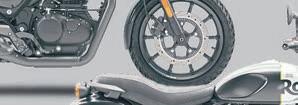
























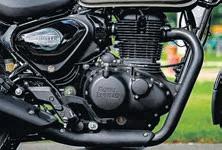

















Antrim Coast Road
Northern Ireland has a whole load of excellent routes to choose from – but the Antrim Coast Road is one of our favourites (even in the winter).
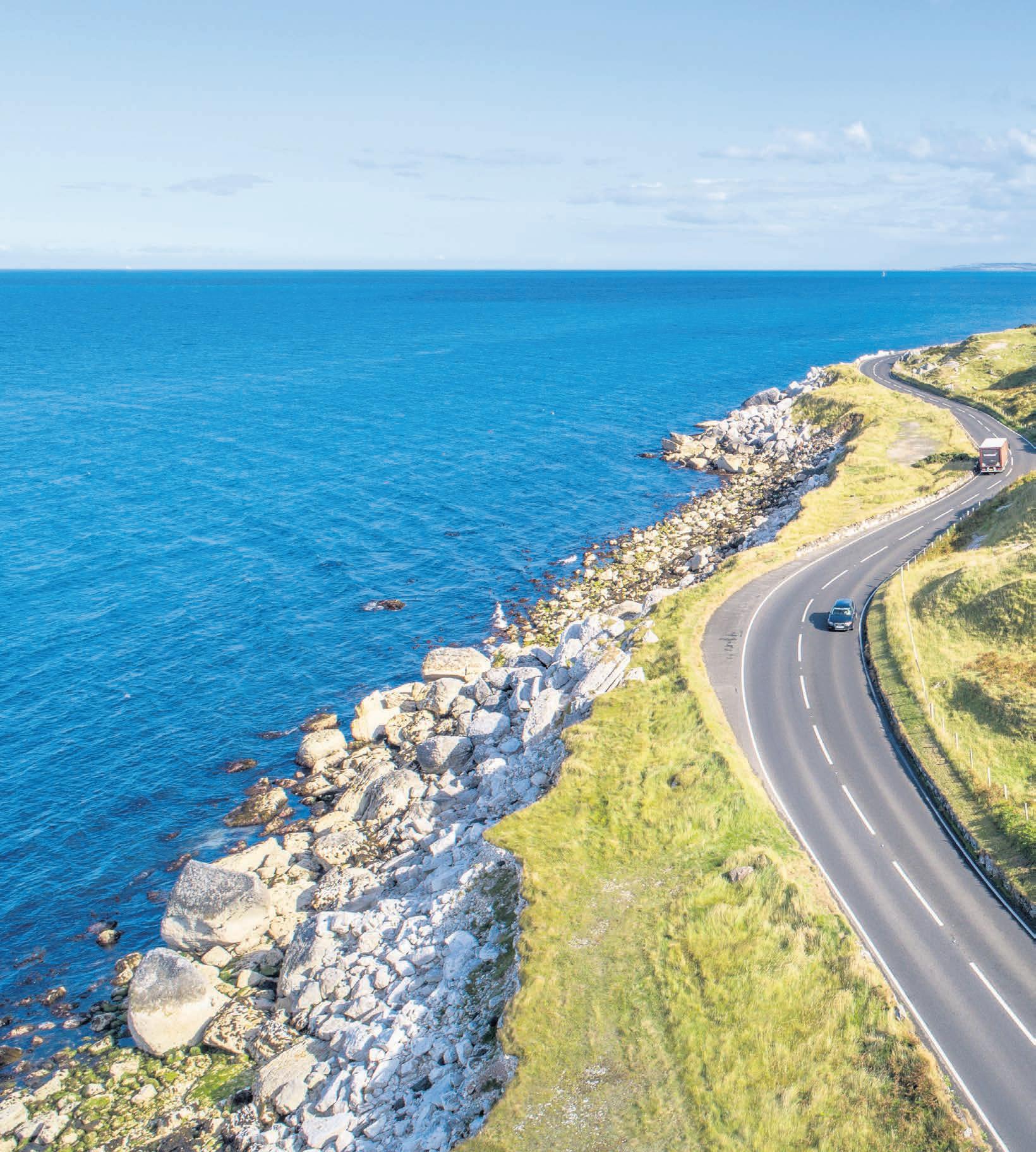
There are a couple of ways to get to Larne from Belfast, but it doesn’t really matter too much which way you choose, as it’s from Larne onwards that the interesting bit of the route starts. As soon as you leave Larne, the Antrim Coast Road opens up. It follows the coast as close to the water as it possibly can, providing wonderful views of the Irish Sea. There are gentle corners that seem to be hanging over the sea, little tunnels through the cliffs, and a sense of freedom you only get this close to the seaside. Riding is not fast here. The best thing to do is to just take it easy and enjoy the views.
You are tempted to stop and take photos at almost every bend and every village, but I managed to push on until Carnlough before jumping off the bike and sniffing the air for a brew. The next stop was at Cushendun, a village with Cornish-style houses designed by Sir Bertram Clough Williams-Ellis. Not quite what you’d expect to see in Northern Ireland…
The ride took a little diversion from the Antrim Coast Road to incorporate a bit of the Torr Head Route to get to Murlough Bay, a beautiful and wonderfully quiet little spot at the end of a singletrack road. It’s a detour from the main road, no doubt about that, but it’s one definitely worth taking. From Murlough Bay I headed to Ballycastle. The stretch from Ballycastle to the end of the route is absolutely peppered with things to see, and if you want to make sure you don’t miss anything, a day will not be enough.
The first stop after Ballycastle was Ballintoy Harbour. It’s just a little skip off the route, and well worth taking. The coastline looks rugged and unforgiving, and on a cold winter’s day you wonder how badly people must have wanted to get out to the sea to build a harbour here.
The main attraction around this part of the country is in no doubt.
The Giant’s Causeway draws the crowds from near and far. Most
will pay £10 to park at the visitor centre and walk or take a shuttle bus to the stone formations. Nothing wrong with that, but just as easily you can park next door at the Causeway Hotel. It costs the same £10 for cars to park there, but you can fit a couple of bikes in one parking place and split the cost – and if you go and have drinks or food at the hotel, you get the parking off your bill. So, you park, have a sandwich, and then wander down to the stones.
The Giant’s Causeway is made of about 40,000 interlocking stone columns. Whether they were stacked there by an ancient volcanic eruption or quarreling giants is up for debate, but either way it is an impressive sight. After the causeway, the next obvious place to stop is the old Bushmills distillery, just down the road. Possibly the oldest distillery in the world, it has a great shop and pre-booked tours if you are into your whiskey.
The original plan had been to carry on to Portrush and Portstewart before turning back towards Belfast, but it was getting late, and there was still somewhere I wanted to see before heading home. So, I abandoned the coast and headed south to Ballymoney and Joey’s Bar, a place that used to be owned by none other than Joey Dunlop. Filled with racing history, the bar is nicely located if you want to explore the NW200 route.
From Ballymoney I opted for the quick route to Belfast, because even when the riding is good, there’s no shame in calling it a day. Either way, there’s no doubt the Antrim Coast Road is one of the finest routes to ride at any time of the year. But just because it is so good, riding it in winter means that there are a lot fewer people on the roads and crowding the attractions at the roadside. All you need to do is to dig out your heated jacket and gloves, book a crossing, and off you go. And if you do, send us a postcard!
WORDS: Mikko Nieminen PHOTOS: Geoff Hill & Mikko Nieminen
22 ROUTE FINDER
WINTER KIT HIGHLIGHT
There are not many bits of riding kit that I value more than a good pair of heated gloves. On a cold winter’s day they keep your hands nice and warm, and doing that, they make the whole ride so much better. Keis kindly provided heated kit to keep me warm on the Great Winter Rides, so I had a pair of heated G701S ‘Shorty’ gloves on this ride (£190, www. keisapparel.com). The gloves are ace on their own, and even better when combined with heated grips – bliss!

Where: The route runs along the north-eastern coast of Northern Ireland. You can start at either end, Belfast or Portstewart, it doesn’t really matter which way you ride.
Description: The route covers roads great and small. This is not a fast ride; the roads can be busy, and they are best enjoyed at a leisurely pace. There are plenty of places to stop along the way for coffees, culture or a very cold dip in the sea.
Distance: Under 100 miles, even with some detours.
Time: Allow a full day so you can have plenty of stops for photos, coffees and lunch.
Fuel: We filled up in Belfast before the ride, and made it back before refuelling, but there are plenty of fuel stations on the route if you need to fill up. For example, Larne, Ballycastle and Bushmills are good places to stop for fuel.

Cafes: There are plenty of them on the route. We stopped at one in Carnlough to escape a shower, but you’re never far from one on this ride.

Curiosities: The absolute must-see on this ride is the Giant’s Causeway, but there are also places like Dunluce castle, Ballintoy harbour or Joey’s Bar to see if you want to go a bit off the main route.


STENA LINE
Stena Line offers a great way to cross over to Belfast either from Cairnryan or Liverpool. The ferries are modern and comfortable, with an option to upgrade your journey with a cabin or access to a lounge. There are services from films to spas, and from shopping to gaming.

Talking about the crossing, here’s a pro tip: The Stena Line ferries are full of things to do from shopping to cinema, and all manner of dining options, so you won’t get bored, but the smart money goes for the Stena+ lounge access. It only costs £20, but includes comfy seating plus all the snacks and drinks you can manage. You have over two hours to get your money’s worth, so it basically pays for itself.
For further information visit www.stenaline.co.uk
KEY FACTS Belfast Larne Glenarm Carnlough Cushendun Murlough Bay Carrick-a-Rede Giants Causeway Bushmills Portrush Porstewart Coleraine Ballymoney Ballymena A26 A26 A44 A2 S F NORTHERN IRELAND Lough Neagh
ROUTE DOWNLOAD www m. s lmagazine.co.uk SPAM/
ROUTE FINDER 23
NEW WORLD ORDER
Yamaha’s taken the goodness of the original Ténéré 700 and made it so much sweeter, smarter and even more capable. A true, go-anywhere middleweight adventure bike
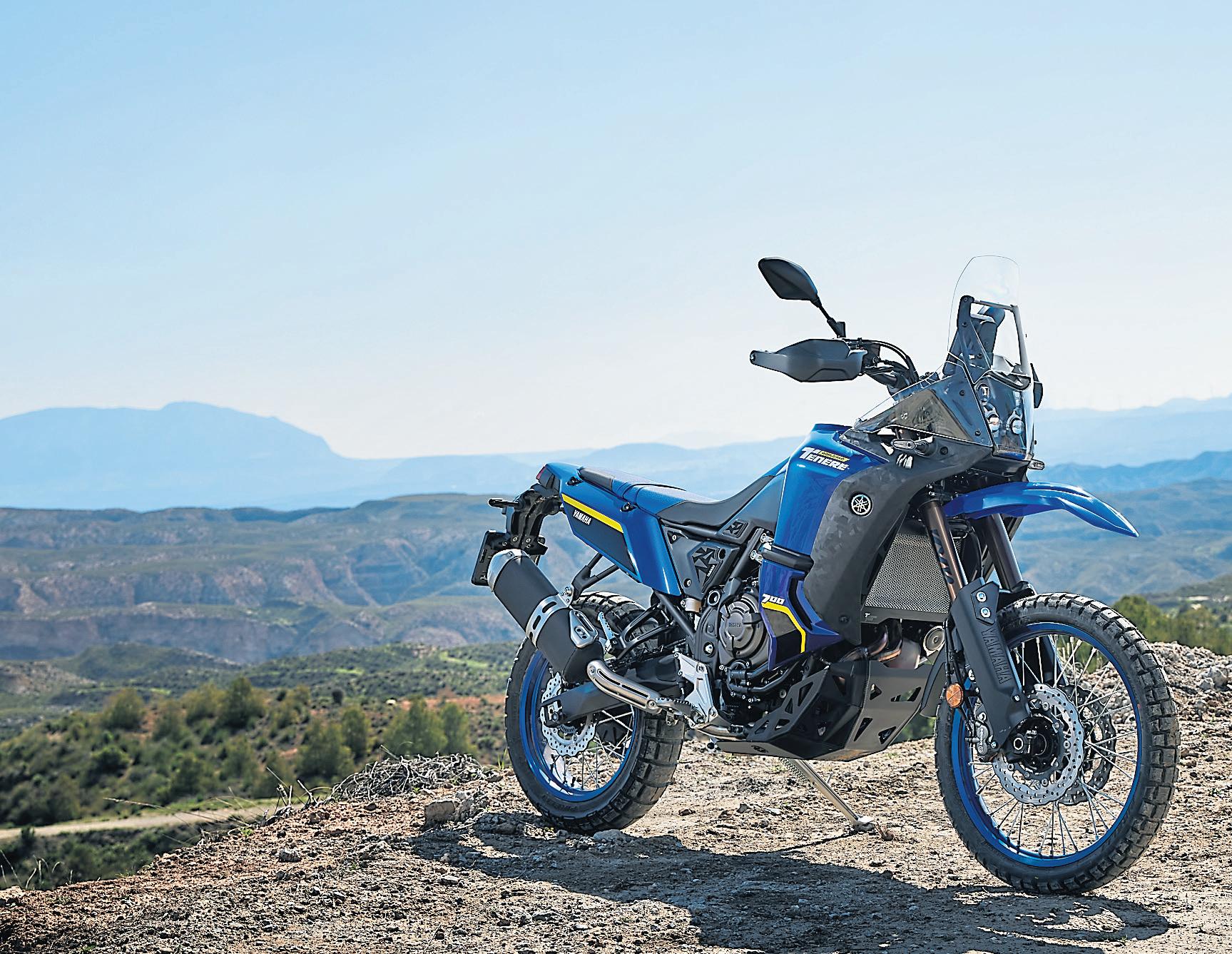
If you like your wheels out of line, your riding off the limiter and if convention makes your head ache, you’ll probably like a taste of what Yamaha’s new Ténéré 700 World Raid has to offer.

I wasn’t sure what would hurt most, the physical pain of smashing into the deep, rocky river bed or the impact it would have on my pride? To keep on ploughing through was my only option, literally, sledging the crossedup front tyre with big handfuls of throttle, while licking the dirt from my teeth and sucking up the sting from sweat that flowed into my eyes like a leaking tap. Some 300 kilometres into the day’s ride, my energy levels were on empty and my brain was mush, exhausted from computing the milliard of decisions it had taken to get me this far under a gruelling 30°C. The front end saves; the relentless decisions to pick the least traumatic looking lines; the physical strength exerted to hustle a 220kg behemoth around… it’d all taken its toll. No one said this was going to be a ride in the park, but I’d been too hyped up during the presentation of Yamaha’s new Ténéré 700 World Raid to take
heed of the organiser’s warnings, let alone the offer of an easier route should the challenge become too much (who does that?). I wanted a proper adventure, including the pain and the satisfaction that comes in tandem with a sense of vulnerability and loneliness as you travel trails few people have ever seen before, let alone ridden. And that’s exactly what I was getting.
As ill prepared as I was for the test, I couldn’t say the same about my sparring partner. Building on the solid foundations of the Ténéré 700, launched in 2019 and boasting a significant 30,000-plus sales to its name, the World Raid was that next step in the pipeline. A more focused, genuine globetrotter, with a whole host of enhancements including a whopping 23-litre fuel tank. Or should I say ‘tanks’. Nestled below the eyeline of the new 5-inch TFT notebook-style dash, complete with three optional screen faces (Street, Explorer, Raid), were two saucer-sized fillers, adjoined internally by a pump to balance the fuel levels (you still have to fuel each individually), though they were otherwise completely independent
and looking every bit Dakar-esque. But they weren’t just a styling cue, with the obvious gain being a 7-litre enhancement to the Ténéré’s fuel capacity and the more subtle benefit being to the weight bias of the bike, meaning the mass was more evenly spread with a 50/50 ratio on the cards. This had been done to help front end feel, and so, too, had the fitment of new 43mm KYB forks that offer 20mm more travel than the original Ténéré 700s, as does the new KYB rear shock, which is also longer, fully adjustable and comes with a new spring rate and a different linkage to help suck up harsh bumps better. Yamaha was clearly gunning for a more refined, more purposeful proposition with the World Raid and the fitment of an Öhlins adjustable steering damper only hammered home that rationale, being refined further with a flatter, higher seat and larger pegs. The new taller screen and USB power point might not be the top of everyone’s Christmas list, but on big rides both make perfect sense, alongside the bike’s alterable ABS settings that allows the user to switch from utter decorum to full ASBO with a few
WORDS: Bruce Wilson / PHOTOS: Yamaha Europe
24 LAUNCH RIDE: YAMAHA TÉNÉRÉ 700 WORLD RAID
scrolls of the right switchgear’s ‘menu’ button. Unlike before, you now get the option of full ABS, front only ABS and no ABS at all… which is probably music to a lot of people’s ears.

Unfortunately for me, I was to discover not long into the day’s 326km route the ABS could not be adjusted on the go, meaning my Ténéré was the only one in our gaggle not skidding into corners as the morning’s initial road journey led us out of Lorca, Spain, meandering towards the distant, snow-capped mountains. It had been three years since I last rode a Ténéré and I’d be a liar to say I was immediately at home on this slightly heavier, taller version. It felt substantial in size, with its wide bars and chunky tanks, rolling on dual-purpose Pirelli Scorpion Rally tyres that whined as we pushed their speed ratings to the limit. They were
far from bad, but like the bike’s brakes that felt initially flat, they took a bit of getting used to. So did the motor. For whatever reason I’d remembered the parallel twin being a whole lot fruitier than it transpired, meaning big revs were a pre-requisite to get the motor cruising at a discerning speed, and the shifter-less ’box felt harsh and on the agricultural side.
Admittedly, riding in hefty motocross boots meant my footwork had the finesse of a bull in a china shop, but after hooking a string of false neutrals in the first 50 kilometres, it became a case of when, not if, another one was headed my way. On a more positive note the exhaust note sounded throaty, backing up the bike’s striking image, while the pimped dash was easy on the eye with all the essential info a doddle to digest. The saddle was sizeable and supple, too, backed
up by the beefy pegs that offered loads of grip and little vibration. This was clearly a bike capable of going the distance in comfort, but that wasn’t the real meaning of the day’s test… today was all about hitting the dirt and heading into the horizon where very few other middleweight machines could even dream of going.

I was chomping at the bit to hit our first trail and after an hour in the saddle, there it was: a largely flat,
dusty route with the odd crevasse thrown in to keep me on my toes.
The surface was mostly hard-packed, which suited me as I built up speed and confidence on the Ténéré.
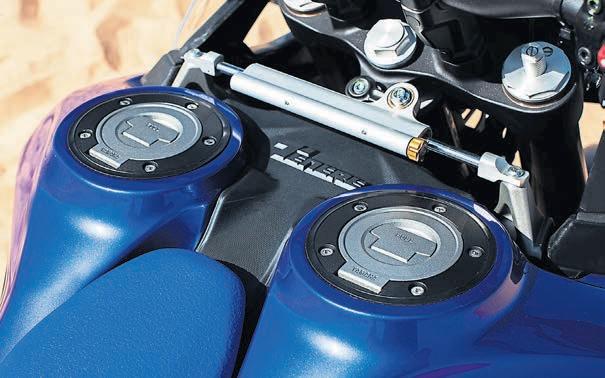

Stood tall on the pegs, the view was domineering and the feel from the front end egged me on to push farther and farther outside of my comfort zone, only to be slapped back down to earth with the occasional wash of the front trye. On smaller enduro
machines you can get away with murder, but big bikes like this demand respect… or skill, of which I had very little to offer. Still, I wasn’t about to let a potential face-planting hold me back for long, meaning the process was repeated more times than I’d care to admit, learning little by little the limitations of the tyres’ grip. I often find there’s a fine line between fear and fun, and that was the path I was blasting along, indulging in the versatility and playfulness of the Yamaha; I was in my element, even if my racing heart was telling me otherwise.
While the brakes hadn’t tickled my fancy on the road, the front anchors were awesome off-road, even with the ABS engaged. What they lacked in power they made up for with feel, through the adjustable spanning lever. It didn’t take me long to trust in them, taking liberties in how hard I could squeeze them, with the occasional outburst of ABS telling me that I was giving them a good seeing to. In a similar vein, the motor came into its own. Throughout the day I’d come to love it more than I could anticipate, but from the outset it won me over with its linear delivery and useability
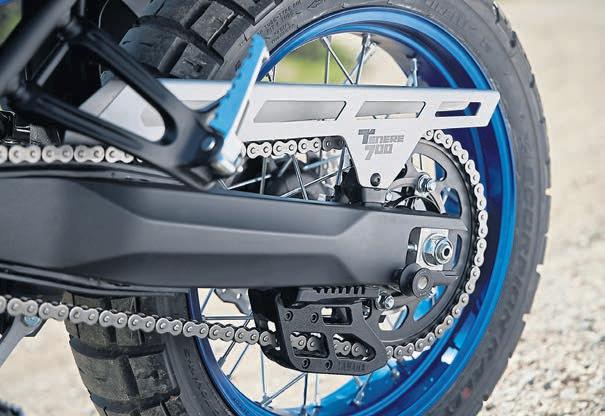
LAUNCH RIDE: YAMAHA TÉNÉRÉ 700 WORLD RAID 25
from stupidly low in the rev range. You could be a few gears higher than you rightfully should be, ticking along at just a few thousand revs, and the twin would boom its way back to speed, kicking the back wheel out in the process in the most playful of slides. There was a lot to like about this engine, as I’d originally discovered back in 2019. Other than now being Euro5 and sporting a modded airbox, the lump was largely untouched, still pumping out a worthy 73bhp, which was proving more than enough on the dirt.
Getting back on the roads was a
depressing, albeit necessary, reality. Once you’ve had a taste of the good stuff, that’s all you crave. As short as that first section of shale had been, I knew tracks and trails were the Ténéré’s natural habitat, away from the rigours of speed limits, traffic and everyday boredom. Riding in a group of people with a similar mentality ensured that when we returned to the dirt for our second stretch, no holds were barred; it was everyman for himself, with big grabs of throttle being the order of the day. The dust clouds were towering, the laughs endless, adjoined by a focus
so intense my head began to hurt as I knitted my way between the rocks and piles of loose, sandy ground. To just pull the bars, steering the bike literally, would have put me on my arse before I’d had chance to think about it, so meaningful direction changes were made by weighting the pegs. It’s mad how much leverage you have over a motorcycle with your feet, and I was impressed by how obligingly the World Raid reacted to my actions. I wouldn’t say the Ténéré is overly top heavy, but like so many big trailies, you know there’s a lot of mass between your legs. And when
the tanks were full, like they were at the beginning of the day, I’ll admit I had my work cut-out. Every rock and surface depression had the scope to derail the bike’s planted demeaner, and I had to be quick enough and strong enough to catch it… or, more honestly, simply lucky. It was hard going, and especially when the trails became really quite hard core, climbing high along mountainsides, with towering, sheer side drops ready and waiting to gobble you up. And then there were the descents to tackle, too. All that weight, aimed downhill, with a surface that looked like a sadist had just let loose the world’s biggest bag of marbles, got me excited for all the wrong reasons. It was tense stuff, using the motor’s engine braking and additional rear brake to keep the bike something like under control.
The climbing and descending kept going for hours, right up until we reached our midday lunch stop, where rest, rather than food, was
top of my agenda. The sun was now scorching hot and the prospect of another six hours in the saddle, where we were promised things would only get harder, had me questioning my fitness and my sanity. To this point the Yamaha had exceeded my expectations, taking us places where normal folk just wouldn’t go, but how would it cope if the riding got as tough as the guides said it was going to get?
I mulled the thought over as I washed down a slab of ribs with a litre of Fanta naranja, topped off by as much dessert as I could stuff in my fat face… if I was about to die, I wasn’t going to go hungry!
They broke us in gently when the ride recommenced, with a 30km stint on the roads. It was a well-earned breather, but soon enough I was bored again. Better stuff was out there and I was fired up at the thought of it. I was also buoyed by the now familiar stance and feel of the bike.
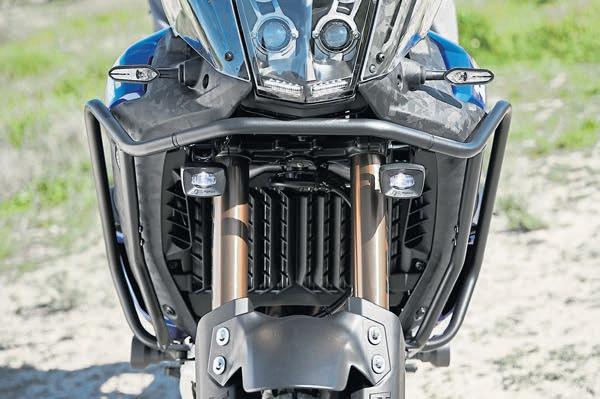

On the whole it was bog basic, with
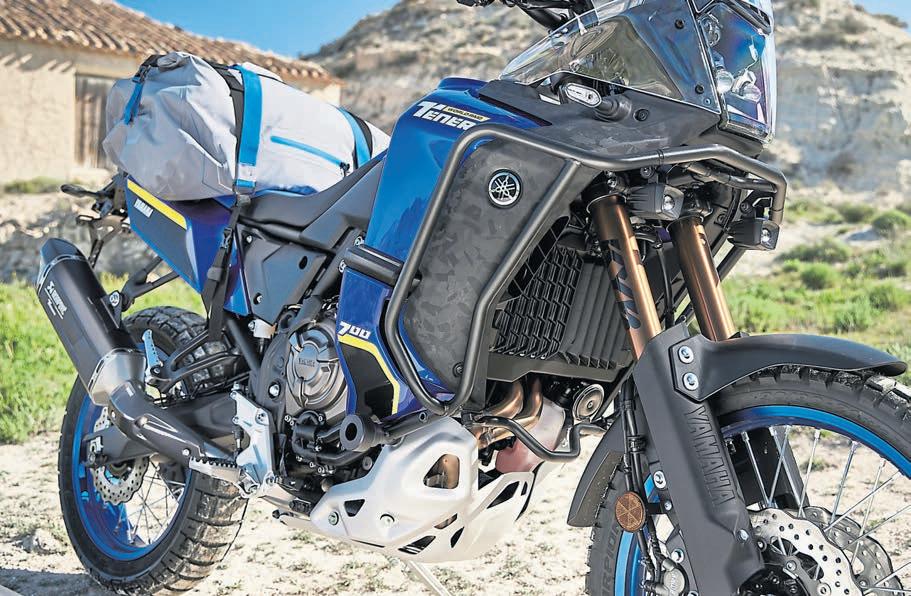
26 LAUNCH RIDE: YAMAHA TÉNÉRÉ 700 WORLD RAID
naff-all distractions from fancy tech or feature. You got on, turned the key and hit the starter; by today’s standards it felt somewhat refreshing. The mirrors showed more than my elbows. The seat wasn’t prompting of piles. The long reach down to the pegs meant I never got cramped knees. On the whole, there was a lot to like about this bike. That adoration continued as the Tarmac road vanished behind me, cloaked in a dust cloud of my own making. It was like someone had released the ‘pause’ button on my favourite
video game, I was once again in my happy place. Or so I hoped. An hour in, concentrating harder than a swat doing algebra, we arrived at this ginormous ravine. I’m not quite talking Grand Canyon style, but big enough to break every bone in your
body a million times over. The sheer sides dropped 200 metres, and the gaping hole in the terrain spanned around half-a-mile wide, stretching as far into the distance as my eyes could see. It was impressive, but even more impressive was our guide Pascal’s

straight face when he told us we were going to descend to the bottom. I’ve seen plenty of goat trails in my time, but never one as nadgery as this, let alone as pock-holed and sketchy. When you’re in a group, riding with your mates, you’re prone to doing dumb things, and that’s probably what prompted me to tackle it first. A snail could have overtaken me at the speed my descent began, trying hard to focus on the slim slither of dirt in front, and not the bottomless drop a foot to my right. It was proper heartin-mouth stuff and the weight that was lifted when I eventually reached
the bottom is a feeling that’ll probably live with me forever. Big bikes shouldn’t do this kind of thing, but the Ténéré had done just that, without drama or hesitation. With the group regathered, the next step in the journey began, blitzing along the guts of the gorge… that was once we’d ticked off a quick photoshoot. Or so it should have been. One of my mates, who was riding amazingly all day, came a cropper at this stage, washing the front and battering himself in the process. The Ténéré was many things, but
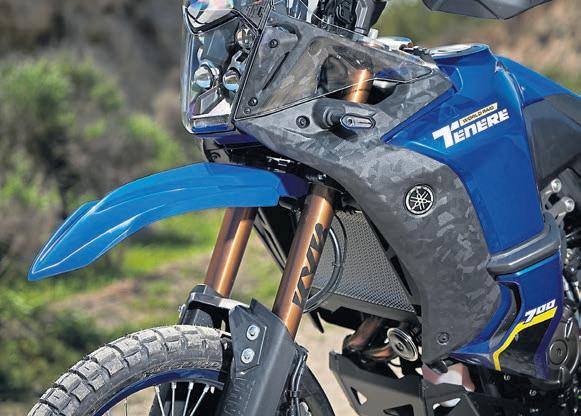

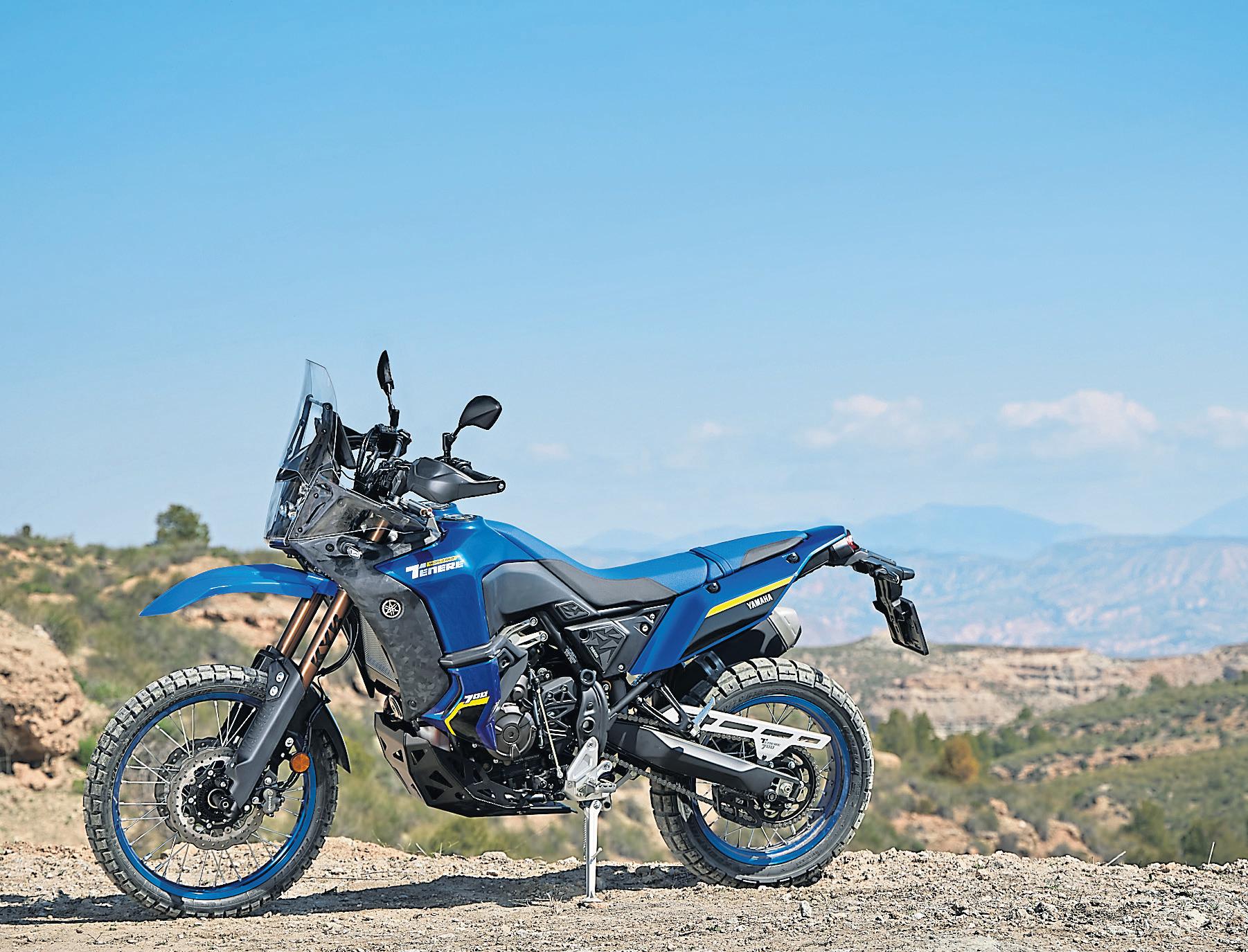
LAUNCH RIDE: YAMAHA TÉNÉRÉ 700 WORLD RAID 27
forgiving it was not, as his broken toes and tibia went to vouch. After persuading him that he couldn’t ride on, much to his disgust, and with a recovery vehicle eventually on-site to take him on his way, we cracked on. There was no let-up. In fact, things got tougher. I’ve ridden adventure bikes all around the world, in all conditions, and if there’s one thing I hate more than anything else, it’s deep, loose, dry river beds. You struggle for traction at the rear, and if you can get the front wheel pointing forwards, you’re a better rider than me… that’s for sure. Stood on the pegs, it was torturous, hard work, and with my mate’s smashed body fresh in my mind, I chose caution over pride and sat in the saddle for the mile-long stint, occasionally dragging




a leg to keep the bike shiny side up. It was hard work, and probably the first time all day where the sheer mass of the Ténéré had properly gone against it. But I’d reached the end and after a swig of water, my blood pressure was nearly back to normal. All that was left was to climb back out of the valley in much the same way as we’d gotten into it, tracking along a nasty-looking trail. In truth, going up on a bike like this is so much easier than going down, especially when you’ve got a motor like the Yamaha’s to keep you punching skywards. Through pure persistence, and with disdain in my arms and legs from gripping way too tightly, the summit was reached and the challenge that had been undertaken to reach this promised land was now a distant
memory. A few, light trails onwards, it was as if it’d never happened, with the only obvious sign that it had actually occurred being the absence of our mate… plus a couple of others who’d dropped out because the going was too tough. I didn’t blame them, but I did feel sorry for them because half-an-hour later we arrived at an amazing, disused railroad bridge, spanning another huge valley. It looked as old as they said it was, so this time I let someone else take the plunge and tackle it first. As heavy as the Ténéré is, it’s not a speck on an old locomotive, so we all made it to the other side without collapsing this local landmark.
We’d been on the go for nine hours by this stage, taking in our stride the wrath of our route. The trails had
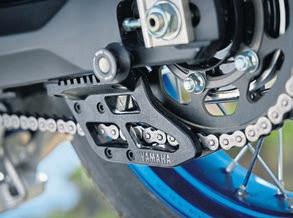
28 LAUNCH RIDE: YAMAHA TÉNÉRÉ 700 WORLD RAID
“THE BIKE HAD PROVEN EVERY BIT AS PURPOSEFUL AND RUGGED AS IT LOOKED, TAKING US TO PLACES PHYSICS SAID IT SHOULDN’T HAVE…”
TECH SPEC
Yamaha World Raid

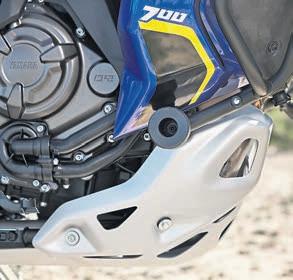
Engine:
Claimed
Claimed
Frame: Tubular steel
Seat Height: 890mm Wet Weight: 220kg Fuel Capacity: 23 litres Price: £11,800 Contact: www.yamaha-motor.eu
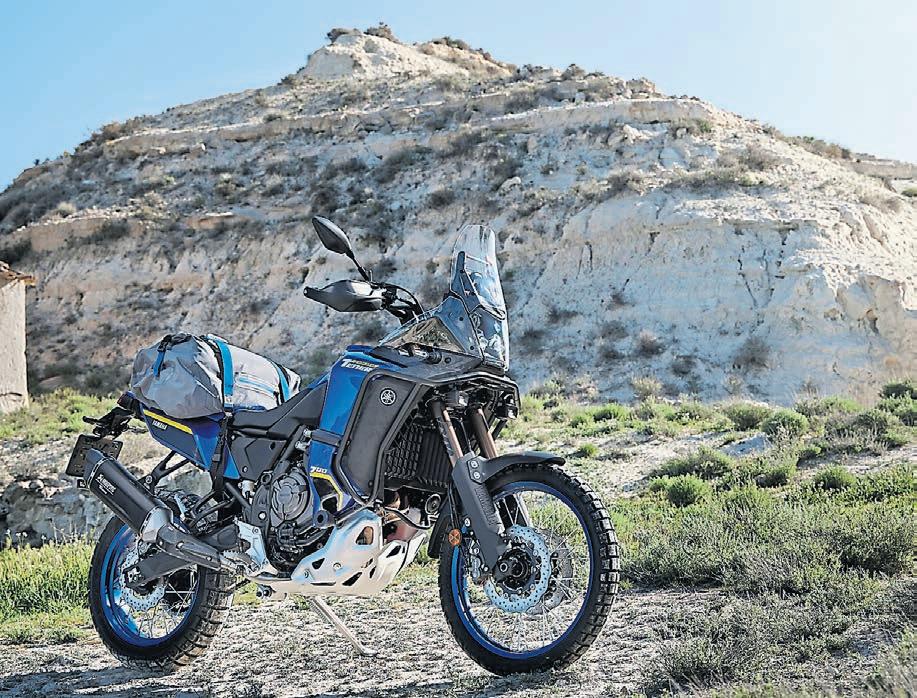

been amazing, the vistas out of this world, and the challenge quite unlike any I’d undertaken in recent years.
Whatever came our way, the Ténéré would tackle it and we’d all somehow make it to the next waypoint. But by this part of the day I was well and truly feeling the exhaustion of the ride. Not so much physically, but mentally. I’ve said it before, but the level of concentration and constant engagement with the Yamaha was really taking its toll on me. To put it bluntly, I was feeling knackered, and
I know I was in good company. That’s why when we came across yet another dry river bed, I was convinced I was done for. This is where the going got really tough and I found myself bouncing from one feature to the next like a pinball, using and abusing the heavy clutch to power me out of the deep, loose surface that sucked all of mine and the bike’s energy. It was hard going and too many times I accepted that my luck was up, as a submerged rock knocked the bars from my hands. With better, more
off-road orientated tyres fitted things might have been a little different, but that was a luxury we hadn’t been afforded. Grip was a gift I simply didn’t have, and with the daylight drawing in, time wasn’t either. I just had to keep going, it was that simple, and by some miracle that’s how things played out.
For the first time all day I was actually relieved to get back on the roads. To sit back on the seat, relax my grip on the bars and power my way down into Grenada. That night’s bed could not come soon enough, but not before we’d sunk a few beers in our hotel’s lobby, trading tales and reliving our experiences. People throw the word adventure around too causally these days, but that’s the best way to describe the launch of the Ténéré 700 World Raid. The bike had proven every bit as purposeful and rugged as it looked, taking us to places physics said it shouldn’t have… which is exactly what hooked me to it. Is it better than the Ténéré 700? Most definitely. Is it worth £1900 more
than the base model? For me, yes, because if I bought a bike like this, I’d plan to use it like we did, never having to worry about its fuel range or toughness, or whether ABS would be an issue. The base model is a cracking machine, there’s no doubt about it, but the World Raid felt so much more refined and credible, plusher, too, thanks to its bettered suspension, improved levels of engine protection and greater off-road pedigree… which is what I’d want primarily. There are plenty of look-a-like adventure-style options littering the market, but few that actually back up the appearance with the conviction of this bike. A bike that Yamaha’s got so much faith in its set to compete in desert rallies the world over, reigniting the glory days of big twins tackling big dunes, and all that, flat-out into the abyss. Knowing what I now know, with the right rider on board, I dare say this bike will be right in the mix, or at least deserves to be. If it is, I dare say other brands will soon follow in the World Raid’s path. This is just the beginning, trust me.
689cc, liquid-cooled, parallel-twin Bore x Stroke: 80mm x 68.6mm
Compression: 11.5:1
Fuelling: Electronic fuel injection
Power: 73bhp @ 9000rpm
Torque: 68Nm @ 6500rpm
Suspension: (F) KYB 43mm fully adjustable forks, 230mm travel (R) Fully adjustable, KYB monoshock, 220mm travel Brakes: (F) Twin Brembo, 282mm discs (R) Brembo single piston calliper, 245mm disc Wheelbase: 1595mm
LAUNCH RIDE: YAMAHA TÉNÉRÉ 700 WORLD RAID 29
If you’re riding right through the colder months, there’s one easy way to make it better: heated kit.



What does it cost?
Gloves range from the Textile (£99.99) to the XTREME Urban (£199.99). The jacket range goes from the Microwire PRO vest (£179.99) to the Premium jacket liner (£199.99), with a set of trouser liners (£189.99) A pair of socks (£99.99) are available.
A range of battery kits are available; replacement batteries can be purchased separately.
WORDS: Bob Pickett PHOTOS: Gerbing
30 SPECIALIST SPOTLIGHT
It’s the winter of 1976, a motorcyclist is working at an aeronautical machine shop. He rides in on a cold, wet and blustery day. The longer he rides, the colder he gets. Seeing him shamble through the door, shop owner Gordon Gerbing has an idea and sets to work with one of his engineers… Gerbing Heated Clothing is born.
Gerbing expanded into Europe, establishing a separate company to deal with local markets. In time,Gordon Gerbing handed over the reigns of the US company, and it appears the new management overreached. Gerbing USA went into receivership, were bought by GYDE... who went into receivership themselves! In 2019 Gordon Gerbing relaunched his company, moving to Philadelphia where (in their own words) they are operating as a cottage industry.
Thankfully, Gerbing Europe was separately capitalised and were unaffected. At one stage the two companies shared ideas and tech but this relationship ended and Gerbing Europe has no involvement with the US company
(do not try to mix and match their kit).
Gerbing Europe has its own factory in Asia where the kit is made, with testing and development done in-house in the Netherlands. The European distributors meet up twice a year to discuss sales and what each team would ike introduced. A lot of ideas come from the UK team (hard knuckle protection, wireless remotes and the new premium jacket design were all requested by the UK).
Gerbing’s patented ‘Microwire’ heating system is composed of thousands of conductive filaments 1/10th the thickness of a human hair. Each garment is controlled by a sophisticated power management and distribution system to maximise warmth and comfort. Such is Gerbing’s confidence in this system, it has a lifetime warranty (non-electrical components have a one-year warranty).
Designed for anyone exposed to the elements, Gerbing kit is used by groups such as the Armed Forces, the Police Force, the Health Service, motorcyclists, pilots, athletes and individuals with limited mobility.
HOW DOES IT FIT TOGETHER?
Powering by battery pack? The gloves use two small batteries, housed in a small pocket on the gauntlet of each glove. This added to the bulk, but I didn’t notice once moving. Set temperature by each glove’s controller. The jacket’s battery goes in a bum bag, connected to the jacket via (optional) extension lead. Slid behind me, I didn’t notice the battery at all.
Connecting to your bike’s battery? The power lead plugs into the jacket. (Not sure about connecting to your battery? Do you have an Optimate lead fitted? There is an optional extra lead you can plug in which allows you to connect to that). There are pre-fitted connectors in the jacket for gloves (in the sleeves). Trousers and socks connect via the ‘Accessory’ socket.
What kit are you going to run? Jacket only? The single controller (£39.99) is fine.
Running gloves and/or trousers and socks as well? You’ll need the Digital Controller (£49.99) which has two plugs. For jacket, trousers, gloves and/or socks with independent control, of each element use the Dual Temperature Controller+ (£59.99).
TRIED AND TESTED
Gerbing XTREME Urban Gloves £199.99 (+ 2aH battery kit at £89.99)

Gerbing Premium Jacket Liner £199.99 (+ 10aH battery kit at £159.99)
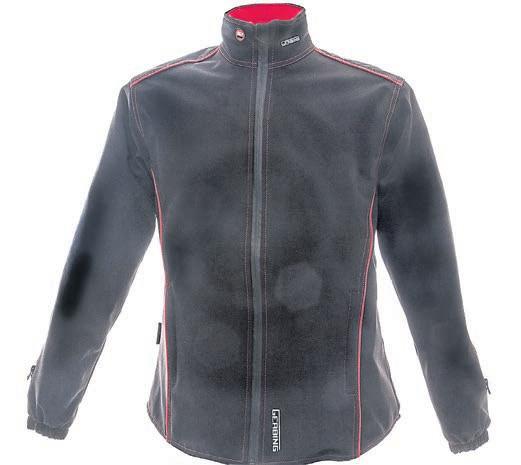

Gerbing stresses connecting to the bike’s battery gives the best results.
I powered the kit using optional battery packs because I regularly hop on and off different bikes. Gerbing advises the battery packs give approximately 100 minutes’ charge on minimum temperature, enough for most people’s commute or a longish weekend ride.

The temperature when testing was 5 or 6 Centigrade (depending which weather app I checked). Add in windchill, that’s a decent test.
The XTREME Urban gloves, even without heat, are full-on, heavy-duty winter kit made from 0.6mm premium Aniline leather with a grippy goatskin palm and Hipora liner. On the lowest setting (each glove has a temperature controller) a gentle warmth adds to the glove, coming through quickly. Switching to medium, after a few minutes it was properly hot (full heat is disabled – it can be switched back on, but that’s meant for long rides in serious sub-zero conditions; on a more stop/start ride you’ll blister your hands). The great thing about independent controllers is you can set different levels on each glove.
So they’re plenty warm, what are they like as riding gloves? Like all thick winter gloves, the trade-off is reduced feel. I’d like a broader span between thumb and forefinger.
I also found the finger fit was spot-on, but the thumbs were long, leaving the tips flapping, so definitely try before you buy. (Since testing, following feedback from me plus other customers, Gerbing has remodelled the glove to deal with the
span and thumb length issues.)
The heat controllers were hard to operate in gloves. Adjusting the level (stationary obviously), I struggled to feel the microswitch in the controller (the colour around the switch changes for the heat level); if I got it wrong I had to wait for the next stop. If you want a more tactile glove (which will improve feel at the switch) Gerbing recommends the XR.
The Premium jacket liner is intended to replace your jacket’s existing one, but can be worn as an additional layer.
As per Gerbing’s recommendation I wore a long-sleeved base layer under the liner. It’s tailored for a compression fit with stretch panels to allow movement without bunching. And it does exactly what it says, staying perfectly in place no matter how I moved on the bike, feeling comfortable at all times.
Heat came through the moment I turned on via the little fob (again on the lowest setting). Like the gloves, I could feel a gentle warmth on my torso and arms. At full heat it was too much for the conditions I was riding in; it will keep you warm and happy around the Zero mark.
IMPORTANT NOTE: If wiring to the bike battery it is essential to purchase a Temperature Controller. Without this the jacket will operate at 100% heat, which unless in extremely cold climates (like Scandinavia) will cause skin discomfort (see ‘How does it fit together?’).
Where are they based
Gerbing’s parent company is based in Appeldoorn in the Netherlands.
Gerbing’s UK team is located in Tunbridge Wells, Kent.
Gerbing’s official importers and distributors for more than 20 years know the products intimately and are always happy to answer any questions.
THE DIFFERENCE BETWEEN SAFETY AND DISASTER
Gerbing made heated jackets for the British Olympics team; both swimmers and gymnasts used the kit. They found that by staying warmer to the last minute, reaction times were 7% quicker. The converse applies as you get colder; reaction times slow and digits stiffen.
At 70mph the Highway Code shows the braking distance as 96 metres, or 24 car lengths. You’re 7% slower – doesn’t
sound much, right? That’s an extra 6.72 metres... or a little over 1.5 cars. So that car you’d normally stop well before hitting? You’ve gone through both it and part of the next one.
www.gerbing.co.uk
GET
TOUCH
IN
SPECIALIST SPOTLIGHT 31
In 1980, Suzuki called its new superbike the Katana, building an aesthetically stunning, cut-back motorcycle designed for individual close-quarter action
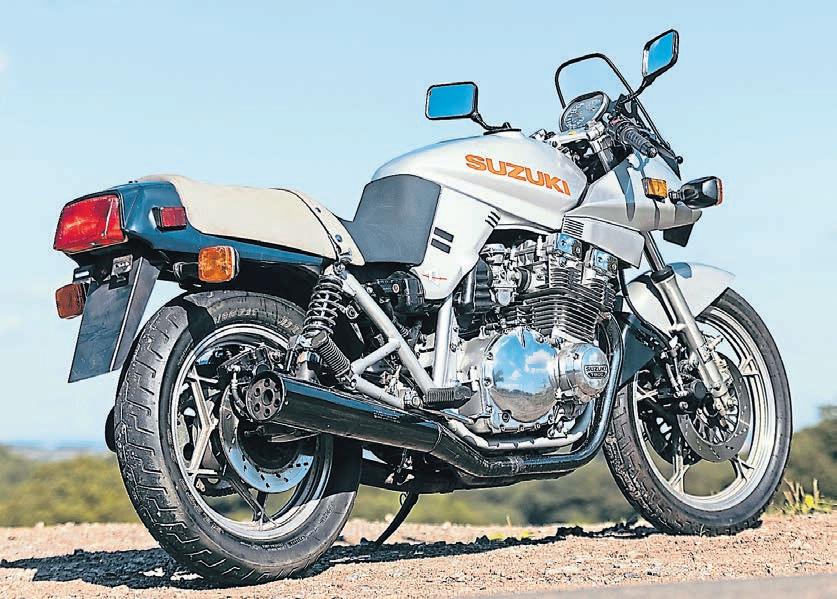
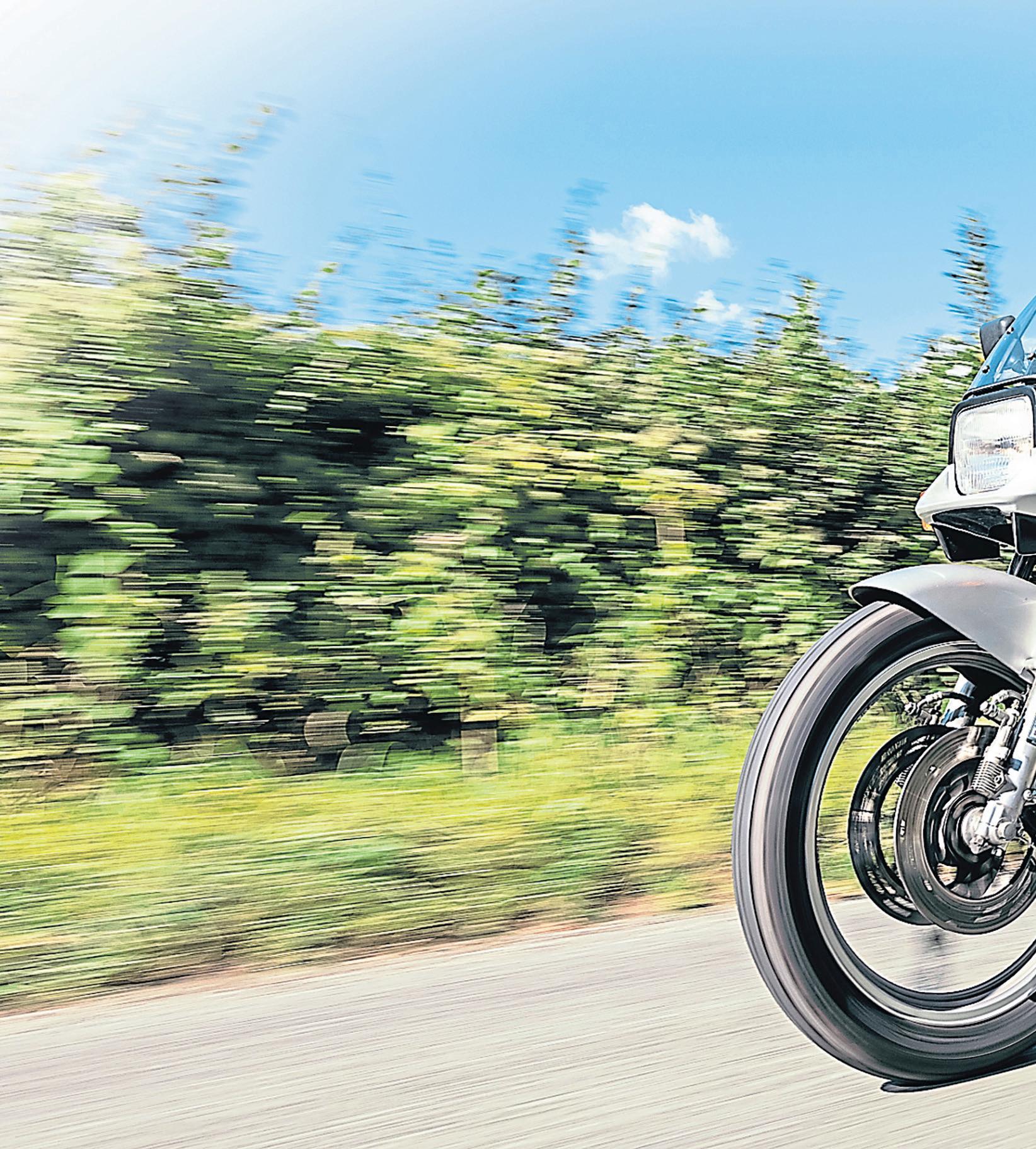
Suzuki Katana 1100
The sword known as the Katana is regarded in Japan as not just a weapon, but also as a work of art. The single-edged blade was first created in the 14th century, when traditional Tachi swords, which were longer, were cut down to make them easier to handle in combat. The Katana was not used as a primary weapon in battle, but rather as a close-quarter blade. It’s probably something to do with being a bit of a fan of science fiction, but the look of the Suzuki Katana has always appealed to me, especially the really big one. It’s also always been beyond my reach financially. Katanas were not cheap when they were new and they aren’t cheap now, either. So, given the opportunity to actually try a virtually unused Katana 1100, I jumped at it. It’s worthy of a good look round it first.
Check out that big front mudguard that, thanks to the black flash, doesn’t look big. That knife-like nose fairing and flyscreen is set to carve its way through traffic, surely. The rectangular headlight sticking up out of that fairing; the clever clocks with one needle sweeping into the path of the other; and the clip-on ’bars are all part of the whole, rather than individual components. There are long, fake air scoops and two fins below the headlight, adding to the sharklike profile. The sharp lines of the tank, with the big red Suzuki logo, stand out, the lines then running down with those ever-so-flash side panels and the space-age choke control, and two black switches for accessories on the left, and two fake switches on the right balance the look.
The bodywork flows backwards until the silver regulator/rectifier on the left becomes part of the design. On the other side, they pull off the same trick with the brake master cylinder... all this below a black and brown suede seat, and a tail piece that looks more like a rocket exhaust port. The amazing black chrome exhausts, from the days when black chrome was a new thing, look great and the matte silver frame completes the look. It would turn anyone’s head. It polarises opinion – just as some love it, there are those who really dislike the look.
Having checked it, let’s sling a leg over it. Ah, now this is interesting. It doesn’t feel like a Japanese
motorcycle at all; not even a 1990s sportsbike. This is doubtless because it’s really a Japanese superbike in a European suit. Feet flat on the ground, you lean far forward over the ’bars. It’s an interesting stance – far more Moto Guzzi Le Mans than chunky old Jap. Let’s check the riding position now, with the sidestand down… This turns the rider into something resembling a sharp Z shape. The feet are way back, far more than something with rearsets have a right to be; the knees are bent so the calves almost touch the thighs; and the upper torso is stretched out in a ‘Here’s my head, my arse is following’ position.
The extremity of the bends I’m contorting my body into requires some adjustment of my dress, as the legs of my jeans need to be hoiked upwards from the knees so I can comfortably move about. I say comfortably, but comfort is a relative concept. My stomach gets in the way, too – my fault. And one thing that concerns me is that getting the feet on to the pegs is so much more difficult than I’d expected. Even that Le Mans was easier to get to grips with than this. It does concern me a little.
With the difficulty getting my stiff old bones into position comes the problem of getting them out of position. Low-speed manoeuvrability is okay once you are rolling, but it comes with the fear that dropping your feet off the pegs to paddle the thing around or stopping it toppling over is a bit of a challenge. If it starts to topple over at walking pace, could I get my feet down in time to stop it? It gets a minute to warm up a little, as a sudden stall is not what I’m looking for at this point.
It doesn’t stall, of course, because big Suzukis go when you ask them to and slow to a tickover when you ask, as well. I’m not taking any chances though, so I engage first, drop the clutch, and leave my legs dangling until the speed picks up, just in case; 512lb (232kg) is a lot of motorcycle to cope with at low speeds. Then I lift my left foot and wedge it into place so I can get into second, and when I do, I lift the right foot and wedge that into place, with my body in a position I can only describe as being like a partlyopened Swiss Army knife. At low speeds, the weight and the long wheelbase feel unnerving; the clip-ons
32 RETRO RIDE
WORDS: Oli Hulme PHOTOS: Gary Chapman
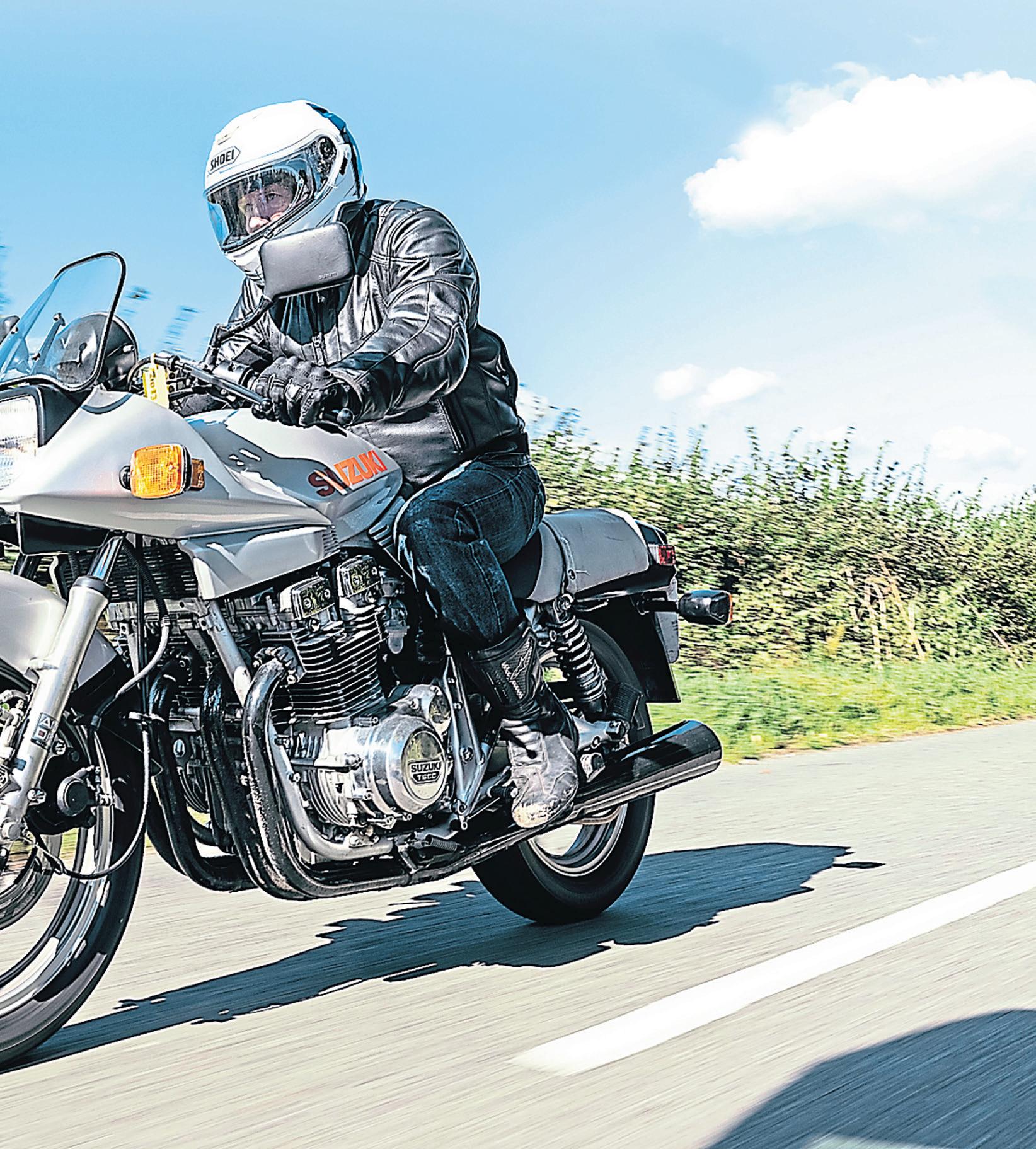
RETRO RIDE 33
are keeping my elbows tight into the sides of the bike; and there’s none of that ‘chuck it about’ feeling.
A Laverda Jota feels more manageable than this. Still, let’s press on and change up a few times. Then we get to 55 or 60mph and suddenly it all comes right. You wouldn’t want to haul this baby round a city centre and you’d think twice about nipping down to the shops on it, but once cruising, that’s when it all starts to work, with all that ‘man and machine in perfect harmony’ thing. The rider and the ride begin blending into a whole. Very sci-fi, in fact.

With the rider down low and the long wheelbase, get the Katana on a sweeping A road and crack it open, hunched behind the flyscreen, and there isn’t a lot that can touch you.



The Katana has a presence that even the doziest rep-mobile driver can’t miss. The gearbox is great, the engine superb; the whole plot feels amazing. But no sooner as we are going, I have to stop and paddle about a bit, then wedge myself back into position and open it up, and the whole process starts all over again.
If I’d had one in my mid-20s, when I
wasn’t afraid of falling off (and it was my own Katana rather than someone else’s), I would have laughed off the riding position. It wouldn’t have bothered me in the slightest. Mark at Somerset Classics was far more at home on the Katana than I, but then he’s carrying a lot less ‘baggage’. It really needs a rider who looks after themselves... a rider who suits flexible full-race leathers, race boots, and a Simpson Bandit Star Wars helmet rather than some stiff old boy in waxed cotton, Kevlar jeans, budget ankle boots and an open-face Davida. I really should have bought one in 1983, when I’d have appreciated it. If I bought one today, I’d have to factor a gym membership into the ownership costs, just to make sure I was fit to ride it. And then, after dragging myself off it, I’d turn back around and think how amazing it looks for a 40-year-old motorcycle, and maybe, just maybe, with a few sacrifices, the effort really would be worth it.
Many thanks, as always, to the most excellent folk at Somerset Classic Motorcycles for the loan of the Katana. Still available as we go to press, you can buy it for £8995.
OWNERS CLUB
Vintage Japanese Motorcycle Club www.vjmc.com
SPECIALISTS Crooks Suzuki 01229 822120
Suzuki Vintage Parts Programme www.bikes.suzuki.co.uk/ vintage-parts-programme
The Katana: A guide
When the Katana appeared in 1981, it turned up in a world where Japanese design appeared to have stagnated a little. Big motorcycles had got bigger and more bulbous. The coffin-tanked big Kawasakis didn’t have the charm of the old swoopy originals. Yamaha seemed to have lost its way and didn’t know where to go next.
And though Honda had come out of the gate with the incredible CBX1000, its DOHC fours weren’t quite brave enough with the Eurostyle bodywork. The mistake had been made of making them look a little too like their own 250 twins – which is never going to be a good thing. Your big bike buyer wants something that makes a point.
Suzuki had lost its mojo, too. Its first fours had come with a sleek look. Even the GS1000S, with the nose fairing and ice cream truck paint scheme, had smooth lines. But the GSX replacements for the two-valve -per-cylinder four, with the four-valve head and ‘twin swirl combustion chambers’ (TSCC) were covered in lumps and garish stickon colour schemes. It was almost as if in the 10 years it’d spent creating the mass-market big bike industry, it had forgotten that it was important to build visually imaginative motorcycles. And so, to create the Katana, Suzuki came to Europe. It had got form in this area.
The inspiration for the original Suzuki GS range is rumoured to have come from the MV Agusta fours, and Suzuki used an Italian design for its TSCC system.
It first approached Italian designers Italdesign, who styled Ferraris, Lamborghinis, and (less successfully) Morris cars. But in the end, it settled on German company Target, a three-man design team headed by Hans Muth, the man who’d come up with the revolutionary BMW R100RS before breaking out alone. Target had created an MV custom

34 RETRO RIDE
TECH SPEC
Suzuki Katana
ENGINE:
POWER: 108bhp @ 8500rpm
GEARBOX: Five-speed
FINAL
BRAKES:
TYRES: Front 3.50v x 19; rear 4.50v x 17
SEAT HEIGHT: 30.5in/775mm
WHEELBASE: 59.8in/1520mm
DRY WEIGHT: 512lb/232kg
FUEL CAPACITY: 4.8 gallons/22 litres
TOP SPEED: 141mph
PRICE: Today, for a good runner in great condition, £9000-11,000
for a competition run by a German magazine, Motorrad Revue, and the bodywork it built for the MV bears a marked resemblance to the bike it came up with for Suzuki.The Katana wasn’t just a GSX1100 with a fancy body kit on it.
There were new forks with an antidive system linked to the hydraulics of the front brakes. Riders either loved or hated the anti-dive, with a few suggesting that rather than improving the handling, it made the front wheel skittish. A simple modification was to hold the pipe banjo in place with an M8 bolt, disconnecting the system but leaving it in place.
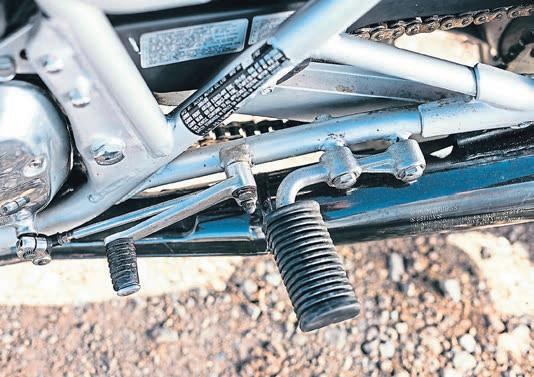
The rearsets were new and sited nine inches further back than the basic model. The rear shocks with Koni-style click-adjustable damping were longer and stiffer than those on the GSX. By modern standards, the wheels were skinny for such a big bike: a 3.50x19in front and 4.50x17in rear. The swingarm was a box section aluminium affair.
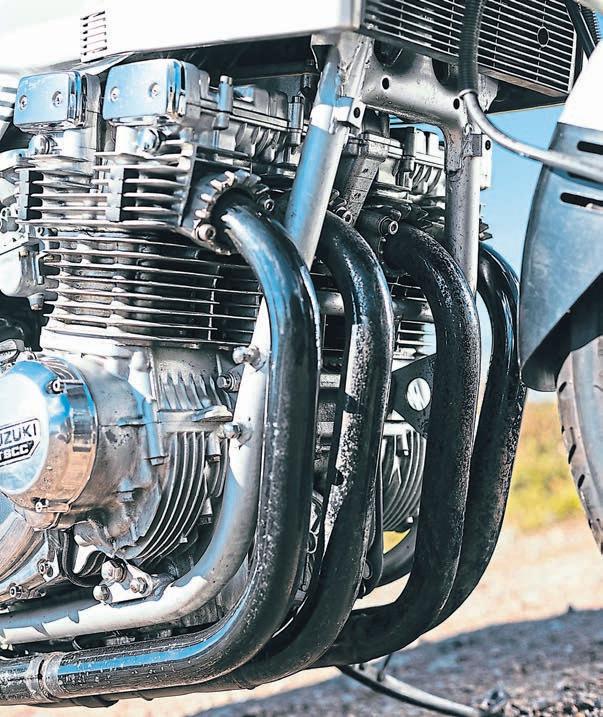


The engine, already powerful, got an extra 11bhp, taking it out to 110bhp at 6500rpm, thanks largely to the TSCC system. This divided the combustion chamber dome into two oblong sections with a shallow ridge running down the middle, front to rear, effectively creating two swirls of fuel air mixture, mixing it up
better and evening the charge during the intake process. The camshafts operated on forked rockers, and there was a pressed-together crankshaft and one-piece conrods, with a helical gear sending the power to the back of the clutch basket. Later models got forged pistons, too. Thanks to all this metallurgical magic, the Katana engine could manage a top speed of more than 140mph. Because motorcycle manufacturers can’t stop fiddling with things, and because buyers always want the shiny and new, in 1983 the old five-spoke wheels that were common to the rest of Suzuki’s range became six-spoke. The stunning original silver paint scheme was mucked about with, and the engine was painted black. The design became a little diluted as Suzuki adapted it for its 550 and 650 variants. It even made 250 and 400cc versions in the original style for the diminutive contortionist in your life.
And then the old Katana was replaced by a version with a pop-up headlight in white. It wasn’t quite as brave a design as the original, but it was easier to ride. Suzuki built a replica of the original in 2000, and a ‘new’ Katana arrived a few years ago. Sadly, it doesn’t have the jaw-dropping looks of the insane, overpowered, uncomfortable original. You can’t improve on perfection.
Alternatively,
1980s Japanese muscle
The Katana had rivals for the big-bore title. Here’s a few to choose from...


Kawasaki GPz 1100
In 1981, Kawasaki took its by now venerable big four and punched it out another 75cc to create the GPz1100, a giant that summed up the early 1980s. Big and brutal in every respect, the first one was simply a beefed-up version of the Z1000, and the important thing seemed to be to make it faster, and not try to cope with any extra power.

Price: £4000-£7000
Honda CB1100R/F
If you ignore the impossibleto-ignore CBX1000, which was a different kettle of fish altogether, Honda originally entered the muscle bike world with the CB1100R. This is a street-legal racer based on the CB900F. It raced in the Australian Castrol Six Hours races and in production series in the UK and won – a lot. A road-going race machine, it is a hand-built, track-refined tool built for one reason only – winning.
Price: £6000-£10,000
Yamaha V-Max
Yamaha didn’t really embrace the muscle bike at first, with its XS1100 being far more touring orientated, even when it evolved into the FJ1100/1200. But in 1985 it came up with the utterly ridiculous V-Max. Even back in the day, the V-Max was a pretty over-the-top motorbike. Full power models are the most desirable, producing 145bhp.
Price £4000-£6500. Add £1000 at least for full power versions.
Suzuki GSX1100E/EFE
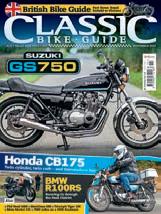

Before the Katana, Suzuki had the GSX1100E. It was very similar, with a less highly-tuned version of the TSCC engine. Styling was the antithesis of the Katana, too. Big and brash and covered in stick-on graphics, there was a square headlight and something that looked a little like a nacelle. It weighed 535lb, which was lighter than its rivals, and the forks went up and down and came with air preload.
Price: £3000-£5000

pre-order your next issue of Classic
Guide,
To
Bike
head to classicmagazines.co.uk/pre-order-cbg
scan the QR code on this page and order your next copy today. We will send it directly to you! Save time by not having to nip to the shop!
1074cc, air-cooled, 16-valve, DOHC, in-line four
DRIVE: Chain frame: Steel-tubed double cradle
SUSPENSION: Front telescopic anti-dive forks adjustable pneumatic preload; rear twin shocks with damping adjustment
Front twin 275mm discs with single-piston callipers; rear 275mm disc with single-piston calliper
RETRO RIDE 35



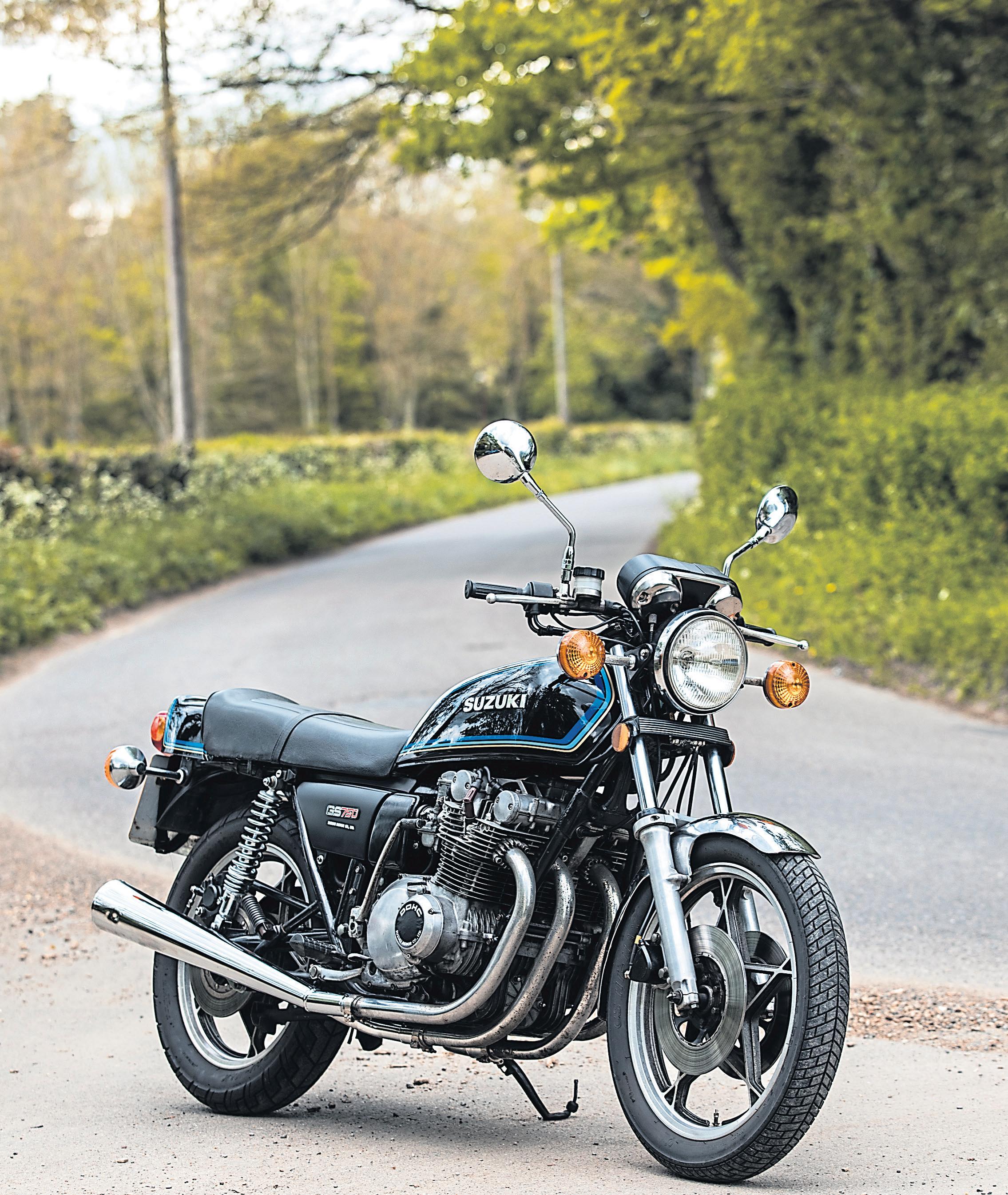
Cost-effective Classics Suzuki GS750 Classic 70s Japanese superbikes don’t come much better or cheaper! COST-EFFECTIVE CLASSICS 37
Now here’s a genuinely classy piece of kit that not only makes for a cost-effective classic but also majors in handling, reliability, good engineering and reasonably decent spares supply. Fast enough for most riders into classic, and graced with subtle, restrained styling rather than many gauche 1970s offerings, Suzuki’s GS750 is something of a hidden gem. The pundits will probably tell you to buy the bigger, faster GS1000 muscle bike but they are generally outside our self-set budget… which for us is actually good news.
Background

The GS750 was very much Suzuki’s lifeline when the notorious RE5 Wankel engined bike bombed so spectacularly. Environmental pressures had effectively killed off Suzuki’s two-strokes so the firm needed a flagship four-stroke machine if it was to survive. Suzuki had kept a very strategic Plan B simmering on the back burner throughout the RE5’s tortuous development, launch and death, which eventually paid them back in spades. If any motorcycle manufacturer spectacularly snatched victory back from the jaws of defeat then this is the one.
The bike

Suzuki was smart enough to realise there really was no need to reinvent the wheel. Honda had set the benchmark back in 1969 with its

seminal CB750/4 but Kawasaki had effectively kicked The Big Aitch into the long grass with its Z1 900 just three years later. Not only was the Kawasaki larger in capacity, it also acquired the bragging rights via its double overheard cams; this and the extra 150ccs totally aced the Honda on the street and on the track.
Suzuki’s product planner looked to the mighty Z1 and studied it long and hard while also assiduously reading the contemporary road tests and mechanical analysis.


There was little if anything wrong with the Z1’s motor so Suzuki simply ‘reverse engineered’ it down to 750ccs and gave it Suzuki’s spin and styling.

Key to both the Z1 and the GS750 motors’ reliability was the use of builtup cranks featuring roller bearing bottom ends. It was no coincidence that both manufacturers had long histories with such set ups via their older two strokes. A roller bearing crank on a four-stroke, fed with fresh, filtered oil, was the pinnacle of long-term reliability and it’s no coincidence that both Kawasaki’s and Suzuki’s air-cooled fours did so well in drag, endurance and track racing. Within limits the bottom end of either was pretty much bulletproof.
If the Z1-derived motor was effectively a straight crib, the chassis was anything but. The Kawasaki was known to be more than a little
suspect in the handling stakes and even if it wasn’t as scary as the earlier two-stroke triples the Z1 and its descendants could certainly ‘have their moments’. Until the launch of the GS750, manufacturers had generally struggled to get their bigger bikes to handle acceptably. Some of this was down to poorly understood suspension requirements and dubious tyres, but a lot came down to frame design. With the GS750, Suzuki went back to basics and created an entirely new chassis that bore no relevance to anything it’d made before. The headstock was well braced with carefully considered sheet steel gussets and short tubular cross braces connecting the upper frame rails to the spine. Below the headstock were more steel pressings welded to the tops of the down tubes. Elsewhere, heavy twin-walled pressings reinforced the lower rear engine mounts and swing arm pivot area which ran needle roller bearings. Many consider the GS750 to be the first big bore Japanese bike that handled properly.
38 COST-EFFECTIVE CLASSICS
WORDS: Steve Cooper PHOTOS: Gary Chapman and Mortons Archive
Another facet of Suzuki’s diligent and attentive analysis of the Z1 and its competitors’ offering was the rejection of a four-pipe, four-silencer, exhaust system. Although the arrangement shouted ‘four cylinders’ to anyone behind, it also added unnecessary mass and bulk. Suzuki opted to go for a 4 into 2 system which, arguably, lost it some bragging rights but did reduce weight. If the bike did have a fault it was probably one of image rather than any technical deficiency. Its styling was subtle and restrained with none of the gaudy, glittery paintwork and loud graphics that had be the norm previously. The launch model also ran matte black side panels which, although part of a corporate image, seemed to ‘dumb down’ the bike’s appearance. That said, those who voted with their wallets soon came to appreciate just how potent
and effective the GS750 was. Such was the bike’s impact that one period road test called the GS750 ‘The Superbike Snake in the Grass’ because it was just so understated yet exquisitely effective… which is probably one of the best compliments ever paid to a motorcycle!
Lineage and Legacy
The GS750 would go on to have a six-year model life with little other than cosmetic changes, but would also catalyse the launch of the hugely influential and successful GS1000. Suzuki was reassured of the 750’s rightness of design and effectively took half of the motor to build the extremely popular GS400 twin. Suzuki’s first 750 four would also spawn numerous other GS iterations before gaining a 16-valve cylinder head to become the GSX750.

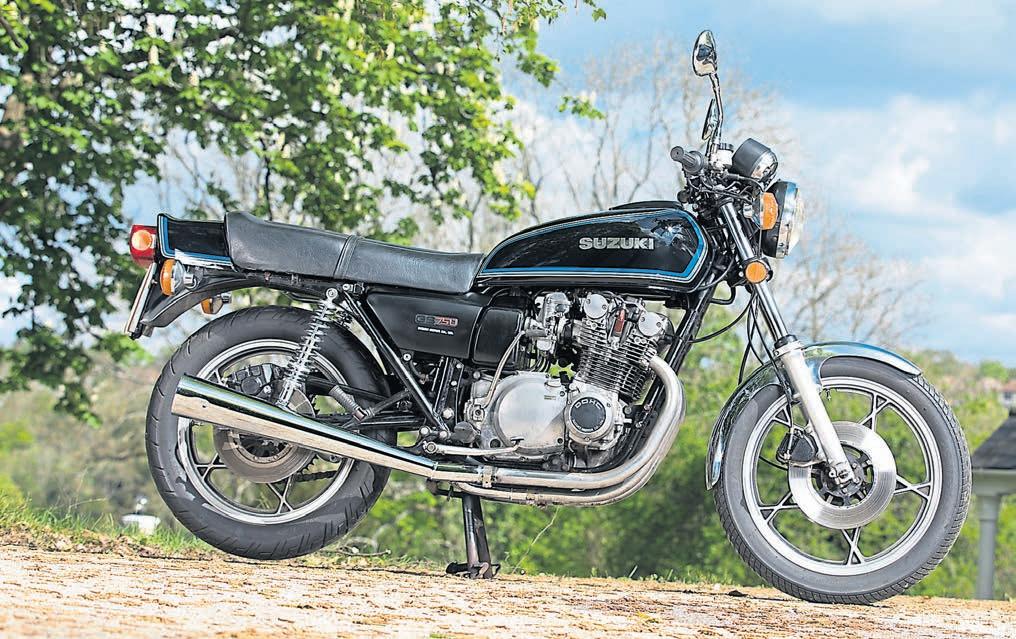
Faults and Foibles
1. ELECTRICS
Suzuki opted for a whack-job charging system but it’s easily fixed if it hasn’t been done already.
2. VALVE CLEARANCES
Sometimes overlooked but needs checking. You’ll need a readily available tool and some spare shims – or a mate who already has the kit.
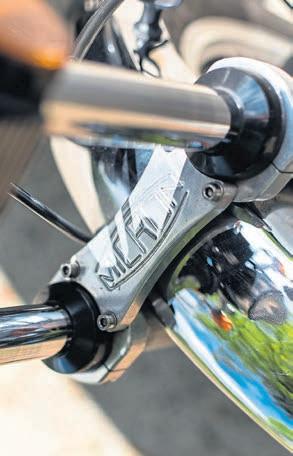
3. ENGINE

Hugely under-stressed motor that just needs regular oil and filters changes.
4. GEARBOX
One of the best of its type. If it fails to select or jumps out of gear walk away –Suzuki’s gearboxes are normally bombproof!

5. BRAKES
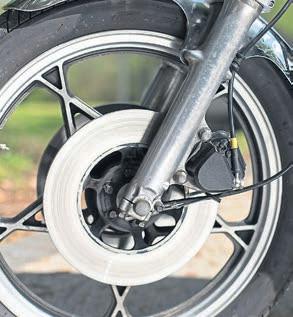
Of their time but better than many. A good service, modern pads and armoured brake hoses will hugely enhance what’s there as standard.
6. SUSPENSION
Nothing much to worry about other than pitted forks and leaking seals. Aftermarket rear shocks recommended if the OEM units have lost damping.
7. CARBURETTORS/ INLET RUBBERS
Will probably benefit from a good clean and possibly new pilot jets if they’re really cruddy. Inlet rubbers go hard with age and can leak in too much air.
Ultimately the incredibly potent GSX-R range also owes their existence to the GS750 – the machine that saved Suzuki from possible bankruptcy.
Why you might want one now
Nothing of the period comes close to the GS750 in terms of VFM (value for money), reliability, ease of use and sheer fun. It’s lighter than most of its peers, handles better than them, and just keeps on coming back for more.
In fact, it’s very possibly the best aircooled 750 ever made yet it remains stupidly overlooked.
It had very few foibles and any that existed have been addressed or can be via 40-plus years of ownership experience. The bike is sometimes sited as the original UJM (Universal Japanese Motorcycle), which has to be one of the best two-wheeled, backhanded compliments ever!
Typical Prices

Supremely tidy and original examples can be snapped up for less than £3500 – how good is that? A mid-1970s superbike for so little dosh? You’ll genuinely struggle to find better for the money. Projects are out there for frankly silly money. A rougher example in need of work will set you back just £1200 and one in really good condition simply requiring some TLC could be yours for less than two grand – you cannot buy a manky sports moped in boxes for that sort of money! If we had to pick anything to avoid it would be an example someone had hipsterised into a café racer. No matter what’s been done and how much money has been poured into a cut-about GS750 really isn’t worth £5000 of anyone’s hard-earned!
SummaryNothing, absolutely nothing from the mid-1970s offers as much as a good Suzuki GS750 and we’re frankly amazed the classic scene still hasn’t cottoned on to these hugely underrated machines. Forget your Z1s and Z900s, swerve the bigger GS1000 and understand that sometimes less really is more!
1 4 5 6 7 2 3 COST-EFFECTIVE CLASSICS 39
RETURN OF THE SCREAMER
If the 1996 season had been anything it had been prophetic and 1997’s was going to be the true validation of HRC’s relentless pursuit of Grand Prix domination. The top five places were all Honda’s with two more inside the top 10. Neither Yamaha nor Suzuki had anything or anyone that could come close to the NSR500s and their riders. So good was the machine with Doohan on board that together they won 12 of the 15 races that season;took a pair of seconds only for Doohan to fall off at his home GP Phillip Island whilst leading by six seconds. Try too hard? A moment’s lapse of concentration? Bad luck? Regardless of that unfortunate off, Mick Doohan had now won the 500 GP crown an amazing four times and, almost unheard of, had actually secured it at the British Donington GP with four races still to go! This would prove to be Doohan’s most impressive season when he scored a phenomenal 340 points with second-placed rider Tadayuki Okada ‘only’ managing
197. Arch rival yet teammate Alex Crivillé had started well and won his home GP at Jerez but following a bad practice crash at Assen mid-season he would go on to miss a further four subsequent GPs, effectively wiping out his chances. Okada had started the season well and looked to be in with a chance but Doohan had played a wild card, totally wrong-footing his Honda teammates.
Despite walking away from the more powerful Big Bang motor with water injection back in 1994, Doohan reckoned, or realised, he might need an edge for the 1997 season. Against all logic, track-proven records, data and, crucially, results, the gritty Aussie decided to revert back to the so-called Screamer motor. This was, at first glance, a moment of pure madness – with its full-on power delivery
The Screamer was the bike that had given Doohan those horrendous leg injuries. Surely only a madman would give that particular animal a second opportunity to bite back?

The truth was that The Screamer engine was ultimately snappier in its power delivery and if that gave the man an edge he was prepared to give the motor a second chance.


That none of his teammates wanted to risk The Screamer was testament to its reputation and the easier going (a relative term) nature of The Big Bang motor. No one wanted to risk the tyre spinning missile for fear of serious injury!
And yet there was method in this apparent madness – the 1997 Screamer wasn’t the same beast as the original, tyre-eating, bone-breaking, 1991 machine. Substantial revisions based upon the intervening years had meant HRC’s boffins had revised the all-important electronics that were increasingly controlling key elements of the bike; they’d also learnt even more about port designs, making The Screamer’s power delivery less volatile and unpredictable. Then add in six years’ worth of suspension and chassis knowledge, and the bike’s fearsome reputation was actually more myth than fact. Doohan went on record to state that The Screamer’s power was the same as the Big Bang’s but, crucially, Doohan had demonstrated in closed season testing he was the master of the bike. In reality, all of the other Honda riders had really only ever ridden The Big Bang versions of the NSR500 and

were intimidated by The Screamer’s fearsome reputation. When the likes of Crivillé, Okada and Aoki had tried, The Screamer had bitten them hard and often spat them off. Doohan knew how to ride that bike but wasn’t about to reveal his techniques to anyone who might try to beat him. His all-season dominance was therefore as much about the psychology of the apparent supremacy from the awesome machine as is was about its real potential.
All of which gave Mick Doohan a serious edge and almost certainly helped to partially demoralise his teammates and potential rivals. That Doohan had self-belief was also a

key element of his now almost total domination of the premier class, but there was another rider in the wings ready to start snapping at the champ’s heels. 250 GP supremo, Max Biaggi, had signed up for the big time and what he might have lacked in 500GP experience he certainly made up for in confidence – 1998 was going to be something rather special.
The VJMC – run by motorcyclists for motorcyclists. For membership enquiries only Tel: 01454 501310 Email: membership_vjmc@yahoo. co.uk Address: PO Box 1949, Yate, Bristol BS37 0BX Office hours: Mon-Thurs,10am4pm (please leave a message)





40 VJMC – THE INSIDE LINE TO JAPANESE CLASSICS
WANT YOUR FIX OF JAPANESE CLASSICS? THEN YOU NEED... Visit www.classicmagazines.co.uk/cmm215 Call: 01507 529529 and quote: CMM215 6 issues for £22* Expiry: 31/01/23 *UK only offer *Followed by £22 every six months
WORDS: Steve Cooper PHOTOS: Mortons Media Archive








 Does this wallet-friendly commuter scooter hold its own against some tough competition?
Does this wallet-friendly commuter scooter hold its own against some tough competition?
42 FIRST RIDE: SINNIS CONNECT 125
WORDS: Nick Ellis PHOTOS: Gary Chapman
The 125cc scooter market is seriously competitive. From delivery drivers looking for a way to ferry their wares around town and city-dwelling commuters sick of public transport, through to rural residing teens with no other way to get to college, there’s a huge amount of demand for affordable, efficient and hardy scooters that’ll start on the button every time. All the biggest names in the game have their own slightly unique take on what exactly that means, but there’s also a whole host of slightly lesser-known firms who have something to offer. One of those is Sinnis.
We’ve always been pleasantly surprised with the level of quality of the bikes and scooters imported and distributed under the Sinnis name. But would its latest cut-price commuter live up to the expectation? We spend a couple of weeks with it to find out.
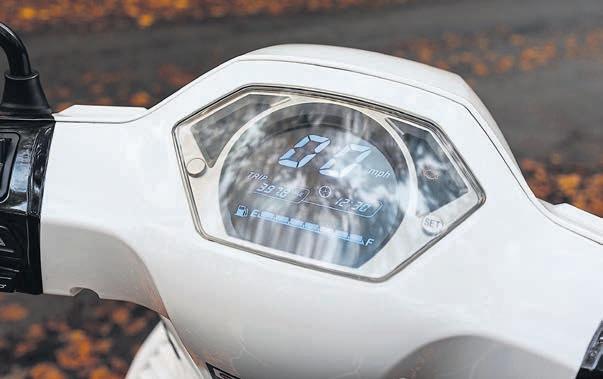



First impressions are good. While it’s immediately obvious that the Connect has been built to a budget, there’s the same decent level of finish I’ve become accustomed to from the Sinnis range. There’s not a whole load of goodies to get excited about, but the basic LCD dash does the job, the switchgear feels reassuringly sturdy and there’s an easily accessible USB port to plug my phone in. What more do you really need?
Weighing in at only 120kg, it’s easy to shift around – and with a 790mm seat height, should be easy to get on with for those with shorter legs. The seat’s not exactly plush, but I found it plenty comfortable enough for longer stints, and it’s deceptively roomy, too. I’m 6ft 1in and often feel a bit squeezed when jumping on smallercapacity scoots. No such problems with the Connect, although I did find that tight turns could be made more
bars being obstructed by my knees. Not really an issue though, I simply shifted my knee out slightly further and all was well. The only slight disappointment was the lack of space under the seat. No matter how hard I tried, I couldn’t squeeze my full-face lid underneath (and I even tried an open-face one and had no success with that). It’s not a major issue, but it is nice to be able to stow your helmet when you park up – though I had no problem filling the space with some spare gloves, waterproofs and a small lock instead.
Thankfully, there is a (relatively compact) optional top box available which’ll happily swallow up a lid and more.
On the road the Connect is good. The back-to-basics 125cc single-cylinder, fou-stroke, air-cooled engine has 8.8bhp and 6.4lb-ft of torque to play with and offers brisk enough acceleration off the line to get the jump on fourwheeled traffic. Pin the throttle and you’ll quickly reach 40mph, and hang on a bit longer and you’ll soon be hitting its top speed of around 55mph. It’s much, much more at home in
and around town, but I had a couple of stints on busy A-roads and it just about held its own without too much trouble (though thankfully I was not to come across any big hills).
There’s no official information about the fuel tank size but with similar, basic big-wheeled competition generally offering five litres, it’d not be unreasonable to expect the Sinnis has the same. I managed to get close to 100mpg from the Connect after a couple of tanks of fuel, which means that it should be reasonable to expect to cover over 100 miles between trips to the petrol station.
Stopping is looked after by single disc brakes at both the front and rear. They’re linked, which means that if you used the back brake, then a small amount of front brake is applied (and vice-versa). They actually


proved surprisingly sharp, offering a good amount of power to pull the lightweight scooter to a halt in no time at all. I’d encourage new riders to treat them with care as I was shocked by how quickly they hauled me up the first time I used them.
Suspension is basic, but soft enough to soak up the lumpy roads of rural Lincolnshire (those larger 16-inch wheels help), while still being stiff enough to offer good levels of handling when upping the pace. A nice touch is the preload adjustment at the rear, which allows you to set the scooter up if you’re going to be carrying a pillion or delivering a load of pizzas.
The scooter manages fast cornering well, but it’s much happier being


thrown around in town. It’s at its best nipping through traffic, squeezing through small gaps and being turned in tight spaces. It feels light and nimble and is very easy to ride –and that’s what most scooter riders want, right?
While the Connect might not be quite as well equipped as some of the more bigger name machines, it is well worth a look if you’re in the market for a wallet-friendly option that’ll get you from A to B with minimal fuss. And with a two-year warranty (including breakdown recovery for the first year), a decent range of dealer coverage across the UK, and affordable servicing and easily obtainable parts, you’ll be covered if something goes wrong, too.
Sinnis Connect
Engine: 125cc single-cylinder, four-stroke, 2-valve, air-cooled SOHC, fuel-injected Power: 8.8bhp (7.2KW) @ 8000rpm Torque: 6.4lb-ft (8.5Nm) @ 7500rpm Transmission: Variable belt drive Frame: Steel Suspension: (F) Telescopic fork (R) Twin shock absorbers Brakes: (F) Single disc, three-piston calliper (R) Single disc, Single piston calliper Wheels/Tyres: (F) 110/70-16 (R) 110/70-16 Seat height: 790mm Weight: 120kg Warranty: Two years parts, one year’s labour and breakdown recovery Price: £2299 + OTR Contact: www.sinnismotorcycles.com
TECH SPEC
FIRST RIDE: SINNIS CONNECT 125 43
Starting out as Moby Dicks Scooters, in 1999 Richard Hulland and family became owners and were awarded a Kawasaki franchise, becoming Derby Kawasaki in 2017. Along the way they have picked up a number of awards, moving in 2013 to their current location, between Nottingham and Derby, just off the A52, Junction 25 of the M1 in Chapel Row, Borrowash… in a former chapel!
MB: Why Kawasaki?
Richard: From the moment we started out dealing motorcycles, the desire was always to partner with Kawasaki. I honestly believe they’re the best bikes in the world with the best philosophy. Top Gun also had a positive impression in my teenage years, so of course I wanted to work with them. And I put my money where my mouth is, as I ride the best motorcycle on the planet, the awesome ZH2!
MB: You’re based in an old chapel! How did you get your hands on this building and was it a challenge converting?
R: Previously we dealt out of an old Renault car dealership site close to the centre of Derby, which was pretty much like a lot of dealerships out there, a square box and soulless.
I lived in Borrowash for a couple of years and the old Wesleyan chapel (1825) was put up for sale in 2009.The building has had many uses after closing as a chapel in the early 1900s. It
As well as being able to buy new Kawasakis and preowned motorcycles, you can also bring your motorcycle in for servicing, MoT test repairs and general motorcycle maintenance if required.



With over 20 years as a dealer, they must be doing something (or rather a lot of things) right. We spoke to Richard to see what makes him and his business tick.
was a joinery sawmill for several decades up until 2006.
The chapel was in really bad shape and an eyesore as it had fallen into serious disrepair.
Interestingly, the chapel was used for dealing in the ‘green’ prior to Derby Kawasaki, as 20 firefighters tackled a fire at the building in 2009, where a cannabis factory had an electrical fault through tapping into the street’s electricity and the chapel was set ablaze.
It was not long after the fire when the building was put up for sale and some doughnut (me) purchased the building and committed themselves to the challenge of breathing new life into the building.
The chapel has real character and a lovely place to ride the journey of time, oh, and all bikes go with a free blessing!
MB: Someone comes into the dealership and says: “I want that bike, but 30 miles down the road they’re selling it for £500
less, can you match it?” What do you say?
R: Why would I devalue the product they are buying by putting it out for less than the price Kawasaki has carefully worked out? If I sell it for less, then what am I saying about the bike and what are we doing to the bike’s future value? Yes, I could play that game, but it’s not what we’re about. We’re about developing long-term relationships with our customers, not just pushing bikes out the door.
MB: This very much reminds me of when I spoke to MV Agusta’s CEO, Timur Sardarov. He has no time for what he refers to as ‘Supermarket Dealers’; outfits that ‘stack ’em high, sell ’em low’, with no real connection to the brand.
R: Absolutely. We are Kawasaki; we love and know the brand inside out; we take our time to understand our customers’ needs; we extract as much information about what they want
44 SPECIALIST SPOTLIGHT
A good motorcycle dealership is a special place. Aside from selling the latest and greatest bikes, the best ones are pillars of the community, offering guidance, advice and quality customer service that make punters come back for years to come. That’s why we want to shine a light on the work of one we’ve heard nothing but good things about: Derby Kawasaki.
WORDS: Bob Pickett PHOTOS: Derby Kawasaki
so we can advise on what they’ll possibly need. For us it’s all about communication and information; we want all our customers to make informed decisions.
MB: Do you stock the full range as demo bikes, or is it select models? If the latter, if someone wants to test another bike, is this something you can arrange?
R: We normally have a six-bike demo fleet which will always consist of the latest models and most requested bikes. Also, annually we host the Kawasaki Demo day event where the full range of Kawasakis are available for testing. We are holding the demo event next year in July. We also have an extensive range of used bikes that can be taken out for a ride.
MB: What’s your approach regarding your pre-owned stock?
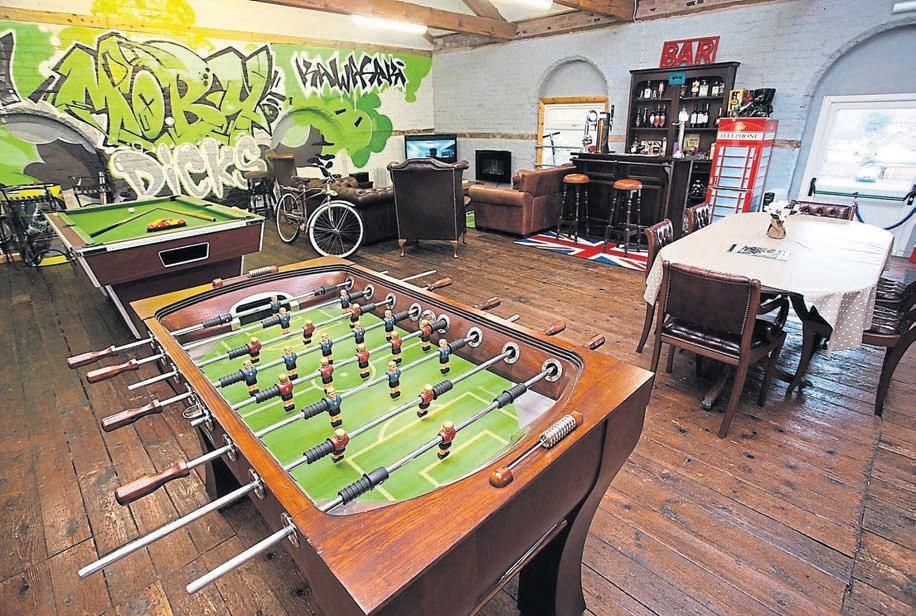
R: Well, there’s more wiggle room here, but again we’re not looking to shove them out the door; we only offer quality used bikes that are fully inspected and prepared before sale. We want to provide our customers with a passionate experience, premium advice, and a quality bike, followed up with an after-sales experience that is second-to-none.
MB: You come back to longterm relationships time and again, is this core to your strategy?
R: Totally and it works. We have customers that have been with us since the beginning, buying 20 bikes in 20 years. The ones
who will just drop in for a chat. And for them, we go the extra mile. Call up and say: “Can you do us a favour and take a look at my bike?” We’ll put in an extra shift and stay on a bit later in order to keep these customers/ friends rolling.”
MB: Outside of selling bikes, what else do you offer your customers?

R: We’re really into bike racing and working in partnership with Leon Haslam’s racing academy (Affinity Sports Academy). We have use of their hospitality suite facility in the British SuperBike races so that our customers can enjoy VIP hospitality at BSB rounds and WSB at Donnington. We offer free coffee mornings on every first Saturday of the month, when customers come in for a cuppa, pastries and discounts in-store. We like to run giveaways on special dates all-year around – a way to emphasise the love for bikes on any occasion and give nice treats to our customers. Customers are always welcome to pop in for a drink and relax i n our VIP lounge upstairs, where we also hold events with music and snacks.
MB: Do you stock kit outside of the Kawasaki clothing range?



What about crash helmets?
R: We stock pretty much everything Kawasaki offers, from its clothing and merchandise line up. Also we have some Alpinestars rider wear and a large range of Oxford products. We have had HJC helmets in store for more than 10 years now and believe they are great value.

MB: I’ve seen some reviews. This was typical: ‘I cannot say enough about this dealer. You
are treated like an old friend as soon as you walk through the door for the first time and they bend over backwards to look after you. I’ve bought a bike from there and a small but niggling fault was put right without the slightest fuss as soon as possible after I’d contacted them.’ How does it make you feel when you get this kind of response to you and your team?
R: It’s lovely when customers feel our passion and motivate us with warm comments. We are
here genuinely to have fun and enjoy the day-to-day challenges of the motorcycle world. Honesty genuinely is the best policy.
MB: Your passion for the business is obvious, so what keeps your enthusiasm for the job, year after year?
R: I can honestly say that when I wake up in the morning, I am looking forward to coming in. I can’t call it work, I’m coming in to talk about bikes and green bikes at that... what could be better than that?”

GET IN TOUCH www.derbykawasaki.co.uk 01332 208700 Derby Kawasaki Chapel Row Borrowash Derby DE72 3LR SPECIALIST SPOTLIGHT 45


































Welcome to Watt Bike. The electric market’s getting bigger and bigger – that’s why we’ve introduced this standalone section that’s dedicated to all things electric. We’ll be bringing you news, products, guidance, tips, tricks and, most importantly, reviews of the latest and greatest electric bikes, scooters and pedalecs to come to market every single month.
E-BIKE EVOLUTION
Not content with supplying some of the biggest cycling brands in the world with their E-Motors, 2023 sees three new Yamaha E-Bikes dropping into dealers. We headed to northern Spain for the European launch.
These may be three completely new e-bikes for launch but this is by no means a new venture, as Yamaha has been in e-bike game for years. In fact, on announcing the launch of these electric steeds for mountain, gravel and urban sectors, the company proclaimed that they were the ‘spark that ignited the whole e-bike movement’ (see what they did there), and with the innovative Yamaha PAS launched for the Japanese market some 30 years ago, who is going to argue?
What is for sure is that the ‘e-bike’ is now commonplace. One of the most eagerly sought-after products during lockdown, with a continuous increase in popularity as a very real option for adopters of the zero-emission commute, as well as
the new adventures these power assisted two-wheelers offer for sport and leisure. In 2021 sales in the UK reached 250,000 units, but when you consider Germany sold over two million that very same year you can see why there is a lot of work and investment into the ever-expanding e-market.
The motorcycle industry is one of these adopters; ranges of apparel dedicated to the cyclist are being adapted from off-road origins and new bikes are expected from numerous manufacturers over the next few years. We have already seen the likes of Fantic Motor showing off their e-bikes at Motorcycle Live; Ducati’s collaboration with Italian bike manufacturer THOK has also been turning heads for a couple
of years now; and we can expect GasGas and Husqvarna to join the charge soon.
As for Yamaha, this is no collaboration, neither is it new considering that it has been supplying the motors for numerous ‘recognised’ bike manufacturers for years. Its motors power the likes of Giant e-bikes and are highly respected units alongside motors from the likes of Shimano and Bosch. It is only right that Yamaha continues what it started 30 years ago with a line-up of e-bikes that, with a few choice cycling parts from Shimano, Rockshox and Magna, enter an ever-growing and more competitive market with its own design and tech surrounding an already proven, reliable and solid electric motor.
YDX MORO 07
Having always ridden mountain bikes, with an upweighted passion for the sport since lockdown, the Moro 07 was the one I was most excited to test. Having spent a lot of time on trails with e-bike riders, I have already witnessed the benefits of assistance up hills, leaving the rider fresh and full of energy to tackle the reward of a downhill section the other side.
I can also argue with the nay-sayers that this is neither ‘cheating’ nor for the elderly; quite simply e-bikes allow a tough ride to last longer, and the longer you are out the more fun you will have.
So, personally, I have been in the market for a while now, checking out the reviews of bikes ranging from £3,000 all the way up to and past

£15,000, and with latter way out of my league, the choice demonstrates development range in this sector. Despite not being confirmed as yet, the price point of Yamaha’s first-entry into e-MTB-ing will be at the former end of the cost scale rather than the latter.
Keen to point out that it had not produced a ‘world beater’, Yamaha’s first e-MTB is as easy to climb aboard and ride at entry-level, as it is extremely capable in the hands of more experienced, skilled and adventurous riders. Fortunately, in our group of motorcycle journalists, each area was covered with seasoned motocross and trials riders taking the stunting lead, with entry-level guys such as myself able to observe what

WORLD LAUNCH: YAMAHA MORO 07, WABASH RT AND CROSSCORE RC 47
WORDS: Charlie Oakman / PHOTOS: Yamaha
the Moro 07 was capable of even if we mere mortals did not have anywhere near that skill-set.
From wheelies, jumps, drops, skids, races, berm-running and wheel spins, the fun factor was evident with big smiles all round from the more competitive riders, whilst happy in their dust my own experience was everything positive with the Moro 07 delivering exactly what I needed it to at every stage of a lengthy and technical test ride.
It’s quite simply a superb ride, complete with dropper post, wide bars and Rockshox suspension front and back, and you can match
your riding position and the bike’s response to suit the terrain. The adjustable suspension will lock out for road use, clicking through to maximise the response for rougher terrain with 160mm of travel on the front and 150mm to the rear. This allows for softer landings when finding the courage to throw yourself off drops, and smoothing out rolling the 27.5-inch wheels over various tree routes and stone-scattered sections of the 15-mile test route Yamaha mapped out for us in the Spanish hills.
Yamaha’s Dual Twin frame is an extremely robust chassis which not only looks great but also aides a very

solid, though sensitive, agile ride boasting swift movement at speed with precise changes in direction ideal for technical trails. This all aided by an intuitive assisting motor which lacks the aggression of some motors that can simulate a sort of ‘whisky throttle’, boosting you off-course which can have you picking branches out of your helmet if you aren’t careful.
The Moro 07 sports the very latest drive unit from Yamaha, which boasts that this is lighter (2.75kg), smaller and stronger than past models – the flagship PW-X3 motor was the most advanced motor at the launch with new technology helping to keep the

weight of a medium-sized Moro to 23.9kg. This is probably about the right weight for a full suspension e-MTB that cannot be considered as ‘budget’ by any means, but will be termed affordable in e-MTB terms for a bike of this quality.



Being just shy of 24kg will still be considered weighty in comparison to a ‘normal’ bike, but as motorcyclists know, as soon as you are under power you don’t notice it and exactly the same applies here with the Moro 07. Putting it on your roof bars will be a challenge for sure, especially after a lengthy ride, but out on the trails you don’t even get a whiff of weight heading up trails with assistance, and the additional weight helps the grip of the Maxxis tyres to maintain traction at speed downhill.
You can certainly build up a pace on the Moro 07, thus they have not scrimped on the braking, fitting the celebrated Magura MT5 one-finger braking system that fires four pistons to slow movement on the front and rear discs.
The PW-X3 is powered by a LithiumIon, 500Wh, 36v, 13.4ah battery which develops some 85Nm of power. The delivery is controlled by the ‘Interface X’, a minimalist handlebar control made up of numerous LEDs and a lighting sequence so you know what mode you are in: Manual, Automatic or the special MTB mode. Though I played with these for a bit I needed more time to give a comprehensive critique, though my disappointment that it was not like the display sported on the Wabash and Cross Core divided opinion. I do like to see my speed, though in fairness the Bluetooth capability means this system will link up to a normal bike computer which would provide that.
The battery is fully removeable without needing to take out the
TECH SPEC
YDX MORO 07
Price: To be confirmed
WEIGHT: 23.9kg (Medium)
FRAME: Dual Twin frame with dual top and down tubes
ENGINE: PW-X3 drive unit (2.75kg)
BATTERY: Lithium-Ion, 500Wh, 36V, 13.4Ah
POWER: Developing 85Nm
SUSPENSION: Front – RockShox Lyrik Select Charger Forks (160mm Travel) Rear – RockShox Super Deluxe Select (150mm Travel)
BRAKES: MAGURA MT5 with 203mm Storm CL rotors. 4 Piston
GEARSET: Shimano XT 1 x 12
TYRES: Maxxis Minion DHF (27.5 x 2.6) Front, Maxxis Rekon 27.5 x 2.6) Rear
COLOURS: Icon Blue & Raven/Silver
motor as with some e-bikes, though a process that will take more time than on the other bikes launched which only require a key to release. The MTB battery needs to be far more secure than the other bikes given the terrain that it is designed to bounce around on. Though not changing this myself, Yamaha stated that it would take around 10 minutes to change, no great shakes if you are on an extended ride and have the need to revert to a spare, though I could not tell you the range of a battery as I was having far too much fun for mathematical thinking.
So what is the Moro 07 all about? Well, Yamaha promised us ‘fun’ and we all had it; every single one of us at whatever experience level we rode at and indeed the number of years we had under our belts. As a reasonably fit 48-year-old I kept up with the ‘young-uns’ over 15 miles of multiple terrains and an impressive 2,414ft of climb in just one hour and 45 minutes of pedalling.
Such a great experience with the bike was a true revelation and one which has ignited my passion once more to make a purchase. Dependant on where Yamaha is able to price this new weapon, it may well be the YDX Moro 07.
48 WORLD LAUNCH: YAMAHA MORO 07, WABASH RT AND CROSSCORE RC
WABASH RT
Knowing absolutely nothing about Gravel bikes, this was an ultra-new experience for me and put me on the back-foot in offering an informed review. I may on occasion be a MAMIL (middle-aged man in lycra), inadvertently and apologetically holding up traffic at times pounding along B-roads on my dated road bike. Thus I can see the benefit of a bike that shares road performance that you can also muscle off-road to avoid the aggravation of the impatient motorist and finding more pleasant, quieter and un-Tarmac’d routes.
The Wabash RT is built specifically for this purpose and does it well, though fixed front forks as is the norm vibrate with the terrain with the only give coming from a spring in the dropper post that sports what was to become a rather uncomfortable seat. Considering that morning we had completed 15 MTB miles, the Wabash took some getting used to as we traversed 26 miles of Tarmac, fireroads, and fields back to our hotel. Much like the entire range launched, the Wabash is fitted with extremely good-quality components such as the Shimano GRX Derailleur and Braking sets. Yamaha’s PW-ST Drive Unit provides a welcome 70Nm of torque which gets you up to pace swiftly even up the toughest climbs. This is the same motor as the Crosscore,
and the Wabash also shares the same informative dash and welcome features including the automatic support mode which reads the power you need against how hard you are peddling.
Putting the usability, reliability and enjoyment of this bike in the hands of a more experienced rider into context sees worldwide adventurer Nick Sanders currently completing a 6,000-kilometre trip across Europe on the Wabash RT; travelling from the most northern tip of Norway down

to Tarifa, the southernmost point of mainland Europe. Having traversed the globe twice by bicycle, Nick knows his stuff, and if he says the Wabash RT is capable for such a trip there can be little argument.
Ultimately, I would need and welcome more time in this discipline to really grasp the benefits of the Wabash off-road, though given its performance on road I can tell you the e-experience enhances the ride tenfold. I just need more time in the seat, well, maybe a different seat…
CROSSCORE RC
On reflection the Crosscore was probably the bike that I was relishing testing the least, a city commuter with built in side-stand and upright riding position that did not initially have the cool factor I was looking forward to with the Moro 07 and Wabash. However, this is far more than a ‘mere’ commuter with opportunities for extended leisure rides in luxurious comfort. Given this bike has 63mm of travel via the SR Suntour front forks, the Crosscore would be as at home
hammering along towpaths as it would winding through busy London traffic.
In the flesh it oozes city-life style: a generous seat gives immediate comfort; wide grips at each end of the flat bar offering a relaxing upright riding position. Add the 70Nm of torque coming from the PW-ST Drive made tackling even the steepest hills that coastal Spain offers a breeze, creating an extremely enjoyable ride.
The Crosscore shares the same
motor and ‘Display A’ as the Wabash, a well-laid-out LCD display which gives you all the information you need at a glance, thus you can concentrate on your surroundings whilst being fully informed. Speed, battery life and your total distance make up the majority of the information, your current mode displayed on the lefthand side next to two ample buttons that allow you to scroll through the power settings. You can choose to ride without power, +Eco, Eco, STD and High, though you can also press and hold, giving you an automatic setting which adjusts assistance to your effort whilst reading the environment via a number of incline sensors.
The battery is removable with a key, thus parking up and removing the power-pack adds an additional layer of security whilst making it possible to add a charge whilst at your destination. Having used one bar of power in +Eco I still had 141km of range in that setting, 95km in Eco, 69km STD and 60km in High – I hasten to add this is by no means an exact science, but that was the estimated range in each setting which
TECH SPEC
CROSSCORE RC
THE KIT
Spada Howitzer Helmet
Having invested quite heavily in an MTB helmet recently I was reticent to swap it in for a more budget test lid until the Howitzer arrived. It’s a stylish lid in matt black with Spada branding on the removable peak and rear above the fully adjustable retention system that dials the internal fitting for a perfect fit.
The Howitzer is an extremely comfortable fit, even after an eight-hour ride with a cushioning and removable lining that absorbs any sweat that the ample ventilation cannot stave off. As you would expect, all straps are fully adjustable with further cushioning under the chin strap that is held in place via a buckle.
It’s light, 400g for my M/L option,allowing for 58-61cm head size with a S/M option available. Most impressive is the MIPS safety system which reduces the amount of rotational force transferred to the brain in an impact. I have crashed with this system, landing on my head with a vicious crack that left me with three broken ribs. It saved me that day and I would not wear a cycling helmet without it. Crash in the Howitzer and Spada will give you 50% off a replacement. Its Crash Replacement scheme is another reason to look at this product, providing great protection at an extremely affordable price.
£79.99
Spada Pro-Shorts
Spada’s Pro Shorts are excellent and well deserving of MBUK’s Most Wanted accolade.
at least shows how the power is distributed in each mode.
At nearly 24kg it is weighty, though as discussed with the Moro you don’t notice this under power. However, an additional button at the base of the display will give you an ‘assist’ if you have the need to push the bike.

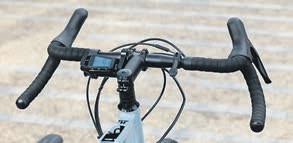



Bikes such as these must be even more commonplace in the future, whether you are suited and booted and wanting to arrive fresh for a day in the office, or just wanting to get out in the fresh air and enjoy the great outdoors, the Crosscore ticks so many boxes. Yamaha appears to have succeeded in stating that if the future is electric, it is also going to be extremely stylish.
As well suited to riding the Yamaha’s Wabash and Moro 07, these trail shorts are extremely flexible but only horizontally, the twoway stretch adding comfort to your ride without bagging down if carrying keys or phones in either of the two zip closure side pockets.
The generous waist allows for armoured shorts underneath with room once again for knee pads for the more spirited rides. Made from a showerproof Nylon Taslan fabric, the shorts do stave off water from either the sky or mudded towpaths and the seat is reinforced with an extremely durable material aiding grip whilst seated.
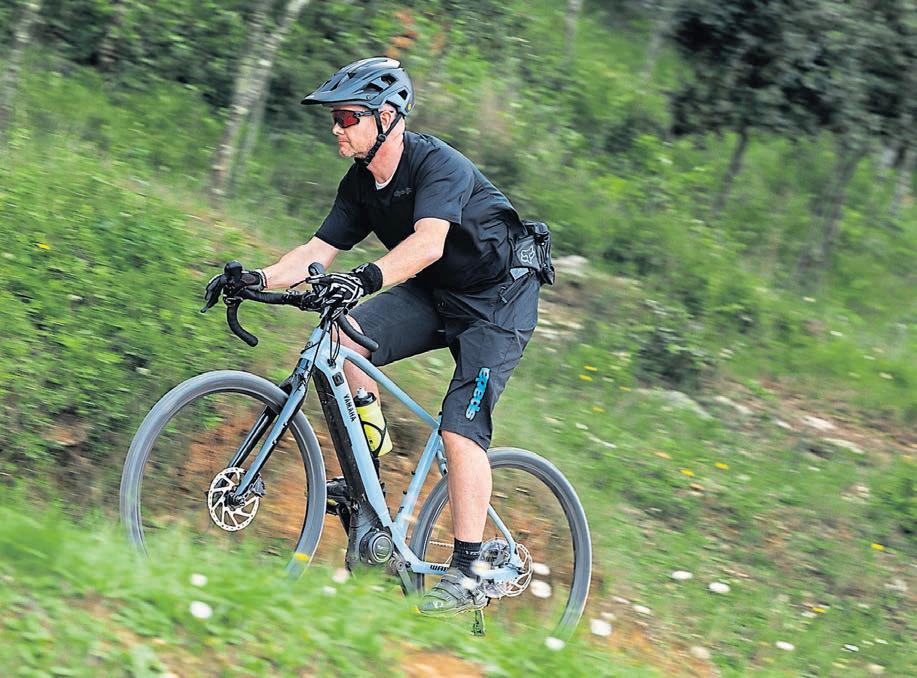
The Spada logo sits proudly down the left leg which completes a very stylish, well ventilated and light pair of MTB shorts that are bang on for the money. Just watch your sizing!
£69.99
www.spadaclothing.co.uk TECH SPEC WABASH
PRICE: TBC WEIGHT: 21.4kg Medium ENGINE: PW-ST Drive Unit (3.4kg) BATTERY: Lithium-Ion 500Wh, 36V, 13.4Ah POWER: 70Nm Max Torque SUSPENSION: Adjustable Suspension Dropper Post, 60mm (L/M) GEARSET: Shimano GRX TYRES: Maxxis Rambler (700x4C)
RT
WEIGHT:
ENGINE:
BATTERY:
POWER: 70Nm Max
SUSPENSION: SR
Travel)
GEARSET:
TYRES: CST C1996 (27.5 x 2.00)
PRICE: To be confirmed
23.9kg Medium
PW-ST Drive Unit (3.4kg)
Lithium-Ion 500Wh, 36V, 13.4Ah
Torque
SUNTOUR NEX-25C (63mm
Front
Shimano SL-M2010-9R
WORLD LAUNCH: YAMAHA MORO 07, WABASH RT AND CROSSCORE RC 49























You all know Cadwell Park. The tight, twisty, undulating circuit tucked in the Lincolnshire Wolds is one of the favourites of the British Superbike Championship calendar. But back in the day the circuit was just as well known for scrambling, and in 1964, 21,000 fans descended to watch the Motocross World Championship. Here’s number 22 Derek Rickman on his way to fifth place aboard his first generation Bultaco-Metisse.























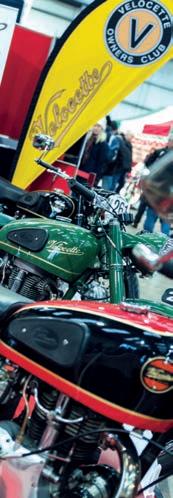
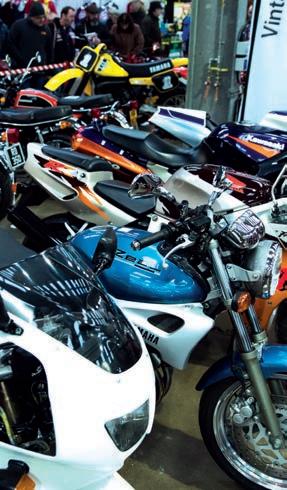

FROM THE ARCHIVE 51 For more incredible images, visit: www.mortonsarchive.com
Who is Maja?
Maja is an adventurer by heart. From a young age she thrived on the unknown, pushing the boundaries and exploring new frontiers whether in travel or in business. Her zest for life and adventure is contagious and inspiring. She is running a motorcycle tour business sharing her passion for travelling on two wheels and exploring the beautiful roads worldwide.
Originally from Slovenia, she has made North Wales her home for the last 20 years. Join Maja on one of her tours at www.majasmotorcycleadventures. co.uk

Aprilia Tuareg
Last August I had the pleasure of taking out the Aprilia Tuareg. Not just a quick spin but a proper, full-on, adventure-loaded trip all the way to Nordkapp and back to North Wales.


Over 5,000 miles to be done in just under three weeks, I knew I needed a bike that would be comfortable, would carry the luggage with ease and manage any non-Tarmac roads I was planning on riding in Sweden.
I knew the big adventure bikes would be more than suitable for the journey but I do like to do things a little bit differently. I was curious to see if a mid-size engined bike would be up for the job. This was even more interesting given that all the other bikes in the group were GS 1250 adventures, a KTM 1290 Adventure and a Ducati Multistrada V4S.
Riding up to our meeting point in Harwich, I felt very happy to be doing the motorway miles, albeit not very exciting, but the journey was very comfortable. I was getting to know the bike better and we cruised happily, covering some 280 miles. Arriving, feeling fresh, I suddenly thought I’d made a mistake as the big boys rolled in. The Tuareg suddenly looked a bit small, but it was the best-looking one.
Staying with the looks, I had the red one and I think Aprilia really nailed the colour. It’s not orange, it’s not bright red. It’s just a really cool shade of red/orange that I really like. Teamed with the black colour it makes the bike really pop. The front LED light is a recognisable Aprilia design which adds to the Italian flair.
The screen is nicely shaped and looks good, but it does not move and that was a problem. I’m 5’5” and the position of my head meant I was getting quite a lot of wind buffering around my head on the motorway. Ducking down made a huge difference to the wind noise but not so good for the posture.
The engine is a parallel twin 660cc, which was half of all the other bikes. But here’s the thing. Speed limits. And then there’s another thing. Norwegian speed limits. The Tuareg’s engine is super-responsive with plenty of torque. I was reaching speed limits in no time and then happily riding, with the help of the cruise control, at a chosen pace. Despite it being a twin, the bike didn’t shake as much as I expected it to. There were no pins and needles in my legs or arms after weeks of riding it.
Most of the roads were smooth Tarmac with perfect bends. Norway has the most perfect bends at a constant radius. Just lean the bike in and settle in that position until you exit the corner. No need for adjusting the direction. The bike loved the bends and when I pushed it as if it was a sports bike, it responded beautifully.
The TFT screen is big, colourful and easy to read. The rev counter was lighting up the screen and it seemed that Tuareg was grinning happily at higher revs.
I did wish it came with a quick-hifter, although that wasn’t a major problem, but once you are used to it, it’s hard not to have it.
Road riding on the Tuareg was easy and very comfortable, but I was keen to try some of the TET roads, especially in Sweden. I made sure I had appropriate tyres when I left the UK and was assured the Bridgestone AT41 was the one to go for. I didn’t hesitate as I run Bridgestone on my own bike and the AT41 ran brilliantly on the Tarmac and even better on the wet Tarmac. The couple of rainy days we had meant I was riding with confidence and didn’t have to slow down much. And they really delivered on the gravel tracks. I am quite new to going off the paved roads and was always very nervous of any gravel, but the combination of the bike and the tyres made the experience a fun one! I was going at a good pace, enjoying the gravel and didn’t feel nervous. I only want to do more of it now!
You can imagine the absolute delight and excitement at reaching the Globe at Nordkapp. This was our destination, yet only halfway through our journey. The bike started sounding a bit off, rattly and not very healthy. It didn’t take long to figure out it needed oil. I had to top up a lot of oil, which I thought was strange after only 2,500 miles. However, after that, it was keeping its level fine and we arrived back home without having to top up with more oil.
Speaking of checking the oil level, the Italians must have decided to go for style over function because there is no window to see where the oil level is. What the bike has is a dipstick. Which is black and that makes it a bit difficult to see where the oil level is. Somewhat frustrating when on the road with no bright light, and if you need to wear spectacles, like me.
After riding over 5,000 miles on the bike I must confess, I was sad to see it go. It was a brilliant
bike, more than capable of a long journey and an epic adventure. It kept up with the bigger bikes with no problem on all of the roads, even the German motorways. It carried me and my luggage effortlessly and it didn’t complain when I rode through puddles, on gravel, and on all the ferry crossings.
I did find it top-heavy though, and a bit high for me. I had to anticipate the stops and ensure I shifted my bum so the correct leg was ready to take the weight when we came to a stop. Nothing major and something I have quickly gotten used to. Because of the design of the tank and the tall stance it has, it does feel like a much bigger bike than a 660cc.
Overall I found it a very able bike, perfectly capable of big adventures as well as fun off road rides. It’s a good-looking and comfortable motorcycle I would happily add to my dream garage.
 WORDS and PHOTOS: Maja Kenney
WORDS and PHOTOS: Maja Kenney
52 QUICK SPIN



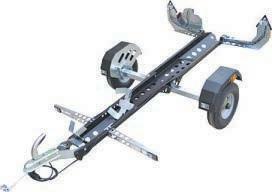



























































































































































































CHROMING PAINTWORK TRAILERS WEBWATCH ACCESSORIES SERVICES TYRES CLASSIFIEDS
Classified
For Sale
BMW R1200GS 2013 LC model, 49,000 miles, 2nd owner, everything works as it should, has ESC, ASC, ABS, engine modes, heated grips, tyre sensors, FSH plus many extras, £5700 Tel. 07930 338804.
BSA B40 1962, pre 65 trials bikes, full rebuild, alloy rims, stainless spokes Cub hubs, frame coated, alloy tanks, ready to trial, £4000. Tel. Dave 07583 532153. Staffs

HONDAXL185 S, 1979, genuine 8000 miles and only 3 owners from new, owned since 2005, partial renovation, all original, excellent clean condition, runs lovely, tax and MoT exempt, £2900. Tel. 07867 904777. Notts. Email. cliffbriggs2@ outlook.com
KYMCO XCITING 2021, 71 reg, FSH, no winter use, genuine 4990 miles, metallic blue, 400cc, maxi scooter 84 mpg, adjustable screen, mega comfy, Sat Nav, warranty, £4599. Tel. 07784 499299. Yorkshire.
NORTON 500T 1952, matching numbers road registered, £7000 Tel. 07919 064123. Lancs.

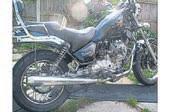
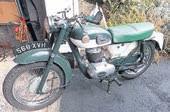
SYMSYMPHONY 125ccscooter, 2020, 4250 miles, serviced regularly at Sym dealers so still with three-year Sym warranty left, excellent unmarked condition, mine from new, these are really fantastic, well made little scooters, £1800 Tel. Mick 01803 770354. South Devon.
YAMAHA RD200 1981, 13,000 miles, tax & MoT exempt, used regularly, always garaged, good condition, history, £3000 Tel. 07732 582851.



YAMAHA RD125LC YPVS, 1987 Swiss import, nice honest bike, 7000 miles, rarer full fairing, new tyres, battery, fork seals, front brake resealed, rides lovely, full power stock bike, £3600 Tel. 07774 932264.
Parts For Sale
ROYAL ENFIELD 650cc

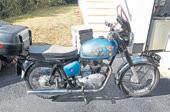
Interceptor/Continental parts for sale: 1 pair Hagon shocks, £95. Touring seat, £60. Alloy sumpguard, £40. 1 pair of Halcyon handlebar mirrors, £40.
DNA filter + plate, £50. Booster plug, £50. USB adaptor, £20. Engine guard, £40. Oil filter cap, £15. 1 pair handlebar risers, £30 all plus p&p Tel. Bill 07713 160796.
BSA GOLDSTAR singles, £20. BSA ISDT Golds Maudes Trophy, £15. British Racing Motorcycle, £15. Panther Single, 1950, £10.
MZ Motorcycle Mick Walker, £17.50. Haynes Military Jeep, 1940 onwards, £15 all new Tel. 01484 663007. West Yorks.
FRANCIS-BARNETT Cruiser 80, restored to excellent condition, everything works as it should, new tyres, proper raised digit number plates, pump, side stand, original handbook and rare alloy carb cover, easy starter and nice for roaming the country lanes here in Devon, sensible price of £2000, V5C and historic tax, more photos on request Tel. 01803 770354.
HONDAVFR750 1997,oneofthe last ones pre Vtec, only 12,000 miles, high rise bars, MRA screen, Givi monokey pannier system, recent Michelins and MoT, new battery, rides like a new bike, a few blemishes on the plastic, lovely bike, but I don’t ride it enough! Price reflects mileage, £2400 ono Tel. 07767 263165. Avon.
MATCHLESS G80S 1955, original paintwork, good tyres, luggage rack, leg guards, Digital regulator, gel battery, new Lucas SR magneto winding and wiring loom, new spare tyre and leather panniers included, £5450 ono Tel. Bob 01303 264972.
ROYAL ENFIELD Crusader Sport, 1966, fully restored by proper engineer about 10 years ago and used and maintained by me since, everything works, runs well, the bike is in excellent condition with the paintwork (Peacock Blue for those who like to know these things) and chrome really making this bike stand out, the modern handlebar screen and top box (with key) are easily removable with no adverse effects, V5C and historic tax, £2800 Tel. 01803 770354.
South Devon.
TRIUMPH 900 SPRINT 1995, owned for last 23 years, vgc, gorgeousrareNightshade,67,600 miles, new tyres, Varta AGM battery, includes some spares and full touring set of top box and panniers if required, £1400 Tel. 01621 778184. Essex.
DUCATI MONSTER 696 October 2009, 13,237 miles, three owners, FSH, original manual, both keys, 12 months MoT from July 2022, within last 500 miles airfilter,sparkplugs,newbattery, fork oil, new chain and sprockets, timing belts, wheel bearings, fork seals, steering head bearings, £3500 Tel. 07889 733115.

AFTERMARKET SEAT to suit Honda CX500, excellent condition, no damage whatsoever, like new, £50 ono Tel. 07717 742550.
BMW R800 Mono gearbox for spares and repairs, £50 prefer collect-heavy.BMWK1100frame, V5 reg, 1996, £75, collect only.
Loads of K11 parts-short engine block-crank/pistons/rods, £50, tell me what you need project left overs Tel. 07704 831089. North Somerset, J20-M5.
HONDA Africa Twin XRV750, original oil cooler, etc condition, £25 Tel. 07749 558220. Cheshire.
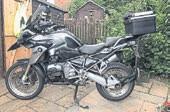
SUZUKI GSR1052 1986 to 1990 engine carbs, ignitor unit coils, pickups other parts available, sensible offers Tel. 01543 370720. Walsall.
WORKSHOP CLEAROUT BMW R800 mono gearbox, for spares and repairs, £100 prefer collectheavy. BMW K1100 frame V5 reg 1996, £75 collect only. Loads of K11 parts-short engine blockcrank/pistons/rods, £50 tell me what you need, project leftovers Tel. 07704 831089. North Somerset J20 M5.
Wanted
BMW K1100 need cam buckets 2.75 require five, and 2.70 require two, have other larger sizes if you need to swop out Tel. 07704 831089. North Somerset, J20 M25.
HONDA THE WINNING YEARS £15. Honda The Complete Story, £10. Nazi Isle of Man TT, 1939 Victory, £12. Stanley Woods 1st Motorcycle Superstar, £20. History Clubmans TT races, 1947-56, £20, all new Tel. 01484 663007. West Yorks.
MOTORBIKE BOOKS: 17 of, Harley Davidson Classic British Bikes Encyclopedia Motorcycles Classic Motorcycles Ultimate Motorcycle Hot Bikes History of the Motorcycle, 14 hard backs, 3 soft back, good condition, £20 the lot Tel. 01482 898930. East Yorkshire.
TRIUMPH TIGER Sport 1050, 2018, crash bars, top box and racks, handguards, Sat-nav bracket, cool covers, seat cover, exhaust, tail pipe, genuine parts, £400 ovno buyer collects Tel. Steve 07969 181499. Cheshire.
MOTOGUZZI V35 Nevada, 1994, 13,800miles,smallscreen,rack/ backrest, pannier bags, engine bars, Hagon shocks, MoT, side and center stands, vgc, £2200 ono Tel. 07913 032864. Email. moorend4@hotmail.com Yorkshire.
SUNBEAM S8 1954, rebuilt, 1984, all original wheels and reg number, good order call for more info, £4500 Tel. 07932 652136.
Suffolk.
TRIUMPH TT600 2000, genuine 25,000 miles, full MoT, excellent clean condition, all original, with polished alloy swing arm, excellent runner, £1900. Tel. 07867 904777. Notts. Email.
cliffbriggs2@outlook.com
TRIUMPH THUNDERBRID 2002, 900, green, gold, 11,400 miles, immaculate, new coils, good tyres, chain, Deluxe seat, screen, saddle bags, good starter, runner, no rust, corrosion centres stand carrier, £6000 Tel. 07434 513161. Lancashire.
TRIUMPHSPRINT, 2003, 18,528 miles, good runner, very clean, just too big for me now, £2500. Tel. 01646 602298.

SUZUKI 1127L 1990, good condition for year all OEM panel’s showing 20,000 miles, brought before lockdown for something to do, rides as it should great power the best model of slingshot, £5000 ono Tel. 07774 932264.
VELOCETTE MAC 350 1955, fully restored ten years ago, hardly used since, recent tank renovation (cost £700) and carb refurb, excellent clean original condition, tax & MoT exempt, £5500. Tel. 07867 904777. Notts. Email. cliffbriggs2@outlook.com
KAWASAKIZ1300 1977 to 1980 parts carb model starter motor ignitor unit fuse box, switch gear, tank badges, fuel tap, Kawasaki Workshop manuals, gasket tool kit, other parts available Tel. 01543 370720. Walsall.
MOTO GUZZI accumulation sell of V50 850T-T3 Californian etc late spoke wheels, Agostini seat unit sell off as one lot, offers, Benelli L/h side panel 500L, pair of early Krauser panniers Tel. 07833 806288. Essex.
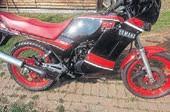
SUZUKI GS250 1982, frame complete, Honda CG125, 1982 engine and many parts Tel. 07951 099354. Southend-onSea.


CLASSICMOTORCYCLE wanted any make or age from a box of bits to a mint machine British or Jap decent price paid Tel. Colin 01514 470147.
LEATHER MOTORCYCLE JACKET Rocker era, 1960s, wanted any condition, good price paid. Waxed cotton jacket or coat similar age also wanted Tel. 01223 350289 evenings. Cambridge.
Miscellaneous
ASHY real leather motorcycle jacket, size 48 colour, black, excellent condition, £100. Tel. 07958 441132. Norfolk.
WORKSHOP MANUAL genuine Honda 90 Workshop Maintenance Manual, very good readable condition, a few fingerprints, £15. Genuine Triumph Tina Owners Handbook and full book of service vouchers, good condition, £5. Kawasaki by Mick Walker, ISBN 1855322994 excellent, £15. The BSA Goldstar Book by Bruce Main Smith, 1974, very good complete clean condition, ISBN 0904365018 £45. Honda C70 Owners Manual, original, complete good condition, £12. Owners Handbook for Velocette Viceroy, original very good condition, £7, all including postage to UK, contact for further details Tel. 01803 770354. Devon.
Selling your bike is FREE for private readers Choose one of the following methods: 1 ONLINE www.morebikes.co.uk 2 EMAIL freeads@morebikes.co.uk 3 POST MB Reader Adverts, Media Centre, Morton Way, Horncastle, Lincs LN9 6JR
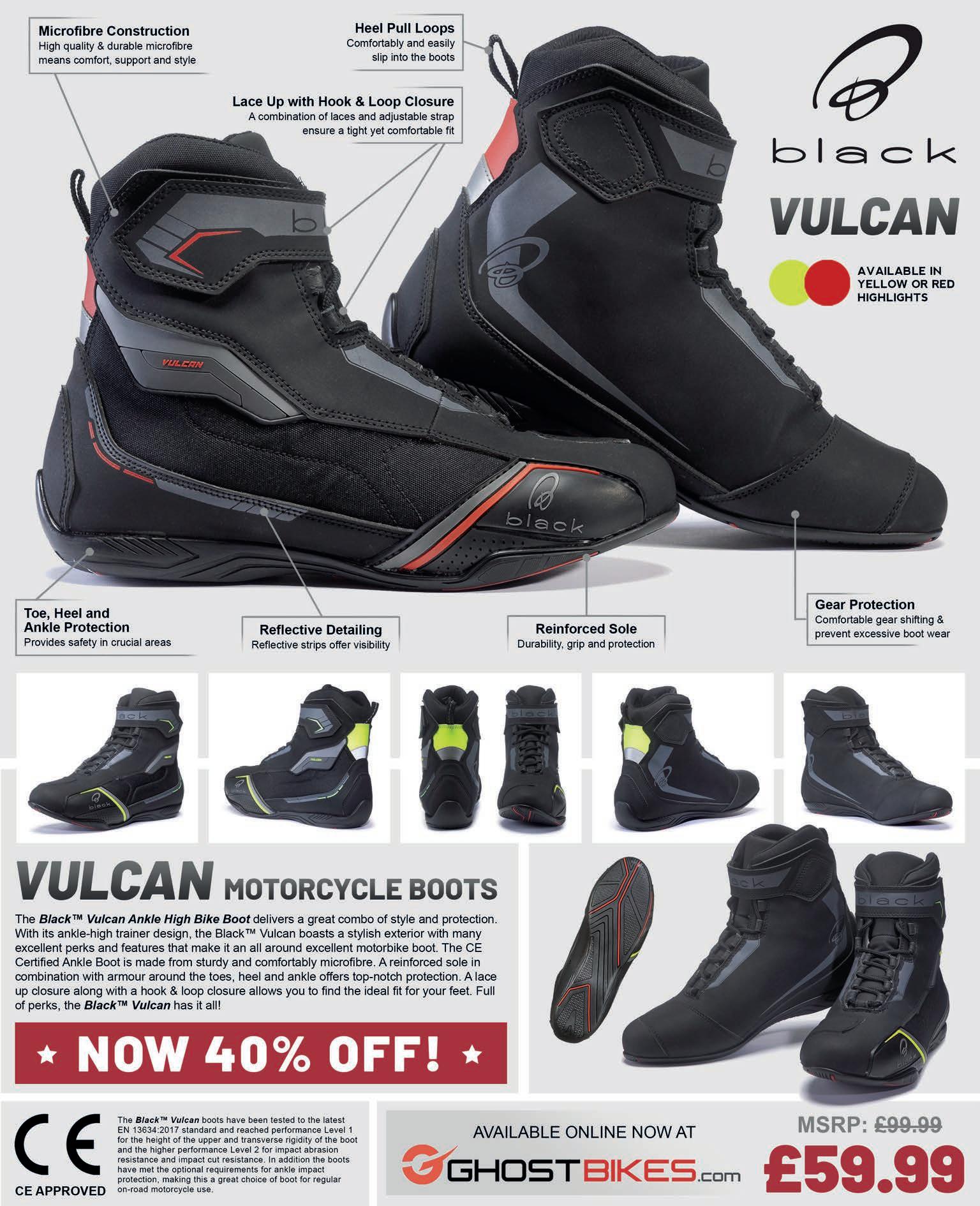
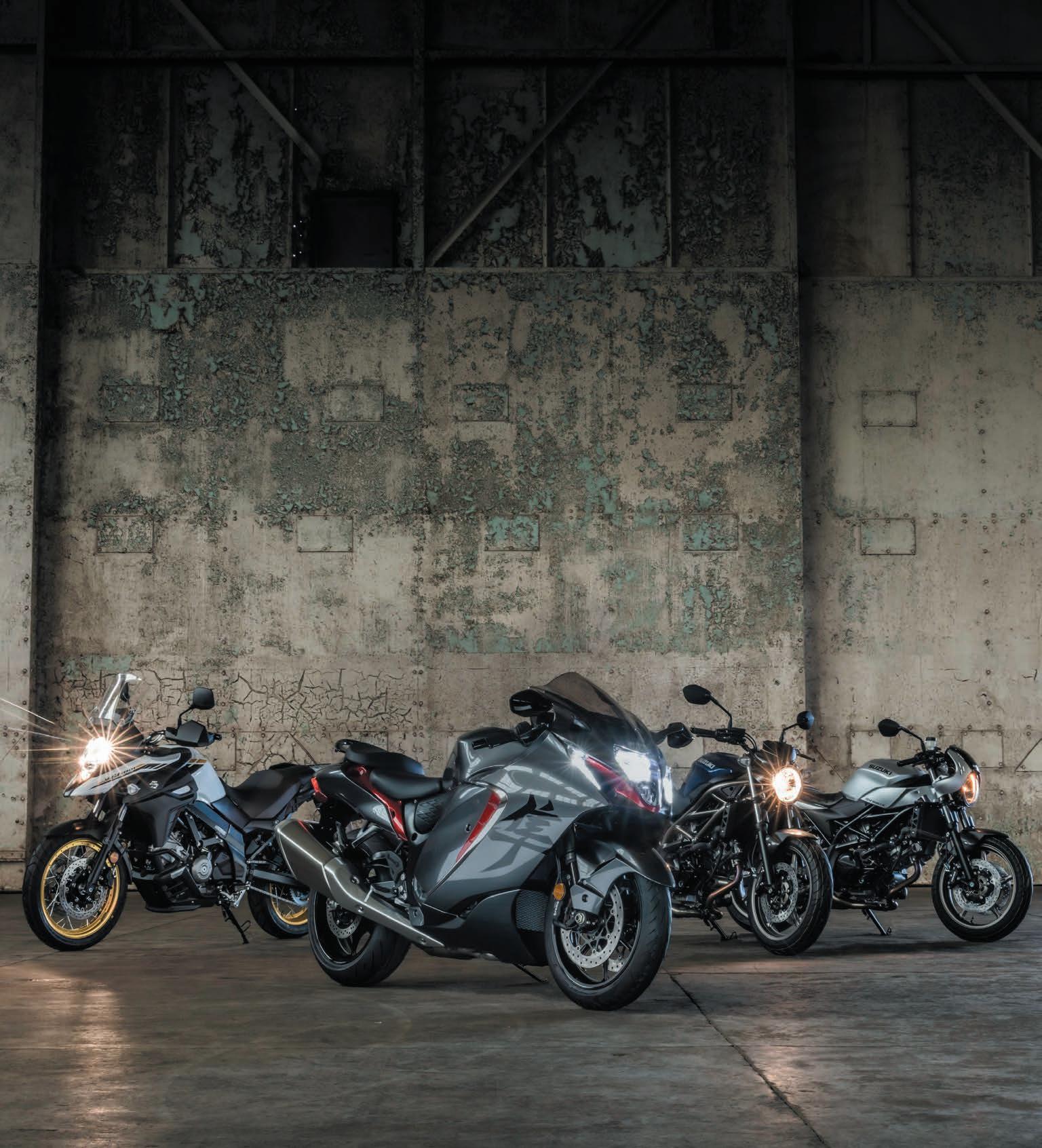


































































































































































































































































































































































 We love the funky paintjob on Sparky’s 2010 Yamaha R6
Jay Coddington’s lean and mean Suzuki GSXR
Neil Wilson’s Moto Guzzi V85TT. One of our favourite bikes of the past few years… love that thumping twin
Bradley Parr’s immaculate MV Agusta Brutale 910
Kevin McCabe’s Kawasaki ZX6R. “Eighteen years old and still turning heads!”
Paul Colson’s Norton Commando Café Racer flies the flag for Britain
Dan Whelan’s Yamaha R6 looks ready for some trackday fun
Bellissimo. Mark Willis’ sensational Ducati 1098 soaks up the sun
Richard Cooper’s Suzuki DT175G from 1980 standing proud on Bournemouth Seafront. “After a 40-year gap I recently purchased this US import and it’s the best thing I have done in years.”
Geoff Stowe’s got quite a collection. Here’s his 1990 Suzuki GSXR 1100, 2004 Aprilia RSV Factory, 2012 MV Agusta 1090RR Brutale, and 2001 V11 Moto Guzzi. Which one would you choose?
Matt Woodall’s Aprilia V60R. “Seventeen years old, no electronics or abs, just a thumping V-Twin and awesome handling.”
photos
pride and joy
We love the funky paintjob on Sparky’s 2010 Yamaha R6
Jay Coddington’s lean and mean Suzuki GSXR
Neil Wilson’s Moto Guzzi V85TT. One of our favourite bikes of the past few years… love that thumping twin
Bradley Parr’s immaculate MV Agusta Brutale 910
Kevin McCabe’s Kawasaki ZX6R. “Eighteen years old and still turning heads!”
Paul Colson’s Norton Commando Café Racer flies the flag for Britain
Dan Whelan’s Yamaha R6 looks ready for some trackday fun
Bellissimo. Mark Willis’ sensational Ducati 1098 soaks up the sun
Richard Cooper’s Suzuki DT175G from 1980 standing proud on Bournemouth Seafront. “After a 40-year gap I recently purchased this US import and it’s the best thing I have done in years.”
Geoff Stowe’s got quite a collection. Here’s his 1990 Suzuki GSXR 1100, 2004 Aprilia RSV Factory, 2012 MV Agusta 1090RR Brutale, and 2001 V11 Moto Guzzi. Which one would you choose?
Matt Woodall’s Aprilia V60R. “Seventeen years old, no electronics or abs, just a thumping V-Twin and awesome handling.”
photos
pride and joy








 Royal Enfield has made accessorising the Hunter easy with two packages, or themes, that contain a selection of goodies each.
Urban theme consists of a bench seat; compact engine guards; LED indicators; sump guard; bar-end mirrors and tail tidy, all in black; as well as a tinted fly screen.
Royal Enfield has made accessorising the Hunter easy with two packages, or themes, that contain a selection of goodies each.
Urban theme consists of a bench seat; compact engine guards; LED indicators; sump guard; bar-end mirrors and tail tidy, all in black; as well as a tinted fly screen.




















































































































































 Does this wallet-friendly commuter scooter hold its own against some tough competition?
Does this wallet-friendly commuter scooter hold its own against some tough competition?






































































































 WORDS and PHOTOS: Maja Kenney
WORDS and PHOTOS: Maja Kenney

































































































